HYPER NOISE AESTHETICSAnnoyance and Its Allowances in the Age of the Digital Surveillance State Noise nourishes a new era. Michele Serres, The Parasite Now I would like to look more specifically at the possibility of further developments in noise art aesthetics concerning where becoming-imperceptible and becoming-perceptible nimbly interact. As sketched out in my book Immersion Into Noise, the evolution of visual noise art develops from certain pre-historic cave areas and baroque grottoes, to certain levels of mannerist and counter-mannerist complexity, to noisy spatial renderings in various exuberant architectural styles, then into cubism, futurism, dada, fluxus and other 20th century avant-garde movements, into the screech of techno-logical noise art, and into the softness of software noise art aesthetics. As noted earlier in my “After After Words,” what is important in the art of noise aesthetics is its intentional and elongated invisibility1 and enigma. That is why this subject is so hard to write about. The very topic is a very difficult one to pin down and make intelligible for good reason. The art of noise is an art of disbelief in habitual codes of practice and understanding. You must take the art of noise on its own terms or risk doing violence to the art. Noise art is not a set of homogeneous practices, but a complex field converging around perceived weaknesses in the art system. Such a noisy hyper-cognitive stance happens when the particularity of electronic connectivity is seen as part of an accrual total system by virtue of its being connected to everything else—while remaining dissonant. Noise aesthetics is a complex and ambiguous political gazing, and its theory of an art of resistance and investigation would be increasingly valuable to an analytical social movement based on skepticism. This is so as it counters the effects of our age of simplification: effects which have resulted from the glut of consumer-oriented entertainment messages and political propaganda which the monstrous mass media feed us daily in the interests of corporate profit. The noise art aesthetic of the monster sacré (read Minóy) is that of dissonant immersion into a maelstrom of glossolaliaic unintelligibility, chaos and exaltation. The art of noise style is a way of seeing/hearing that reverses the order of figure/ground2 to ground/figure. It collapses being into non-being (ontological implosion). It creates ambivalent aleatory3 processes that are true to our inner essential world: dynamic pools of expansion and disintegration. The art of noise is that screech amid the collapse and extension of aesthetics connected to immanence and transcendence (where art is in the process of becoming-imperceptible-perceptible), facing the merging of figure into environment and environment into figure. We can find moments of this screech of collapse-extension in contemporary complexity theory and in some areas of information technology, nano-technology, cognitive science, and biotechnology. These moments of collapse-extension accompany the contemporary development where the static image has become dynamically engaged with the human imagination and personal choices of the viewer—in some cases, literally engaging the participation of the viewer (who becomes what I have elsewhere renamed as the viewpant) 4 to the point of physical interactivity. In other cases they are engaged conceptually (or post-conceptually) by looking long and hard at the art. I believe that the forms of this aesthetic post-conceptual participation can be a decisive element in offering generative possibilities of development that will continue to be interesting and supportive of the gazing-commons. The unwanted becoming-perceptible trend is likewise evident if we consider another aspect: the spread through social media technologies of content that uses visualization and data monitoring—for example, systems that survey and process in real-time preferences and movements of viewpants via mobile networks. So process-based data monitoring design and algorithmic architecture have now passed through the experimental phase and begun to have anti-commons practical uses. What we have witnessed for art through this development, coupled with relational art aesthetics, is on the one hand a spilling over towards entertainment, and on the other a growing integration with fast data monitoring surveillance. In defense of the individual-based commons, my theory of the aesthetics of an art of noise encourages data monitoring deferral, where the search is rewarding in itself. Seen as too difficult by some, for me the paucity of clean art at a fast glance conceals the riches of associational gazing with respect to the combinatory dynamics of leisurely layered creations (read/hear Minóy). In that regard, consider the large quantities of subtle kinds of noise that have proliferated since electricity, especially so since the onset of the information revolution at the end of the 1970s. With it came a low impact noise emitted by every kind of electrical appliance, contributing to the white-noise dense texture of our acoustic environment.5 Such a post-industrial white noise environment is ambiguously omnipresent and mostly subliminal. My suggestion for art noise aesthetics is, I believe, fully able to render sensible the white noise sequencing when it uses subliminal latent excess in its presentational mode. Because such an excess overload of representation offers us a measure of freedom of choice in how we unpack it (or not). The greater amount of stimulation-information needed,6 the greater the uncertainty that the “message” (proposition) offers. That is why my preference has been for semi-abstract, palimpsest-like work, like Minóy’s, that contains subliminal latent excess. It has greater freedom of choice, and greater uncertainty, due to an excess of information via the ground/ figure catastrophic collapse. My concern here is with the ethical and liberating use of representation (and anti-representation) within the broader image environment. In attempting to represent the monster sacré aesthetic as non-representable (because the hugeness of post-industrial white noise is ubiquitous and subtlely present), art should obliterate the proper object of re-representation. This stress on the alterity and ineffability of noise that eludes our fuzzy grasp is what hyper-noise art is about. The term hyper-noise is my theory of noise art as constructed via connected-competing vectors and figure/grounds. 7 This concept owes something to Quentin Meillassoux’s idea of hyper-Chaos that was sketched out in his book After Finitude: a form of absolutization where nothing is impossible or unthinkable.8 It must be grasped that hyper-Chaos is not just disorder, but that it also may produce order and stability, even little static worlds, as well as the complete destruction of what is. Hyper-noise art refuses easy consumption and encourages love, because a love for noise art will make perturbing events in your life more tolerable. It will make you able to see and hear more and make you more adaptable to disturbance, rather than being torn up about them. It will help you to avoid psychic ossification by loving latent expanse. Hyper-noise art can thus be referred to the aesthetics of the sublime, which, in the 18th century, was connected with the grandness of natural phenomena. Generative hyper-noise art is perhaps the most evident example of this hyper-noise sublime opportunity, as post-conceptual generative art serves to produce unpredictable results, both when it is based on arithmetic instructions contained in code, or in other ritual rules. So hyper-noise software art means primarily some form of generative or semi-generative art, in which the artist establishes the operational tenets/choices that are calculated to act autonomously or semi-autonomously. The above-mentioned white-hyper-noise dense texture of our acoustic environment, with its uniformity and lack of variance, suggests to me a possibility of connecting ourselves psychically to the great chain of being (that which proceeds us and of which we are a part) through contemporary art. However, this requires an active imagination that is aided by the visualization properties offered up in the art of noise. This potential of noise art aesthetics is embedded in the recognition of our sheer potentiality: all the selves we have within to develop or burn out. All the worlds we might create or destroy. Hyper-noise art shows us that we are more diverse than we had imagined, and more tolerant. It points out that what we have in common is a dangerous propensity for overrating our powers of comprehension. But noise art aesthetics is hostile to generalizations. It is recalcitrant by design. It affirms with jubilation our state of varied mutability. That is my general standard of excellence for it. Noise art aesthetics tears our phallogocentricism apart to confront the diversity in us, and in each other. This lesson is a necessity and the recognition of this necessity is part of the peculiar pleasure that noise art affords us—a pleasure clearly of rapturous abandonment where the intended effect is an inner liberation by means of de-simulation. Noise art aesthetics opens up in us a sense of possibility that we understand and feel at one and the same time to be both dangerous and indispensable. It points us towards the perilous turbulences and chancy exhilarations that pass through us: overcast, heartbroken, eloquent passages that pull us apart even as they discharge pent-up repressed forms of accepted common wisdom. So, my initiative for a hyper-noise art aesthetic is not a swoon to an intricate inner violence. Rather, it has the look and sound more of analogue: like that of the delicately puckered anus that we each own but do not face to a cosmogony of expanding orifice that keeps reminding us that we were left behind. So noise aesthetics is a return to the shifting ground on which music and art rests. The art of noise gives us a sense of discovery that marked music and art’s beginning. It is an alternative, phantasmagorical way to express the agitation between form and the ground. It dislodges art and music from their customary formal frameworks and makes them thrillingly intense again. The art of noise is beautiful negativity. But understanding noise aesthetics may be too limited a goal here, as the art of noise attempts to expresses the unsayable. Or perhaps all it says is: WAKE THE FUCK UP (sounding a wake-up call). But that is far from nothing. So perhaps this idea of an art of noise is a psychotic outburst that disrupts smooth image operations with an explosion of buried visual hysteria that promises a highly diverse world. Its incomprehensibility by design connects the commons to our unconscious mind and inner feelings through what I think to be a type of chaos magic.9 Through a variety of techniques often reminiscent of Western ceremonial magic or indigenous shamanism, many practitioners of chaos magic believe they can change both their subjective experience and objective reality. Although there are a few techniques unique to chaos magic (such as some forms of sigil magic10), chaos magic is often highly individualistic and borrows liberally from other belief systems. In this way, some chaos magicians consider their practice to be a meta-belief. Chaoist noise art creates the visualization bridge between form and intuition, as its uncertain images have more information in them than a clear certain image (or sound) has, where the information quickly becomes redundant. Thus noise art gives rise to new thought. It promotes the emergence of new forms of an old story: art. As mentioned above, what is important in the art of noise is its intentional enigma. It needs to be obscure to the degree that its codes cannot be discerned. This phantasmagorical obscurity and mystery is desirable in a world that has become increasingly data-mined, mapped, quantified, specialized, and identified in a straightforward matter-offact way. This will for enigma is the basis for discovering and entering into an immersion into the art of noise. 11 Such aesthetic enigma is alluring when intelligible mining-type data processing is perceived as hollow, trite, and insensitive. Its goal is to disrupt instrumental logic and contradict, counteract, and cancel out false reason and hollow feeling. What also interests me profoundly with art of noise aesthetics is the extent to which it urges the mind towards transformations. Here art is the infinite space of hyper-chaos imagination. A hyper-chaos art noise includes principles of networked connections and electronic links that give multiple choices of passages to follow and continually new branching possibilities. Instead of stressing the reflective limits imposed by the category of art, the art of noise aesthetic may attempt to specify the resistance embodied within it. So noise art’s counter to the spectacle’s misery consists in not forgetting or denying spectacle, but in an interruption of it with a phantasmagorical semi-remembering of pre-spectacular suffering through which human grief is at one and the same time relived and relieved. Suffering and joy, like figure and ground, are here tied together, neither one without the other. Thus noise art aesthetics suggest and produce stress in us—one might even say an urgent anxiety of disintegration. So dedication to its merits, if there are any, might well be described as vaguely heroic, because noise art aesthetics suggests the revelation of a plentiful nihilistic life force. Thus noise art aesthetics can be as creative as it is destructive. Or they imply an endless struggle between the two. In that sense it is a cul-de-sac of ill communication (vacuole)12—the communication of enigma it-self. Indeed, phantasmagorical falsifications of the self (again, read/hear Minóy) are highlighted by noise art’s non-representation ability—its refusal to participate in the world of the clear and precise, with its massive data banks, clone-like lifestyle models and ideological conceptual camps. When we have become too complicated to clarify and order, but too accepting of the administrations of our existence, noise art aesthetics offers a certain path of socially acceptable withdrawal. I mean here a boomeranging figure/ground withdrawal that provides the means for secretly re-identifying ourselves. So noise art experience has something that words risk diminishing. Nevertheless, I obviously have felt that I must take that risk because if we are to continue to live among electronic vibrations that mine us, it may be helpful to talk back against them. But yes, noise art aesthetics is the transmitter of unspeakable secrets. That is why art noise matters. It wants more from us. Moreover, it teaches us to want more from art. It teaches us to look deeper, to hear more, and to trust the inner noise. 1 This parallels the fact that in many data facilities, servers are loaded with applications and left to run indefinitely, even after nearly all users have vanished or new versions of the same programs are running elsewhere. At a certain point, no one is responsible anymore, because no one, absolutely no one, wants to go in that room and unplug a server. 2 The characteristic organization of perception into a figure that “stands out” against an undifferentiated background, e.g., a printed word against a background page. What is figural at any one moment depends on patterns of sensory stimulation and on the momentary interests of the perceiver. 3 Aleatoricism is the incorporation of chance into the process of creation, especially the creation of art or media. The word derives from the Latin word alea, the rolling of dice. 4 See Joseph Nechvatal, Immersive Ideals/Critical Distances (Lambert Academic Publishing, 2009), 56. One of the wider implications for art in viractual space is the proclivity to solicit the theoretical viewer/participant (what I call the “viewpant”) to respond to the work in both a contemplative and physical way, or at least in an implied tension between these two poles when one side outweighs the other. It is important to remember that the viewpant is involved often with a series of different levels of immersion in a dynamic emergent continuum. 5 For more on this see R. Murray Schafer, The Soundscape: Our Sonic Environment and the Tuning of the World (Rochester, VT: Destiny Books, 1994). 6 The New York Stock Exchange produces up to 2,000 gigabytes of data per day that must be stored for years. 7 Joseph Nechvatal, Immersion Into Noise (Ann Arbor: Open Humanities Press/MPublishing, 2011), 31. 8 Quentin Meillassoux, After Finitude: An Essay on the Necessity of Contingency, trans. Ray Brassier (London: Continuum, 2008), 64. 9 Some common sources of inspiration for chaos magic include such diverse areas as science fiction, scientific theories, ceremonial magic, shamanism, Eastern philosophy, and individual experimentation. 10 The sigil concept was mostly popularized by the artist Austin Osman Spare, who published a method by which the words of a statement of intent are reduced into an abstract design; the sigil is then charged with the will of the creator. Spare’s technique, now known as sigilization, has become a core element of chaos magic. For more on Austin Osman Spare, see my essay “On Austin Osman Spare,” in Joseph Nechvatal, Towards an Immersive Intelligence: Essays on the Work of Art in the Age of Computer Technology and Virtual Reality (1993–2006) (New York City: Edgewise Press. 2009), 40–52. 11 As an example, see/hear Marina Rosenfeld’s Cephissus landscape (2002), an immersive noise work that undermines the central notion of “surround-sound” technology by locating viewers in an environment with no fixed center and numerous temporary sonic sweet spots where short bursts of mingled electronic and acoustic sounds intersect and decay in expanding concentric circles that suggest oscillate landscapes. 12 This is a reference to Gilles Deleuze’s (1925-1995) notion of the vacuole. This concept of noncommunication comes from Gilles Deleuze, “Postscript on the Societies of Control,” October 59 (Winter 1992): 3–7. Deleuze’s notion of control is connected to information-communication technology—a concept he pulled out of the work of William S. Burroughs (1914-1997). A vacuole is like a sac in a cell’s membrane, completely bound up inside the cell but also separate from it. Vacuoles play a significant role in autophagy, maintaining an imbalance between biogenesis (production) and degradation (or turnover) of many substances and cell structures. They also aid in the destruction of invading bacteria or of misfolded proteins that have begun to build up within the cell. The vacuole is a major part of the plant and animal cell. See also Nechvatal, Immersion Into Noise, 14. taken from:
0 Comments
Joseph Nechvatal, editor
THE AESTHETICS OF AN OBSCURE MONSTER SACRÉ
Joseph Nechvatal
In the beginning was the noise.
Michele Serres, The Parasite
loading...
Recently in my book Immersion Into Noise1 I mapped out a broad-spectrum of aesthetic activity I call the art of noise by tracing its past eruptions where figure/ground merge and flip the common emphasis to some extent. Immersion Into Noise concludes with a look at the figural aspect of this aesthetic lodged within the ground of consciousness itself.2 For me, the obscurity of Minóy exemplifies well a general noise aesthetic needed now within our broad-spectrum data-monitoring info-economy environment of background machine-tomachine gigabyte communication murmur3 in which we now find ourselves. Minóy is a good example of the speculative reality of noise music aesthetics4 in our era of algorithmic globalization.
This reflection on Minóy is somewhat of a reaction to what some interesting contemporary philosophers have been saying about contemporary art. Most notably, the surprising talk “The Next Avant-Garde” that the philosopher Graham Harman gave at the Aesthetics in the 21st Century conference at the University of Basel in September 2012, which engaged me with the recent speculative realism5 turn in continental philosophy and aesthetics. In that talk Harman criticizes Relational Art,6 calling it convivial art, so as to circle back to the formalist, media-specific aesthetics of the art critic Clement Greenberg, where art objects are free of the “tyranny of context.” This supposed context freedom merges efficiently with Harman’s theory of Object Oriented Ontology (OOO), 7 but seemed somewhat at odds with his proclaiming that “there must be a new avant-garde in every field” that we cannot predict. His return to the formalist, media specific aesthetics is hard to swallow in terms of avant-garde ideals. Harman then touched on the subject of figure/ground relations (the main focus of my own noise art aesthetic theory) in terms of anthropomorphic free, flat ontology without going very far in addressing the human specialness8 (relationality) involved in viewing certain artworks. I mentioned to Harman, à propos, the irony of the intense dislike that Greenberg had for the late last work of Jackson Pollock, when Pollock went semi-representational, playing with indeterminate states of figure/ground ambiguity—for example, Jackson Pollock’s portrait of Jane Smith, No. 7 (1952), that I saw numerous times at her home, now owned by the Metropolitan Museum of Art. In his talk, Harman touched on the subject of figure/ground relations in the context of the anthropomorphic-free, flat ontology that emerged as part of the debates within the Speculative Realism movement. He coupled this figure/ground discussion with a Greenbergian medium-specific version of the Object-Oriented Ontology defense of an ontology of objects (rather than processes). This was a welcome tonic in a relationally committed, but miserable, Europe of depressed post-convergent labor. I found remarkable his defense of objects amid the soaring (some would say souring) contemporary art trend of relations (de-aesthetized and dematerialized). Yet Harman failed to adequately account for the human singular (non-anthropomorphic-free) aspect involved in experiencing the art of noise, with its reversals in the order of figure/ ground. Without a rethinking of human singularity, I suggest that this omission conceals a concern for relational power, as we know from the life of Clement Greenberg. With the officially sanctioned support9 and celebration of relational dematerialization (celeb-commodified into a brand – and co-opted by the star-state-socio-economic system that is its life blood) the relational aesthetic10 is no longer an idealized mode of art activity that (supposedly) accepts the full range of all human relations as art in opposition to private objects and spaces. That has petered out, found now often unsympathetically aloof: afloat within relational administrative systems of power.11 The ideal of artistic exploration12 of the full range of all human relations is clearly untenable at this administrative level—and obscure, singular human intimacy pays the price. The relational artist as catalyst13—by means of flighty creations of intentionally stuplime14 works that fluctuate between sculpture, music, film clips and small Fluxus-like events—has turned the artist into a star-impresarioentrepreneur: a very specific, limiting and quasi-domineering human relation. Coupled with fun-house-laboratory work based in an aesthetic paradigm of aloofness that is so cool it verges on cold, the relational art star is placed firmly back at the top-center of things and torn away from art that creates a social environment in which people come together to participate in a private-but-shared activity that is openended, interactive and resistant to closure.
loading...
I would make the case for a return to the art object as post-conceptually scalable and mutable (as opposed to art as process alone) that owes something to Harman’s OOO object (stopping short of his context freeness) because the inherent detachment of work-in-progress post-medium practice, shorn of any deep commitment to medium specificity, seems to inscribe a limiting condition of superficiality on the artist while bestowing media success—a truly Mephistopheles-like metaphysical situation that, as Claire Bishop has suggested, “seems to derive from a creative misreading of poststructuralist theory: rather than the interpretations of a work of art being open to continual reassessment, the work of art itself is argued to be in perpetual flux.”15
Also, I have been following closely the public proclamations of another philosopher on art, Simon Critchley. Critchley described in 2010 contemporary art’s dominant trend as an in-authenticity of “mannerist situationism” based in rituals of reenactment.16 Critchley goes on in 2012 to describe the circumstances further, as the “cold mannerist obsessionality of the taste for appropriation and reenactment that has become hegemonic in the art world.”17 So things have gotten no better. Clearly something deep-seated must be reevaluated. And art aesthetics is more interesting when it does the work of shifting meaning. So I am declining here Critchley’s urging for contemporary art to focus in on the monstrous, as, in my opinion, that parody of gloomy general dystopia only plays into the extreme spectacle aspect of mannerism. To be fair, Critchley doesn’t explain what or who he means by the monstrous, but when I think of the monstrous today I think of the high visibility of Lady Gaga (and her little monsters), extreme Hollywood lowbrow movies, and grotesque far right political claims and postures. No, here I am only interested in a new contemporary aesthetic labor based in a certain exquisite untouchability, and unseeablity—Minóy’s obscure monster sacré affinity of disconnectedness, which focuses on an impregnable divalike commitment to a nihilistic aesthetic of becoming imperceptible18 (á la Ad Reinhardt blackness, but one that takes you into embodied and embedded resonance perspectives, into radical immanence, and away from extreme pure abstractions). I am interested in an exquisite monster sacré aesthetic for Minóy (where personal anthropomorphic eccentricities and indiscretions are tolerated) that is bent on combining the neo-materialist19 vibrant world with a wider vision of political awareness including private spiritual, ecstatic or numinous themes accessible through the generative subjective realm of each individual; an aesthetics of perception-politics based on resonance (not a politics of visibility) which reveals in minute particulars the full spectrum of the extensive social-political dimension. This monster sacré affinity is a materialist nihilism of no that (if it goes far enough) can transform a metamorphosis (subject to the flickering formative forces of emergence)20 into an all-embracing yes of delicate abhorrence.21 So I am advocating here not the passive and thus incomplete nihilism of form, but a generative and virulent and curative nihilism that unleashes forces of reverberation to emerge and resonate like a web of inter-connected, molecular and viral relational affects and intensities that traffics in dissonance, deviation, and the incidental. But what specifically can we glean for art from this instability and resonance of covert nihilism? In what kind of regimes of attraction/repulsion can the resonant nihilistic art object participate, and what may it do differently from other signs and objects? To these questions I offer a countertheory to OOO’s formalism, a theory of à rebours22 exchanges of figure/ground relationships: a nimble art that emphasizes human and non-human entanglements. This is an art that depends on playing out nihilistic negativity by intensifying its forces into an affirmative nihilism. This nimble nihilist bracketing pushes the audience towards open defamiliarizations, challenging them to think outside of the normal system of human consciousness. In this way it is favorable to OOO aesthetics. So this art as nimble monster sacré is implicated in the very type of problematic instability that the “self” undergoes in Nietzsche’s thought: the cohesiveness of the culture/state distinction, like the cohesiveness of the self/other distinction, disintegrates with the ontological instability produced by the annihilation of the real as distinguishable from the illusory. With a nimble art of noise— based in the distinction between active nihilism and passive nihilism (or monstrous nihilism)—we can depict the underground vigor of form as an active verve that can only be speculated upon by thinking beyond the discursive.
The embeddedness of our inner world—the life of our imagination with its intense drives, suspicions, fears, and loves—guides our intentions and actions in the politicaleconomic world. Our inner world is the only true source of meaning and purpose we have and nimble exquisite gazing23 (that involves self-investigation) is the way to discover for ourselves this inner life. So we might consider now that, in contrast to our frenzied data market surveillance culture,24 that which trains us to fear the atrocious eyes of outer perception, a protracted and absorbing gazing art (like Minóy’s) could encourage the development of agile clandestine exchanges based on the embedded individual intuitive eye in conjunctive contact with an abundant optical-mnemonic commons (not cloud)25 that shares a sensibility for building a force. What I mean by optical-mnemonic commons is a visual memory of possible shared futures, a mnemonic gazing at that intersubjective affinity that we share as the cooperative common ground of sociality: that shared common ground that precedes community. Such a commons of exchange is what has to be built politically through the creation of innovative individual-polis assemblages; new modes of organization of the individual-collective from which all could benefit.
Of course this sphere of anti-purist gazing-commons (essentially a cooperative rejection of the tyranny of labels, essential identities, privileged abstractions, and fixed ideas) is what allows art to construct unstable distinctions between subjects and objects that embrace the entire spectrum of imaginary spaces—from the infinitude of actual forms to formless voids of virtuality. Subsequently my interest here is in anti-pure nimble artists like Minóy who challenge and sometimes exchange the hierarchy of figure and ground (figure and abstraction) through struggles with noise. Certainly globalization is all about world space, so noise art aesthetics here will continue to be thought of in terms of spatialization: dimensions, areas, and territories. What space does noise clear and what space does noise clog? How does noise function as an attractor for a gazing-commons and as a repellent in the monstrous era of global data mining and the digital surveillance state? How can monster sacré aesthetic thought help us to think and live differently within our smooth and surveyed spaces through art? How can we live more intently and intensely in our imaginary cosmos of pleasure rooted in the non-closure of a gazing-commons aesthetic, with its yearning for otherness in the non-appropriative mode? By not ignoring the differences between the personal and the political, but on the contrary, by showing how these differences resonate together in unpredictable and contingent ways to form, in the words of Gilles Deleuze, 26 planes of consistency from which new political concepts can be formed. So what does the brand contemporary art presently suggest for a gazing-common aesthetic? Not much, yet. Julian Stallabrass argues27 that behind contemporary art’s multiplicity and apparent capriciousness lies a monstrous bleak uniformity and that this amounts to making culture uncurious, timid, and stupid in the service of a big business ethos of unquestioning consumer conformity. Also, Stallabrass purports that the unregulated insular contemporary art market seeks to dupe newbie art rubes into being enthusiastic participants in the dumbing-down values useful to big business—values which address all communications to the lowest common denominator of the monstrously massive. So, the obvious question is: what about art’s responsibility of resistance? Perhaps surprisingly, for me the answer is to be found within the challenge of a noise style based in resistance through the cultivation of invisibility. 28 So I want to argue for an agony of style of logo invisibility, and the importance that should be given within noise art aesthetic struggles for a gazing-commons. The principle of constructing patterns of infinite becomings is perhaps inherent in avant-garde artistic tradition (avant-garde values). Graham Harman suggested as much. But this avant-garde now, I think, should be considered in terms of noisy invisibility not ontology, as deviating from the regularities of visible normality provides the avant-garde new sources for artistic production. Certainly, the values of the avant-garde have always been interfering with the channels of artistic production and reception, and these values are responsible for expanding the forms and definitions of art itself.29 But like in nature, noise in art plays a productive role in the invisible life of a system when it stresses becoming-imperceptible. But a becoming-imperceptible-invisibile monster sacré, today can no longer be a form of enfant terrible withdrawl, akin to Marcel Duchamp’s strategic invisibility,30 but rather a phantasmagorical plunge into what Félix Guattari expresses as the chaosmosis. 31 In that sense, Minóy’s becoming-imperceptibly noisy is an event for which there is no immediate representation. The art of noise marks a qualitative transformation into a non-place where being and non-being reverse into each other, unfolding out and enfolding in their respective outsides. This short-circuit causes a creative conflagration typical of the art of noise. Let’s consider the difference between noise art (based on an individual’s inner vision) verses the monstrous mass machine data market,32 with its digital functionalism. For me the difference is in looking into and projecting onto something—thereby discovering an emerging manifestation based in invisibility—as opposed to looking at something. In that sense it requires an active slow participation on the part of the viewer—and noise style demands as much. For me this requires the use of hidden mental participation and, as such, is now essential in our climate of monstrous mass media in that it plays against the grain of given objective consensus visibility. I believe that Minóy’s deep droning palimpsest soundscapes exemplify what I have been theorizing above, the aesthetics of an obscure monster sacré. They suggest a spectral relationship between landscape and sound that accomplishes sensations of haunting dark ambience. They provoke dense planes of feelings, disrupted and veined by withdrawal and partial absence. They suggest a poetics of night. And of difficulty—one that explores both the outer space of presence and the inner space of remembrance, where a haunting perspective shatters both linear temporality and accounts of embodied emplacement.
1. Joseph Nechvatal, Immersion Into Noise (Ann Arbor: Open Humanities Press/MPublishing, 2011).
2. This involves a question of the qualities (and levels) of awareness of our own consciousness within aesthetic realms which we are capable of attaining through noise art. 3. Stupendous amounts of data generated by nearly one billion people are set in motion each day as, with an innocuous click or tap, people download movies on iTunes, check credit card balances through Visa’s website, send e-mail with files attached, buy products, post on Twitter, or read newspapers and art theory papers online. 4. Noise Music in general traffics in dissonance, atonality, distortion, incidental composing, etc. This music begins with Luigi Russolo’s reti di rumori (networks of noises) music that he performed on his intonarumori noise instuments and with his text “The Art of Noises: Futurist Manifesto,” in Christoph Cox and Daniel Warner, eds., Audio Culture: Readings in Modern Music (London: Continuum, 2004). For more of the history of noise music, see Paul Hegarty, Noise/Music: A History (New York: Continuum, 2007) and Nechvatal, Immersion Into Noise, 39–47. 5. Speculative realism is a movement in contemporary philosophy which defines itself loosely in its stance of anti-correlationist metaphysical realism against the dominant forms of post-Kantian philosophy or what it terms correlationism (meaning philosophies that apprehend being and the world via human-centered lenses, where any understanding of being and the world is always correlated to what it means for or to humans, or how insight into being and the world looks, feels, etc., is shaped according to human perspectives). While often in disagreement over basic philosophical issues, the speculative realist thinkers (such as Harman, Ray Brassier, and Quentin Meillassoux, among others) have a shared resistance to philosophies of human finitude inspired by the tradition of Immanuel Kant. 6. Relational art or relational aesthetics is a mode or tendency in fine art practice originally observed and highlighted by French art critic Nicolas Bourriaud. Bourriaud defined the approach simply as a set of artistic practices which take as their theoretical and practical point of departure the whole of human relations and their social context, rather than an independent and private space. The artist can be more accurately viewed as the “catalyst” in relational art, rather than being at the center. 7. Object Oriented Ontology (OOO) is a metaphysical movement that rejects the privileging of human existence over the existence of nonhuman objects. Specifically, OOO opposes the anthropocentrism of Immanuel Kant's Copernican Revolution, whereby objects are said to conform to the mind of the subject and, in turn, become products of human cognition. In contrast to Kant’s view, object-oriented philosophers maintain that objects exist independently of human perception and are not ontologically exhausted by their relations with humans or other objects. 8. Art’s coherence stems from human values and symbolic systems and the role of the beholder, and thus is, and must be, correlational and anthropocentric. 9. Curators promoting this “laboratory” paradigm include Maria Lind, Hans Ulrich Obrist, Barbara van der Linden, Hou Hanru, and Nicolas Bourriaud. 10. Established by Nicolas Bourriaud, now director of the École Nationale Supérieure des Beaux-Arts in Paris. 11. 2013 examples include Philippe Parreno’s Anywhere, anywhere out of the world at the Palais de Tokyo, Pierre Huyghe’s retrospective at Le Centre Pompidou, The Dia Art Foundation- sponsored Gramsci Monument by Thomas Hirschhorn, and Tino Sehgal’s win of the Golden Lion for the best artist in the International Exhibition Il Palazzo Enciclopedico in the Venice Biennale. 12. Artists included by Bourriaud under the rubric of Relational Aesthetics include Rirkrit Tiravanija, Philippe Parreno, Carsten Höller, Henry Bond, Douglas Gordon and Pierre Huyghe, among others. 13. See “The Menagerie Entertains,” my review of the Pierre Huyghe Retrospective at Le Centre Pompidou in The Brooklyn Rail, December 18, 2013: http://www.brooklynrail.org/2013/12/ artseen/pierre-huyghe-the-menagerie-entertains. 14. In Chapter 6, “Stuplimity,” of her book Ugly Feelings (Cambridge, MA: Harvard University Press, 2005), Sianne Ngai offers this term as a necessary reaction to new, primarily postmodern objects of analysis, a term that acknowledges stupidity and boredom as part of the sublime expression connected to the postmodern art experience. 15. Claire Bishop, “Antagonism and Relational Aesthetics,” October 110 (Fall 2004): 52. 16. Simon Critchley, “The Faith of the Faithless: Experiments in Political Theology,” Dance Politics & Co-Immunity Workshop, Giessen, Germany, November 12, 2010. See also Simon Critchley, The Faith of the Faithless: Experiments in Political Theology (London: Verso, 2014). 17. Simon Critchley, “Absolutely-Too-Much,” The Brooklyn Rail, August 1, 2012: http://www.brooklynrail.org/2012/08/art/absolutely-toomuch. 18. “Although all becomings are already molecular, including becoming woman, it must be said that all becomings begin with and pass through becoming-woman. It is the key to all the other becomings. . . . If becoming-woman is the first quantum, or molecular segment, with the becomings-animal that link up with it coming next, what are they all rushing toward? Without a doubt, toward becoming-imperceptible. The imperceptible is the immanent end of becoming, its cosmic formula”: Gilles Deleuze and Félix Guattari, A Thousand Plateaus: Capitalism and Schizophrenia, trans. Brian Massumi (Minneapolis: University of Minnesota Press, 1987), 279. 19. Manuel DeLanda coined the term “neo-materialist” in a short 1996 text, “The Geology of Morals: A Neo-Materialist Interpretation,” Virtual Futures 95 (1995), where he treats a portion of Deleuze and Guattari’s A Thousand Plateaus in order to conceptualize geological movements. For more on neo-materialism, see Manuel DeLanda’s interview in New Materialism: Interviews & Cartographies, eds. Rick Dolphijn and Iris van der Tuin (Ann Arbor: Open Humanities Press/ MPublishing, 2012), 38. 20. In philosophy, systems theory, science, and art, emergence is the way complex systems and patterns arise out of a multiplicity of relatively simple interactions. Emergence is central to the theories of integrative levels and of complex systems. 21. For a musical comparison, see “The Beauty of Noise: An Interview with Masami Akita of Merzbow,” in Cox and Warner, eds., Audio Culture: Readings in Modern Music, 59–61. 22. The meaning of à rebours is against the grain. Also, À rebours (1884) (translated as Against Nature or Against the Grain) is a decadent novel by the French writer Joris-Karl Huysmans. Its narrative concentrates on the tastes and inner life of Jean Des Esseintes, an eccentric, reclusive aesthete and antihero who loathes bourgeois society and tries to retreat into an ideal artistic world of his own creation. 23. Gaze: to look long and intently. Gaze is often indicative of wonder, fascination, and revelation. 24. For example, take the blandly named Utah Data Center, National Security Agency. A project of once immense secrecy, it is the final piece in a complex puzzle assembled over the past decade. Its purpose: to intercept, decipher, analyze, and store vast swaths of the world’s communications as they zap down from satellites and zip through the underground and undersea cables of international, foreign, and domestic networks. Flowing through its servers and routers and stored in near-bottomless databases are all forms of communication, including the complete contents of private emails, cell phone calls, and Google searches, as well as all sorts of personal data trails—parking receipts, travel itineraries, bookstore purchases, and other digital transactions. It is, in some measure, the realization of the “total information awareness” program created during the first term of the Bush administration—an effort that was killed by Congress in 2003 after it caused an outcry over its potential for invading Americans’ privacy. For more on this trend, see James Bamford, The Shadow Factory: the Ultra-Secret NSA from 9/11 to the Eavesdropping on America (New York: Anchor Books, 2009). 25. The term “cloud” is generally used to describe a data center’s functions. More specifically, it refers to a service for leasing computing capacity. 26. Gilles Deleuze (1925-1995) was one of the most influential and prolific French philosophers of the second half of the twentieth century. Deleuze conceived of philosophy as the production of concepts, and he characterized himself as a “pure metaphysician.” In his magnum opus Difference and Repetition, he tries to develop a metaphysics adequate to contemporary mathematics and science— a metaphysics in which the concept of multiplicity replaces that of substance, event replaces essence, and virtuality replaces possibility. Deleuze also produced studies in the history of philosophy (on Hume, Nietzsche, Kant, Bergson, Spinoza, Foucault, and Leibniz), and on the arts (a two-volume study of the cinema, books on Proust and Sacher-Masoch, a work on the painter Francis Bacon, and a collection of essays on literature.) Deleuze considered these latter works as pure philosophy, and not criticism, since he sought to create the concepts that correspond to the artistic practices of painters, filmmakers, and writers. In 1968, he met Félix Guattari, a political activist and radical psychoanalyst, with whom he wrote several works, among them the two-volume Capitalism and Schizophrenia, comprised of Anti-Oedipus (1972) and A Thousand Plateaus (1980). Their final collaboration was What is Philosophy? (1991). 27. See Julian Stallabrass, Contemporary Art: A Very Short Introduction (Oxford, UK: Oxford University Press, 2006). 28. Perhaps this should not be surprising given that the hidden complexity of a basic internet transaction is a mystery to most users: Sending a message with photographs to a neighbor could involve a trip through hundreds or thousands of miles of Internet conduits and multiple data centers before the e-mail arrives across the street. 29. For more on this, read my essay “Viractuality in the Webbed Digital Age,” M/E/A/N/I/N/G Online #5, 25th Anniversary Edition (2011): http://writing.upenn.edu/pepc/meaning/05/meaning- online5.html#nechvatal. 30. Duchamp's entire artistic activity since the “definitive incompletion” of the Large Glass in 1923 was an exercise in strategic invisibility, giving rise to objects and events which—because they were apparently too impermanent or unimportant or insubstantial, or because they eluded established genre conventions, or because they confused or diluted authorial identity—evaded recognition as “works of art.” 31. Félix Guattari said in his noteworthy book, Chaosmosis: An Ethico-Aesthetic Paradigm, the work of art, for those who use it, is an activity of unframing, of rupturing sense, of baroque proliferation or extreme impoverishment that leads to a recreation and a reinvention of the subject itself. 32. To support all that digital activity, there are now more than three million data centers of widely varying sizes worldwide, according to figures from the International Data Corporation.
taken from:
loading...
Joseph Nechvatal, editor
THE OBSCURITY OF MINÓY
Joseph Nechvatal
Is it so a noise to be is it a least remain to rest, is it a so old say to be, is it a leading are been. Is it so, is it so, is it so, is it so is it so is it so.
Gertrude Stein, Tender Buttons
Solitude, that dread goddess and mater saeva cupidinum, encircles and besets him, ever more threatening, more violent, more heartbreaking—but who today knows what solitude is?
Friedrich Nietzsche, Human, All Too Human:
A Book for Free Spirits
But he still did not know who he was . . .
Michael Knerr, The Sex Life of the Gods
He was feeling his way through obscurities.
Aldous Huxley, Mortal Coils
loading...
The initiative behind this book and CD has been developed as a project to rescue Minóy from obscurity. Therefore, in the shadow of eldritch Priest’s essay “Obscurity and the Poetics of Non/Sense,”1 I would like to explain a bit of how the Minóy project emerged out of obscurity, while simultaneously promoting the aesthetics of obscurity.
In large measure, we owe a debt of gratitude to my coproducer, Phillip B. Klingler (PBK), for its existence. Phillip had known Minóy since 1987, when Minóy was at the peak of his audio creativity. Phillip had been reading reviews of his music in the cassette underground press, notably pieces in Option and Sound Choice, where critics were calling Minóy a master of sound collage and a must-hear maximalist. Phillip sent Minóy a letter and ordered some tapes from him, but nothing quite prepared him for the unique world of Minóy’s music. In private correspondence, Phillip explained to me what Minóy’s dense musical abstractions meant to him, and how he perceived them. He described Minóy’s noise music in obscure terms, which is appropriate, as the origin of any sound in a Minóy track is most often indiscernible, thus creating an otherworldly abstract experience. Phillip found the work “dream-like, nightmare-like, but also sometimes spiritual,” and Minóy’s sound affected him deeply. Phillip (a painter at the time) sent Minóy his first sound experiments—and they were met with positive, validating comments from Minóy. Consequently, they started talking on the phone frequently. They had both been involved in the mail art scene, so were already on common collaborative sharing ground. In the mid 1980s, Phillip had been exhibiting his paintings around the L.A. area, obsessed with moving deeper into abstraction. When he heard Minóy’s music, he knew that the abstract possibilities with sound expression were nearly limitless—and Minóy provided an artistic model for him. Through their developing relationship (he collabo rated live with Minóy in Torrance, California and worked very closely with him throughout 1987 into 1988, making something like ten albums together under different names), he discovered that Minóy would stay up for days and nights on end without sleep, very excitedly, and compulsively, creating artworks and music. After that, Minóy would spend days in bed, depressed and non-communicative.
1 eldritch Priest, “Obscurity and the Poetics of Non/Sense in the Writings of Raymond Roussel and Fernando Pessoa,” Mosaic 45.2 (June 2012): 1–17.
Through this creative process, Phillip discovered that as dense as Minóy’s music could often be, it was created with rather limited instrumentation: electric guitar, synthesizer, shortwave radio, and a Sony Pro Walkman. The only effects unit he used was a beloved Radio Shack spring reverb. Minóy didn’t use the common four-track recorder to overdub his sounds, and instead he dubbed back and forth between several Boom Boxes and cassette recorders that he would place in different proximities around his room. Minóy would do this over and over until he had achieved the spatial audio effects he desired.
As Phillip recounted to me, 1986 was the first year Minóy obsessively documented his sound works. The results were 33 full-length albums created in a twelve-month period. This manic, compulsive need to create more and more art—where ideas flow into work after work—would typify Minóy’s working method. During a fevered six-year period (between 1986 and 1992) Minóy created hundreds of cassette albums. Minóy defined the concept of mail collaboration, which suited his personality and his phobias well. (As I previously mentioned, he was an agoraphobic, didn’t like to travel and could not drive a car.) Minóy was addicted to his mailbox and would receive huge stacks of mail. He even adopted the name No Mail On Sundays for his collaborative project with Damian Bisciglia, a reference to their mutual postal addiction. Phillip (PBK) performed live with Minóy at the University of California, San Bernardino, in 1988—a show that became scandalous. Minóy had a colorful cloth that he had draped over his head and shoulders, his nails were painted black, and one could not see his face at all. He was doing a sort of Butoh-inspired strange, slow dance, while howling some anguished mashup of Somewhere Over The Rainbow and, ironically, I Get By (With A Little Help From My Friends). Campus crusaders shut the concert down, turning the sound system off after only fifteen minutes onstage, but the noise music continued for an hour, played through their own amps. This has been documented with a tape called Devil Music: Minóy Live (cassette released on the Nihilistic Recordings label in Holland).2 The press clearly loved the scandal (no surprise there), but events like this made Minóy acutely aware of how unacceptable and misunderstood his creative works were by society at large—how obscure he really was. This concert led to a dissipation of PBK’s and Minóy’s creative energies in collaboration, and they never worked together again. Phillip didn’t correspond with Minóy after that, but he was aware of Minóy’s activities in the noise underground. Their solo works appeared together on many tape compilations from that time.
loading...
When Phillip came online around 2000, it was basically known amongst mutual friends that Minóy had dropped out and was not making music any more, and he had also completely stopped corresponding with his music friends. It has now become known that it was in 1992 that Minóy wrote to a close collaborator, Zan Hoffman, informing him that Minóy Cassette works (his DIY label) was over, writing (as Amber Sabri shares in her memoir in this volume),
My soul has dried up and blown away. I can no longer feel joy but only constant mental and physical (psychosomatic, so it seems) pain. We are three non-functioning people alone in the void of the Minóy house, sanctuary become prison. See and hear us go bump in the night in the day in the night in the day. It’s all the same. No exit. Now we scream help.
After 1992, nothing else was heard of (or from) Minóy.
In 2012, Phillip started doing some intense internet research and came upon a posting that Minóy’s partner, Stuart Haas, had made on an obscure mail-art site. It said Minóy had died in 2010. With Minóy’s old house address, Phillip was able to get the phone number and he called it. Stuart picked up and they talked as easily as if twenty years had not passed. Stuart told him about the sudden illness that had taken Minóy’s life.
Having learned all of this within a few hours, Phillip became very concerned about the master tapes: did Stuart still have the tapes? Stuart said, “no, we threw all those out.” Phillip hung up, with only Stuart’s email address in hand, but following up by email proved more encouraging as Stuart later recanted, stating that he had kept any tapes that Minóy had written master on. Phillip was elated and wanted to help. He suggested helping digitize and archive the Minóy tape collection, yet didn’t hear back from Stuart on this for quite some time. Eventually, Minóy and Stuart’s good friend, Amber Sabri, stepped in to help. Amazingly, she had the complete collection of tapes Stuart had saved. In June 2013, Phillip received three large boxes via UPS. Opening those boxes, for Phillip, was like finding the Holy Grail. In the boxes were all (or all of what was left) of Minóy’s master tapes: his life in music, his legacy, everything that the man obsessed over and the things that made him famous in the 1980s cassette network. The first thing Phillip did was physically count and document every tape in those boxes. There were at least twenty five lost works: just the jewel-case/insert with titles and credits, but no tape inside. There were a number of cassettes with no written documentation on them at all. Some masters were missing completely, as there are tapes listed on the Discogs website3 that were not found in the archive. Using all that information, Phillip was able to compile the definitive Minóy discography—and it totals 208 releases. Because of all the mystery behind Minóy’s self-imposed exile, the boxes settled a lot of questions about Minóy’s creative output, especially the late period works. Still prolific in 1991, he completed almost fifty full-length albums. In 1992 there were a little over twenty, six in 1993, and in 1994 only one was found. It was the late period works that were most interesting to us for this project, as the fact that anything after 1992 even exists was extremely fascinating. Amber Sabri related to Phillip how Minóy’s parents had moved into his house (actually into the large three-car garage) and had brought all their worldly belongings with them, so now with his parents there, plus Stuart, it might have been very difficult for him to feel comfortable creating his music, even as his parents enjoyed and admired his art and music. Amber describes it as a “happy and functioning situation for all four of them. Stuart worked full-time as an aerospace engineer and the parents took over the household chores.” But for whatever reason, Minóy’s eerie vocalizations disappear in these last recordings. But why did he stop all together in 1994? It may have been in part the changing technology—away from cassette to digital formats (like the CD)—that was furiously happening at that time. But Amber tells me that she believes Minóy at this moment was disenchanted with making music altogether, that he felt betrayed by certain noise musicians, and that he really meant it when he said he was finished with the world as a musician. As his illnesses worsened (exacerbated by thirty years of medication treating his pain, panic, mania and paranoia, plus his morbid obesity), the creation of sound art consumed too much of his energy. He became physically less able to create anything in any form that required physical movement. As Amber recalls, Minóy’s father died in early 1991 and his mother’s paranoid schizophrenia became impossible to handle at home so they moved her into an assisted living facility. Minóy steadily became more and more ill and Stuart became more and more overwhelmed with working full-time, caring for him full-time, and trying to maintain all the duties of a household. It was at this point that Minóy—now calling himself Haint—turned to making digital art from within his bed. As Phillip expressed to me, Minóy’s late works seem very stern, with an angry edge to them, “ponderous structures, with sounds buzzing around, moving in little ways within a confined space, they are claustrophobic”—and that makes sense, given his situation. For this project (this volume you now hold in your hands, or are reading on-screen, plus the cassette and CD released from punctum records titled, simply, Minóy), Phillip combed through the archive in search of shorter compositions that would represent the oeuvre. This was a challenge, as the vast majority of Minóy’s compositions are of running time between thirty to forty-five minutes in length. As Phillip articulated to me:
Listening to Minóy’s music is sort of like watching a movie: it takes you on a journey, the twists and turns can’t be anticipated because nothing repeats, the structure is always in flux until it ends. The sounds aren’t literal. They’re metaphoric only in the most abstract way. These long, elaborate pieces were essential to Minóy’s aesthetic of a cinema of the ear, allowing him to explore outside of time restrictions that would apply to avant-garde sound artists working in the shorter LP format.
Yet Phillip and I were not interested in editing longer compositions down to excerpts for this project. We were more interested in compiling a collection of his shorter works from different time-frames in his career, thus allowing a listener to come away with a greater sense of Minóy’s achievements, and thus also the bigger picture of what Phillip calls his “musical genius.”
taken from:
loading...
Joseph Nechvatal, editor
MINÓY AS HAINT AS KING LEAR
photographs by Maya Eidolon
loading...
loading...
taken from:
to be continued...
loading...
With projects such as Clock DVA and The Anti Group, Adi Newton investigated the philosophical, esoteric and political resonances of the relationship between music, technology and image. Conversation with one of the greatest sound alchemists of all time
We publish the interview to Adi Newton contained in Chaos Variation III , the 12 "+ SD Card vinyl edition by Obsolete Capitalism and the same Adi Newton / TAG (The Anti-Group) just published by Rizosfera . Translation from English by Claudio Kulesko. We thank Rizosfera and Obsolete Capitalism for availability.
loading...
Obsolete Capitalism: We begin the conversation by working on the concept of intensive and a-programmatic bifurcation. A cartography of your long and astonishing artist itinerary leads us to identify two main floors. In our opinion, we are dealing with two macro-environments in which it is possible to divide your theoretical-sound research and your audio-visual pragmatics: the first of these environments is the Piano- Clock Dva , the second is the piano- Anti Group, often collected in the acronym TAG / TAGC. In between, many interesting collaborations, almost as a corollary of an intersection with the two artistic intervention plans mentioned above. The two macro-environments you have created are certainly intersecting, but they are also strongly divergent. In your audio-alchemical laboratory, at what point of personal and artistic research does the bifurcation between Clock Dva and Anti-Group begin, and what rhythm, or interval, can we attribute to them?
Adi Newton: Of course there is always a connection between things. Consider the theory of morphic resonance of Rupert Sheldrake. "The morphic fields of social groups connect the members of the group to each other even miles away, providing communication channels through which organisms can remain in contact with each other despite the distance. They help us provide an explanation for telepathy. Today there is strong evidence that different animal species are telepathic, and that telepathy appears to be a fairly common means of animal communication. Telepathy is normal, not paranormal, and is natural, not supernatural: it is also common among people, especially among people who know each other well. The morphic fields of mental activity are not confined to our heads. They extend well beyond our brains, through intention and attention. We are already familiar with the idea that fields extend beyond the material objects in which they are rooted: as in the case of magnetic fields propagating beyond the surface of the magnets; the gravitational field of the Earth extends well beyond the earth's surface, keeping the moon within its own orbit; the fields of a cell phone extend far beyond the telephone itself. In the same way, the fields of our minds extend far beyond our brains "(Sheldrake, 1981). the fields of a cell phone extend far beyond the telephone itself. In the same way, the fields of our minds extend far beyond our brains "(Sheldrake, 1981). the fields of a cell phone extend far beyond the telephone itself. In the same way, the fields of our minds extend far beyond our brains "(Sheldrake, 1981).
Here is a summary of the properties of the morphic field, as described by Rupert Sheldrake: "At each level of complexity, the hypothesized properties of the morphic fields can be summarized as follows: 1) These are self-organizing totalities. 2) They possess both a spatial and a temporal aspect, and organize spatio-temporal patterns of vibratory or rhythmic activity. 3) Attract the systems in their sphere of influence towards models and forms of characteristic activities, of which they organize the coming-in-being, and of which they maintain the integrity. The goals, or objectives, towards which the morphic fields attract the systems placed under their influence are called attractors. The paths through which, usually, the systems reach these attractors are called creodi. 4) They interconnect and coordinate the morphic units, the holons, located within them, which, in turn, become whole organized by the morphic fields. The morphic fields contain within them other morphic fields, structured according to a certain hierarchy, or olarchy. 5) These are probability structures, and their organizational activity is probabilistic. 6) They are equipped with an integrated memory, produced by self-resonance with the past of an internal morphic unit, and by morphic resonance with all previous analogous systems. This memory is cumulative. The more certain patterns of activity are repeated, the more they tend to become habitual "(Sheldrake, 1981). The morphic fields contain within them other morphic fields, structured according to a certain hierarchy, or olarchy. 5) These are probability structures, and their organizational activity is probabilistic. 6) They are equipped with an integrated memory, produced by self-resonance with the past of an internal morphic unit, and by morphic resonance with all previous analogous systems. This memory is cumulative. The more certain patterns of activity are repeated, the more they tend to become habitual "(Sheldrake, 1981). The morphic fields contain within them other morphic fields, structured according to a certain hierarchy, or olarchy. 5) These are probability structures, and their organizational activity is probabilistic. 6) They are equipped with an integrated memory, produced by self-resonance with the past of an internal morphic unit, and by morphic resonance with all previous analogous systems. This memory is cumulative. The more certain patterns of activity are repeated, the more they tend to become habitual "(Sheldrake, 1981). This memory is cumulative. The more certain patterns of activity are repeated, the more they tend to become habitual "(Sheldrake, 1981). This memory is cumulative. The more certain patterns of activity are repeated, the more they tend to become habitual "(Sheldrake, 1981). So, from what we can understand, the information, once conceptualized and conceived, begins to resonate outwards, as if it were a wave in propagation, informing other receivers that they will end up having the same ideas. A concept, an idea, then, will inform other ideas, so the morphic resonance, the etheric vibration, the connectivism, the collective unconscious, can all partly explain the phenomenon for which certain events develop simultaneously in different topographical locations, within different cultures and in different languages, as can be seen in the arts, sciences and many other fields. From my point of view, therefore, my work is not only interconnected with sound, or with music, but also with art and science, and with other systems of thought and practices such as magic, alchemy and philosophical-spiritual beliefs. All this informs my ideas and my practices in the fields of art, painting, film production, or creative audio.
The Anti-Group, «The Delivery», Atonal Festival 1985
Let us now talk about the productive unity and its "excessive" side. Here the excess is understood as a wealth of themes, plurality of perspectives, multiplicity of theories juxtaposed in the assembling plane, and of the articulation of the involved languages - sound, image, text. Since its first appearance as The Anti-Group / TAGC - the first two years (1985/1986) at the Atonal festival in Berlin, for example - the synaesthesia between these three aspects of art remains your authorial signature - or your fundamental modus operandi- that produces that «surplus» that we translate as «excess of discourse». It is a matter that is not known as "schematising" or storing, then as today, within a single object of fruition, or of a precise discursive category - be it in the form of disc, film, video or performance, or all four things together. How has your approach to mixed media developed, and what motives, or intensity, have "forced" you to present your artistic projects with this discursive surplus?
From an early age, and throughout my life, my main interest was painting; I look at art, theater and cinema, from the privileged perspective of a painter. I work starting from an intuition: «An absolute can not be given by intuition, while all the rest derives from the analysis. Here we call intuition the sympathy with which one enters an object in order to coincide with what it has of the unique and, therefore, of inexpressible. On the contrary, analysis is the operation that leads the object back to elements already known, that is, common to this object and to others. "(Henri Bergson, 2012).
When I started experimenting with sound, I started with tape recordings and for me, at that time, the tape recorder was a means of altering and modifying the sound from recordings of concrete or acusmatic sounds, or some kind of tool. Through the physical editing, the variation of the speed, the reversal of the tape or its manipulation, it was possible to obtain compositions or arrangements. I was interested in the works of experimental artists such as John Cage, Earle Brown, Ilhan Kemaleddin Mimaroǧlu, Iannis Xenakis, Karlheinz Stockhausen, GRM, and more recent groups such as Velvet Underground. Thanks to my interest in art - as these sound artists were exploring the relationship between visual art and other forms of expression such as dance and cinema - all this fascinated me, These first experiments of exploratory relationships between different practices, as in the case of Reunion 's performance by Cage and Duchamp, or the soundscape designed by Varese, Xenakis and Le Corbusier for the Philips Electronics Pavillon, at the 1958 World's Exposition in Brussels , marked the beginning of the expanding development of what today could be defined as a form of multimedia. I always had the idea of extending my ideas in other areas, such as the visual, starting with the use of 8 mm films and slide projectors. Over time, and with the advance of technology, I was then able to proceed towards a greater integration between sound and visual art.
Clock DVA, «The Hacker», 1988
loading...
We have always thought about your artistic research as The Anti-Group / TAGC - but this is also found in the Clock Dva of The Hacker / Man Amplified period - as one of the fundamental pillars for understanding the concept and evolution of the "Image-Sound" »In art and in the theory of cinema-thought. The Image-Sound is the third movement of the image, that intersperse gap that defines a new level of "expanded cinema" that others call "the cinema of the future". The Image-Sound is when between sound and image there is no separation, if not an area of obscure and deep indeterminacy in which the sound becomes image, while the image becomes sound - as in the case of the performance of TAG in Prato , at the Museum of Contemporary Art (1988). The Image-Sound is that battlefield in which the clash between cinema, video and television dissolves in favor of a pure and at times narrative, sometimes semi-spherical, spiritual and intense image and sound. Your expressive side has often remained in the shade, while it seems to us the most advanced and the most paradigmatic. Do you want to talk about how, in your work, the image has changed so radically?
I believe that this aspect has in some ways developed together with greater availability of technologies and their advancement, since it has become possible to adopt techniques that, previously, were the preserve of expert systems, in Artificial Intelligence, and of very expensive processes. employed by specialized industries. Computers, especially in my work, have allowed us to integrate these two media, and to manipulate the sound to levels previously impossible outside of IRCAMstudies, or other experimental research studies. What would have required several weeks of physical work before, could now be obtained in a few days, and then be further developed; and it could be suggested that the immediacy introduced into computer music consists in the fact that it allows to assimilate such techniques into an easily applicable form, thus becoming a simulacrum of the original. In some ways, in the previous epochs, the technological restrictions and the scarce availability of the technologies have stimulated the invention, and therefore it is easier, nowadays, to understand that it has come to constitute a milieu , in which the techniques and experiments of the pioneers previous ones have become part of a sound fabric.
But to create something new or to expand what already exists, we must go even further, not only creating a unique individual expression, but also expanding the conceptual themes and their relations with the visual counterpart and with the corresponding literature, highlighting new significant meanings. For this reason, my work is both an investigation of relationships and connections within a given area of interests, and an application of these researches, which end up organizing the composition, structure and content; every element, therefore, is inserted inside the work, informing a total sound field. This sound field is, as you refer, the Image-Sound, containing the sum of a work in which there is no separation between image, sound and concept.
The Anti-Group, Digitaria , 1987
Your first artistic project in 1977 was called The Future. Already from the ambitious name, the future relationship and technology has represented for you a tension towards what seems to be destined to actualize itself as articulated coexistence, but it is already reality as a virtual project. The technological revolution, from the time when The Future, Clock Dva, The Anti-Group took shape at the end of the seventies, produced a dynamic model of society that structures our lives and profiles our culture in such a way as to allow impetuous development, facilitating some material sides of our way of life, but complicating other aspects. Can you talk about your approach to technology and technological objects in particular? And above all, how has technology changed your prospects for the future, and your approach to art and sound?
The relationship between science and art is something that has always existed, and the computer is the tool that has given us the opportunity to further develop the creativity of the mind and imagination. As an answer to your question about my approach to sound technology, we could turn to recording and recording with ambiguous techniques, a future form of sound reproduction, as well as a technique related to the total sound field and its studio replication. Since I recorded the TAGC album, Digitaria with ambiguous techniques33 years ago, these acoustic and psychoacoustic sciences have developed further, and technology and information have become even more accessible, both in terms of hardware and software. I am currently holding seminars and lectures on theory and practice at the State University of New York, New Paltz. The lessons concern not only ambiguous technology, but the creative use of the total sound field, which is in any case a practice already present in itself, as well as creative applications based on a more conceptual approach. There is, therefore, a relationship between the development of technology, creativity and imagination.
How many times, every day, do we pick up our mobile phones to check messages, to use social media, or take photographs, etc.? The number of applications that mobile technology offers is expanding more and more. It can not be denied that the cell phone has so far saved countless lives, and that it continues to do so; the development of medical technologies related to mobile technologies is only a small example, and yet very positive. Certainly there is also the invasive aspect, linked to control, of technology; the dystopian features we see appear more and more often have been written and predicted many times in science fiction. With my colleague and good friend TeZ ( Maurizio Martinucci ) we are working on a new album by Clock DVA which will be titled Analog Soundtracks , a sort of sequel to the previous Clock DVA album Digital Soundtracks ; this new album, however, will be strongly inspired by the ideas of the dystopian future described in works such as We by Evgenij Zamjatin, or Synthajoy of DG Compton, or in the work of JG Ballard. But next to the negative ones there are also different technologies and positive scientific achievements, positive advances on which to work and on which you can concentrate according to your needs. In every system the negative aspects are always the easiest to find, becoming the dominant and determining aspects of that system. There is no doubt about the degree of integration of digital technology in contemporary society: in fact, some aspects are omnipresent and are part of the very fabric of the system we currently take for granted. Control over electricity, water, food, shelter, education and health by computerized systems linked to individual credit has already been fully integrated. There is no Future, only a continuation of the Now that determines it. Technology should be liberated to provide for different modes of elevation of individual consciousness and, eventually, for the possibility that all of society is raised to a level that would allow us to build an empathized and civilized culture. This would be ideal. I hope that my work with TAG / Clock DVA can help to ensure that computers and technologies encourage the human mind to focus on a more positive use of technologies, in all their different and multiple uses. But, as always, the inverse must also be considered. I believe this extracted from Rumors. Essay on the political economy of music, Jacques Attali's book, is really relevant, also with regard to the question you ask: «Music is more than an object of study: it is a way of perceiving the world. A tool aimed at understanding. Nowadays, no theory obtained through language or mathematics can be considered sufficient; it would be unable to account for what remains essential over time - the qualitative and fluid aspect, threats and violence. In the face of the growing ambiguity of the signs that are used and exchanged, even the most solid concepts are crumbling and every theory wobbles. The current representation of the economy, trapped within the structures erected in the seventeenth century or, at most, around 1850, is not able to predict, describe or even express what awaits us. To speak to new realities it is necessary to imagine radically new theoretical forms. Music, the organization of noises, is one of these forms. It rejects the fabrication of society, since it constitutes the same audible wavelength of those vibrations and those signs that make up society. As an intelligent instrument, music drives us to decipher a sound form of knowledge "(Jacques Attali, 1978).
Clock Dva, Man-Amplified , 1992
loading...
We now enter deep into the heart of The Anti Group. Is it right to divide your artistic work on sound into two distinct areas? According to our perspective, the first would be the art of listening, that is, not only the aspects of "affection" of a sound with respect to the environment it traverses and the subject that perceives it, but also the physical and molecular production of the wave sound (its frequency diagrams, infrasound, heights, etc.); the second would be how sound becomes "Revolutionary Machine", that is how sound becomes a heterogeneous machine that allies itself with other abstract lines of thought (philosophy, alchemical theories, non-epistemic knowledge) or with artistic expressive lines (theater, painting, cinema, video-art) forming not just "music" but something else that does not yet have a name ...
As the German theorist and jazz producer Joachim-Ernst Berendt wrote , scientists have only recently learned that the particles of an oxygen atom vibrate on a larger scale and that the blades of grass "sing". Moreover, different cultures only reaffirm what our ancestors have always known - the world is sound, rhythm and vibration.
Recent physics, tantra, cybernetics, Sufism and the works of Herman Hesse reveal the importance of sound in the formation of cultural and spiritual life throughout the world. Hans Kayser, Jean Gebser, Sufi Hazrat Inayat Khan, musicians like John Coltrane and Ravi Shankar, Terry Riley and La Monte Young, suggest that feeling, rather than seeing, is one of the keys to experience consciousness and sound more spiritual, in relation to mathematics, logic, sacred geometry, myth, sexuality, in a practical as well as a theoretical sense, in order to develop the ear as an organ of spiritual perception. It follows that sound is something more than a mere auditory event, that is, something more similar to a psychoacoustic event, since it enters into relationship with psychological and physiological states.
The Anti-Group, «Sonochemistry», 1987
In the recent book by Pedro Domingos The Master Algorithm(2015), the author defines "alchemy" the whole experimental research, under Orthodox canons of science, which would lead to the formulation ell'Algoritmo-it-all-knows, the final mathematical string that would have created and made prosper Life and the Universe. What impresses in the lexical choice of Domingos is that even the AI boundaries of theism algorithmic, and the most advanced mathematics, the dial plan in which theoretical speculation and scientific research heterodox are articulated and inter-penetrate, feel the need to refer to the "obsolete and unqualified knowledge" of alchemy. What do you think of this contemporary teleology that refers to a new "algorithmic alchemy"? Your project Anti Group we like digital art and artistic quintessence today's techno-alchemist, but it moves in a direction opposite to that of Domingos and other scientistscomputer science ...
The origins of alchemy are arcane and perhaps beyond our reach, that is, located outside of time as we know it. All we believe we know is measured through our own designed tools; we can measure and observe only thanks to the power of the devices we have invented and devised, and which are based on our knowledge and our senses. The Macrocosm and the Microcosm are, at the same time, infinitely larger and smaller. The philosopher's stone, the quintessence, the hermetic table, etc., are ideas that have been preserved over time and which are still the object of research in various forms. The origins of alchemy can be traced back to earlier Arabic sources; the term alchemy (whose etymology is still uncertain, ndt) comes from the Arabic Al Khemi, "The black earth" or "the earth-burning" (perhaps resulting from a corruption of the name of ancient Egypt, k ē me , ndt) .
Western culture has reoriented and adapted many of its original ideas from external materials: both chemistry and mathematics originate from Asian cultures, and have existed longer than in the West. This is information that has been removed from Western culture, and is a real imbalance within a system where knowledge is really available at all levels, and the true source of all information is recognized. The idea that mathematics would be an instrument of explanation, or a modality of knowledge, can be found in Kabbalah, in numerology, in magic, and in tantric science, etc. And the idea that we are on the edge of knowledge is progressing: we are still looking for answers through the use of computers, or other equipment - again, our limits are represented by the machines we build. Real progress must take place through the development of consciousness, a process parallel to the evolution of humanity.Cosmic Consciousness: A Study on the Evolution of Mind (1901), by Richard Maurice Bucke, contains within it a table of the stages of Consciousness and, according to Bucke, before us there are still several centuries before a full realization is reached of consciousness. I focus a lot on the means of expanding consciousness, trying to establish new connections, testing the knowledge acquired and opening the way to new possibilities - which will then be fixed within a well-defined paradigm. In this sense, my alchemy consists of a system of opposites that allows the paradox, rather than deny it.
The Anti-Group, «Test Tones», 1988
Your next project, the long awaited Meontological Research Recording 3 (Meon 3), is the last chapter of a trilogy based on Michael Bertiaux's concept of "meon" . Meon 3 is a work dedicated to the teratology and psychoacoustics you've been working on for about 10 years: it promises to be the decisive threshold of your artistic and intellectual journey. The release is scheduled for 2019. What can you tell us about this ambitious project?
The project name is TAGC - Transmission from the Trans-Yoggothian Broadcast Station - Meontological Research Recording 3. Meontological 3 covers a wide area of research including the science outsiderand the pataphysical ideas of Alfred Jarry, and explores some of the main themes and concepts expressed in Michael Bertiaux's La Couleuvre Noire , in Kenneth Grant's Cult of Lam , as well as in the works of Jack Parsons (whose real name is John Whiteside Parsons , ndt) and Marjorie Cameron. The work investigates the new developments of the Gnostic Voodoo, as well as the scientific aspects implicit in esotericism. To each track corresponds a film and an essay that explore the connections and concepts related to each specific idea, providing further references. Each piece of music is an invocation designed to recall a channel of transmission of knowledge inherent to the song itself.
For example, «Meontological Cartography», created together with Michael Bertiaux, is an audiovisual work based on original paintings and drawings from his old works and his work, Vudu Cartography , published by Fulgur Limited (2010). Another example of effective collaboration concerns the piece created together with Barry William Hale, directly inspired by his book Legion 49, as well as other ideas borrowed from teratological and pataphysical concepts. Legion 49 explores the traditional methods of evocation and the myths concerning Beelzebub, offering an iconographic and sealed reinterpretation of his hordes of forty-nine servants through the symmetry-protective of the ancient Mexican art of papel picado. Each audio track of Meontological 3 is synchronized with a visual invocation. The recordings use samples of biological radio transmission, terrestrial and information ELF (Extremely Low Frequency, ndt). Films use multiple editing techniques and image manipulations aimed at synchronization.
Obsolete Capitalism is a collective that deals with Image :: Sound :: Thought .
taken from:
loading...
Part 1
Joseph Nechvatal, editor
TABLE OF CONTENTS
// 1
Mongram The Saturated Superimposed Agency of Minóy Joseph Nechvatal
// 19
Mémoire Whatever Happened to the Man Named Minóy? Amber Sabri
Portfolio
Minóy as Haint as King Lear Maya Eidolon
// 63
After Words The Obscurity of Minóy Joseph Nechvatal
// 71
After After Words The Aesthetics of an Obscure Monster Sacré Joseph Nechvatal
// 85
After After After Words Hyper Noise Aesthetics Joseph Nechvatal
loading...
MonogramTHE SATURATED SUPERIMPOSED AGENCY OF MINÓY
Joseph Nechvatal
What chaos and rhythm have in common is the in-between—between two milieus, rhythm-chaos or the chaosmos: Between night and day, between that which is constructed and that which grows naturally, between mutations from the inorganic to the organic, from plant to animal, from animal to human-kind, yet without this series constituting a progression. In this in between, chaos becomes rhythm, not inexorably, but it has a chance to. Chaos is not the opposite of rhythm, but the milieu of all milieus.
Gilles Deleuze and Félix Guattari, A Thousand Plateaus
AN INTRODUCTION
Minóy was the pseudonym of the electronic art musician and sound artist Stanley Keith Bowsza (October 30, 1951-March 19, 2010). Until now, it was thought that he stopped recording in 1992.
Minóy created some of the most remarkably engrossing,beautiful and imaginative art music albums released on cassette in the 1980s, often with handmade covers mailed out from his home in Torrance, California. Though perhaps understandably unknown to you, the reader (he was celebrated only once, in 1991, when his image appeared on the cover of the July 1991 issue of Electronic Cottage mag-azine), Minóy was a major figure in the DIY-controlled noise music and homemade independent cassette culture scene of the 1980s. It is significant that Bowsza chose his pseudonym Minóy based upon how someone he met mispronounced the name of one of his favorite artists, the deceased Catalan Surrealist Joan Miró. One can detect with this choice early on his em-brace of psychic chance operations coupled to the phantas-magorical; a method-theme that is profoundly explored during his creative career. Minóy was agoraphobic, but a prolific sound artist in-tensely active in the music underground between the years1986 and 1992. During that period he created many mes-merizing audio agglomerations in collaboration with othersound artists and mail artists. To be sure, Minóy was an avidmail collaborator, working with noted experimental Ameri-can composers such as PBK (Phillip B. Klingler) (as Minóyand PBK but also as Disco Splendor), If, Bwana (as Bwan-noy), Agog (as No Mail On Sundays), Zan Hoffman (asMinóy/Zannóy), Dave Prescott (as PM), Not 1/2 (as El Angel Exterminador), and many others. But he is best known for his thick palimpsest-like multi-tracked soundscape solo compositions: productions that fol-low the incorporation of multilayered electric sound into music compositional practice similar, at times, to the mas-terful musique concrète of the Groupe de Recherches Musi-cales. In general, his noise music is a form of labyrinthian droning superimposed collage electronics that produced an immersive otherworldly effect. It is a form of highly tex-tured, manipulated, and layered sound and noise that often creates a sonic painting-like effect with a spatial feel. Fre-quently, non-periodic tone clusters sweep across the treblerange, moving the contours of the sound, like shifting waves of shimmering colors that glide in an ocean of found sound.Many of his tape releases had only one or two compositions on them, thus allowing him the time to develop a drone theme and hypnotically immerse the listener in what were vastly complex works of art. His challenging, irritating at times, roaring-ambient recordings were often created by delay echoing and multi-tracking sounds (like field recordings and short wave transmissions), forming these sounds into deep and blurry ambiguous compositions full of feeling. Sometimes he used a constant murmuring voice along with found sounds or static or shrieks or staccato guitar bursts or the twitter of a toy mouth organ. His commanding but graceful compositions were more often than not delicate yet powerfully embellished soundscapes of great artistic sophistication. The work’s trans-formative affect is typically achieved through an effective cumulative buildup of tense, almost nervous, sounds that cycle through the realm of overload, an overload that compresses and mutates the original sound sources and transforms them into an expanding and indeterminate sonic field. It is a technique of creative destruction highly suggestive of forms of social resistance applicable to global techno-culture, as it suggests an ultimate triumph of individual originality over national-corporate hegemony. A GHOSTLY REFLECTION
Minóy’s lingering sonic material is a project of personal transformation (for him and us) that also covers much of the sonorous scope of the second half of the 20th Century, expanding the boundaries of the musical exploration of complex overtone structures. Minóy was (and is still) a precise example of expansive post-John Cagian abstract soundmusic let loose upon the expanding electronic environment in which we now abide. Of course, Minóy’s sample-based sound-music is noise music, indeed. It’s often a bit antagonistic, irritating and sometimes unpleasant, but it’s also exceedingly considered and put together beautifully with the utmost proficiency and comprehension. Yet a listener must fabricate a complicated forensic fairy-tale out of its counter-mannerist mélange as it keeps slipping in and out of idiosyncratic narration.
Minóy’s compositions are both harsh and contemplative. The contemplative register of his layered sound-music, achieved through superimposition as opposed to juxtaposition (for example in ‘Doctor In A Dark Room’), is noticeably different from other sample-based audio artists, such as the early sonic collage works of John Cage (‘Williams Mix,’ 1952, ‘Fontana Mix,’ 1958-59 and ‘Rozart Mix,’ 1965), James Tenney (‘Collage #1–Blue Suede,’ 1961), Steve Reich (‘Come Out,’ 1966), Terry Riley (‘You're No Good,’ 1967), Negativland, John Oswald (‘Plunderphonics’), or Christian Marclay. I find Minóy’s superimposed sound aesthetic closer to that of the audio décollage work of Wolf Vostell. Indeed, I feel that his droning fluttering work sounds closer to that of Vostell and to some early work of Pierre Schaeffer (‘Cinq Etudes De Bruits: Etude Violette,’ 1948), John Cage (‘Radio Music,’ 1956), Pierre Henry (‘Après La Mort 2: Mouvement En 6 Parties,’ 1967), and La Monte Young (‘Two Sounds,’ 1960, ‘Poem For Tables Chairs Etc., Parts 1 & 2,’ 1960, and ‘23 VIII 64 2:50:45 – 3:11 am, The Volga Delta From Studies In The Bowed Disc,’ 1969). Indeed, though exactly the opposite of La Monte in one way (Minóy’s released public output was prodigious—perhaps only surpassed by that of Merzbow— and La Monte’s is tiny), like La Monte, duration (time in terms of the distribution of flows) plays a large part in his compositions of assembly. And like La Monte, their lengthy layered complexity is a neurological stimulant for the imagination. The extended length allows deep subjective perceptions of the present moment to come to consciousness. As such, they offer a sonically ontological vision of the world as superimposition, one that shows us in place inside of a saturated world. Thus a mental picture in which both the human and the nonhuman are recognized as open-ended becoming: a mental place where we take on emergent forms in an intrinsically temporal play of agency. In that sense (for me), Minóy’s noise music can be heard as a superimposed block of philosophical propositions that immerse us into rather different conceptions of being in the world. Here we are expected to work devotedly to appreciate its absurd conundrums, and to supply mental transitions between the diverse assortments of irrational elements that supply the sound-music its hooks. As a matter of fact, Minóy conjures up a different ontological interplay of the human and the nonhuman, as his productions speak powerfully of a dense, embodied, material engagement with the world at large. The sound of Minóy has us listen to (and look for) pure visceral abandonment coupled with emergent aesthetic effects in the world (superimposed swirls and vortices of chance juxtapositions, for example), which allows us to be carried away to a place where we are at once both the psychic co-author and the detached explorer of his composition, both an active and passive player at work in constructing its connotation. This is one key point I really want to emphasize, how Minóy unarguably shows us how originality based in co-directional creativity can still genuinely emerge in our digital age of endlessly recycled culture by remaining in the thick of things. With Minóy we go to the superimpositional place of the intersection of the actual and the virtual, and the human and the nonhuman, in an open-ended, forward-looking, search process. Subsequently I would say, Minóy’s sonic material thematizes for us a thick ontology of layered becoming, as it entails an assembly between the human (us now) and the nonhuman (the work he left behind), as well as an intrinsically sequential and superimpositional becoming-at-large. The point to grasp is: to appreciate Minóy’s droning style of assembly depends on us living in the thick of things. And his labyrinthian electronic sounds thematizes that assembly for us. On the other hand, the haunting 2007-2009 portrait images from the ‘Minóy as Haint as King Lear’ series that photographer Maya Eidolon created before his death in collaboration with Minóy (then known as Haint) and Stuart Hass (Minóy’s partner)—included as an image portfolio in this volume—visually thematizes for us the eerie madness of resisting that ontological condition of existence. At this point, I have to say something about ‘Minóy as Haint as King Lear’ that has in one way or another helped me live in the presence of becoming. ‘Minóy as Haint as King Lear’ unites life and death visually in a counter-hegemonic formation full of self-conscious unifying practices. Thus Eidolon’s photographs point me in the direction of a natural ontological attitude, exposing dualist detachment from the world for what it is: just one tactic of being in the fluxing world that we have at our disposal, and that is always slipping away from us. It is salient that Bowsza took on a third pseudonym for this phantasmal project of self-invention: Haint (he dropped the name Minóy and stopped releasing recordings in 1992) as ‘haint’ is a deep-south American colloquialism for a ghost, apparition, or lost soul. A general point I want to make here about ‘Minóy as Haint as King Lear’ is that we should not be dazzled by the work’s phantasmagorical field. Instead of seeing this performance for the camera as a descent into the thick eerie nonhuman (or as a move, a tactic, a ploy, a play), we should perhaps see the performance as a very specific way of living mad in the intensified flow of superimposed becoming. After all, we can well imagine his rage against his approaching death here. We can almost hear in these images his Lear-like scream into an unbounded white noise. Thus for me, Bowsza in ‘Minóy as Haint as King Lear’ delivers an airy irrational punch of nonsensical negation to spectral life by tying together methods of insouciant informality with a visceral irony: at turns hip and flamboyant or abrasively outrageous. And, alas, that recitation keeps turning back into one about stinking death—that strange, incurable and deeply irrational affliction. So yes, ‘Minóy as Haint as King Lear’ is about self-transcendence by means of madness. Indeed I read it as a meditation on humiliating death in all its undifferentiated fabulousness, by which I mean its essentially nasty comedy. ‘Minóy as Haint as King Lear’ is then crazy counter-mannerist art about comical, difficult death. So my argument is that even if we live and die in the thick of virtual and actual de-centred processes of becoming human and nonhuman, this is normally veiled from us by a particular tactic of dualist detachment and Bowsza tears back that veil. To move in this direction with ‘Minóy as Haint as King Lear’ also immediately reminds us that in an ontology of becoming, art shades indirectly (and perhaps, also, unconsciously) into spirituality as immanent in nature, which itself is to be wondered at. Utter energy or vitalist matter: either way, with ‘Minóy as Haint as King Lear’ we are in an enormous artistic and spiritual field that immediately evokes the ontology of becoming of Gilles Deleuze. ‘Minóy as Haint as King Lear’ is self-consciously in the flow of becoming a phantasmal self-experiment, imaginatively exploring the open-ended spaces of the world’s possibility. So this is where I would look for inspiration to renew our ontological faculties to remake the phantom world again, materially as well as representationally.
loading...
A REMEMBRANCE (FROM AFAR)
As for most others, Minóy first came into my realm of awareness in the mail. I never met the man. Out of the blue I received in my Lower East Side mailbox a tape from him that I loved immediately: ‘In Search Of Tarkovsky.’ I quickly began trading Tellus Audio Cassette Magazine1 tapes with him for his work; my favorites being ‘Doctor In A Dark Room’ (1985), ‘Nightslaves’ (1986) and ‘Firebird’ (1987). These tapes resonated considerably with the overloaded nature of the palimpsest-like gray graphite drawings I was working on then (which were reflective of the time’s concerns around multiple forms of proliferation). But my reception of his music also had to do with my vague impressions of California. No, there was no sun in them, but I could vaguely detect the vastness of the Pacific Ocean, long LSD trips, morning bong hits, and lurking danger; something like listening to the Beach Boys’ ‘Pet Sounds’ while on bad acid. So I was deeply impressed by his talent on those tapes even without meeting him, and I was determined to publish something by him on Tellus as soon as I could.
His work reminded me of when I first saw the obscure No Wave performer Boris Policeband play his screechy sounds in 1978 at a concert to benefit Colab’s X Magazine. It was entrancing for me how Policeband appropriated police scanner radio transmissions, entwining them with his dissonant violin and hilarious voice. After Rhys Chatham, his brand of post-minimalism may have had the greatest influence on my striving for my own form of post-minimal chaos magic, an art of magical gazing. That year I had been reading Aleister Crowley’s book Magick in Theory and Practice. What I conjectured from Crowley while listening and watching Boris Policeband, was that a noisy aesthetic visualization process could be used to create feedback optic stimulus to the neocortex in a kind of cop-free project of foreseeing (an attempt to scan into an un-policed future), based roughly on the basis of magical gazing. That gazing idea led me to form Tellus Audio Cassette Magazine and hence become acquainted with the music of Minóy. Tellus Audio Cassette Magazine was created in 1983 by me, curator Claudia Gould, and Carol Parkinson, a composer and staff member of Harvestworks/Studio PASS. We met for drinks to discuss my idea of a magazine on cassette that would feature interesting and challenging sound works. With the advent of the Walkman and the Boom Box, we perceived a need for an alternative to over-determined radio programming and the commercially available recordings on the market at that time. We then began to collect, produce, document and define the art of audio by publishing works from local, national and international artists. Sometimes we worked with contributing editors, experts in their fields, who proposed themes and collected the best works from that genre. Unknown artists were teamed with well-known artists, historical works were juxtaposed with contemporary ones, and high art with popular art, all in an effort to enhance the crossover communication between the different mediums of art: visual, music, performance, and spoken word. I was very pleased to have published Minóy’s dark ambient composition ‘Tango’ in 1988 as the lead piece on Side B of Tellus #20, an issue that I curated, entitled ‘Media Myth.’ The premise behind ‘Media Myth’ arrived to me out of the compositional principles of my palimpsest graphite drawings (deeply layered and saturated with vague imagery) in contact with the shivering layered fuzz music of Minóy. I would often do my artwork with Minóy playing on the Walkman headset or blasting out from my black Boom Box. Slowly the goal of the ‘Media Myth’ issue became the exploration of the introspective world of the ear under the influence of the era’s high-frequency electronic environment —that is, electronic circulation. Since it was rather difficult making sense of the mid-1980s swirling media society, the general proposition behind Media Myth was to look for a paradoxical summation of this uncertainty by looking for artists who took advantage of the time’s superficial saturation—a saturation so dense that it failed to communicate anything particular at all upon which we could concur (except perhaps its overall incomprehensible sense of ripe delirium) as the Reaganomic reproduction system pulsed with higher and higher, and faster and faster, flows of senseless info-data to the point of ear hysteria. Perhaps the result of this ripe information abundance was that, the greater the amount of Reaganomic information that flowed, the greater the incredulity which it produced—at least, for thinking, questioning artists. So, the tremendous load of data produced and reproduced all around us then ultimately seemed to make less, not more, conventional sense. Indeed, this freeing feeling became the premise of the ‘Media Myth’ issue. This supposition, it now seems to me, played also into the history of abstract art which teaches us that art may refuse to recognize all thought as existing in the form of representation, and that by scanning the spread of representation, art may formulate a critique of the laws that provide representation with its organizational basis. As a result, in my view, it was electronic-based sound art’s onus to see what unconventional, paradoxical, summational sense (in terms of the subjective world of the imagination) art might make of the mid-1980s based on an appropriately decadent reading of the time’s paradoxically material-based (yet electronically activated) media environment. Such a basically abstract, artistic, paradoxical/summational fancy began with the presumption that an information-loaded nuclear weapon had already exploded, showering me with bits of radioactive-like informational sound bytes, thus drastically changing the way in which I perceived and acted, even in my subconscious dream world. Perhaps you can now see why Minóy’s ‘In Search Of Tarkovsky’ touched me so deeply, as Andrei Tarkovsky’s film Stalker (1979) is a reasonable zone of connection to these ideas and feelings, as seven years after the making of the film, the Chernobyl disaster occurred (on April 26, 1986) and that led to the depopulation of a surrounding area that was officially called the zone of alienation, rather like in the Stalker film. Minóy’s weirdly romantic sound, by virtue of its distinctive electronic constitution of fluidity, floated for me in an extensive stratosphere of circulation while also simultaneously being tied to the materiality of the physical ribbon in the cassette tape. Hence, the particular constitution of Minóy superimposing and overflowing compositions could best be seen, perhaps even more so today, as an osmotic membrane: a blotter of the instantaneous ubiquity/proliferation of the mid 1980s. Consequently, Minóy reflected (and worked with) the social power that was shaped by the de-centered electronic overload of the 1980s. This is its historical merit. So, the question for the ‘Media Myth’ issue of Tellus was: how could artists like Minóy and I symbolically turn these de-centered power codes into artistic abstractions of social merit? Perhaps it was possible because he knew, and demonstrated with ‘Tango,’ that these symbolic media codes, which after all, helter-skelter, make us up as representational characters, are positively phantasmagorical. This is, of course, even more true today. Based on the premises of his atypical ‘Tango,’ perhaps a socially relevant digitally-based creativity can still be found dancing in today’s electronic world. After all, electrons partake (and make up) the all-encompassing phantasmagorical/ technological sign-field within which we live and which defines us (at least in part). Conventional non-artistic representation is often thought constructed of rather solid, unyielding social signs. Fine art, like Minóy’s ‘Tango,’ typically is thought to be made up of dancing, anti-social, unconventional, irresponsible signs. For me, ‘Tango,’ though constructed from social signs (albeit abused), represented the fine art mode of weird dark realism that corresponds to the real arbitrary nature of all signs, subverting socially controlled systems of meaning. In Minóy’s electronic noise I heard the opportunity for the creation of applicable antisocial phantasmagorical signs. That and abstract ecstatic anti-signs, that continue to mentally move and multiply within. Such a Tango-based, fancied aesthetic non-knowledge is certainly the most erudite, the most aware, the most conscious area of our current identity, as it is also the phantasmal depths from which all digital representation emerges in its precarious, but glittering, existence. Indeed, it was this quivering phantasmal cohesion found in his un-danceable ‘Tango’ (and in his weirdly sublime/ perverse output in general) that maintained for me a way beyond reductive conceptual minimalism into an excessive post-conceptualism. ‘Tango’ is an early example of a postmedia art, which is in theory, opposed to the tabular mental space laid out by classical thought. It is an art where reproduction technologies blur into transformations continually laced with contradictory messages (and that necessarily counters the logic of crisp information), warped and rowdy shifts in scale that evokes the infinite, and unexpected woven interconnections between the micro and the macro. If the ultra-dissemination of the physiological signs in ‘Tango’ may create such phantasmagorical hyper-logics of use to the formation of art, his potential may prove useful in questioning received notions of representation when viewed against assumptions of utility versus pleasure. Indeed, perhaps his unconscious intention with ‘Tango’ was to achieve an ultimate phantasmal integration by dissolving audio form into its original electronic foundation of nerve energy. Such a dynamic sense of aesthetic electronica as nervous contemplative vision might suggest the continued potential of social re-configuration, as it subsumes our previous world of simulation/representation into a phantasmagorical nexus of overlapping, linked hybrid observations of the outer world with precise extractions of human mentality. Encounters, then, with his audio work, one may assume, might create an opportunity for symbolic societal transgression, and for a vertiginous ecstasy of thought. Surely such an electronica/phantasmal impetus as found in his artistic production can help release pent-up ecstatic energies today, in that the more overwhelming and restrictive the social mechanism becomes in our age of digital surveillance, the more noisy the counter-effects needed. Hence he pushes us to exceed the assumed determinism of the technological-based phenomenon inherent (supposedly) in our post-industrial information society. Therefore, his electronic music may serve as an ecstatic impulse/phenomena which proliferates in proportion to the technicization of society. As such, a nervous electronica-ecstasy may emerge as a result of our technological society’s obsession with the phantasmal character of digital speed and proliferation. Predictions for his legacy, then: as human psychic energies are stifled and/or bypassed by certain controlling aspects of mass digital data-mining, such nervously frenzied art like his will increasingly break out in forms of noisy resonances (and noisy visuals) that will promote an indispensable alienation from the socially constructed. His is a necessary outburst of nervy ecstatic art superimposed onto data-mined experience. Thus his type of noisy euphoric counterattack, such as in ‘Corridors’ (1985), provides phantasmal defiance through transport aimed against the controlling world’s scrutiny-destructiveness. Consequently, his aesthetic philosophy will provide a fundamental antithesis to the authoritarian, perfunctory, simulated rigidities of the controlling technical world. I would ultimately argue that the nervous phantasmal play found in his noisescapes has urgent political/social ramifications in our media saturated digital society today. His well-founded phantasmal model for an art of noise indicates the continued capacity for the electronic media’s worth, as it provides the explication and the means of the nervous phantasmal links that abet both communications and the superimposition of becoming onto being. Hence, his excessive audio abstractions, such as those found in his pieces ‘Mass’ or ‘Shame On Love’ (both 1986), or with Zan Hoffman as Minóy/Zannoy, ‘Why Jake Hobo Ate Whey’ (1987), can be seen and heard, in a sense, as the representation of all representation when we attempt to think through an artistic unlimited field of representation as non-utilitarian phantasmal ideology. This would be an attempt at scrutinizing representation in accordance with the sound’s phantasmal non-discursive process as noise music, such as in his ‘Distant Thoughts’ or ‘The Last Fortune Cookie’ (both 1986), where he has demonstrated for us art as an abstract ObjectOriented metaphysics—a nerve-based metaphysics where his phantasmal noises helps us step outside of ourselves and to posit ourselves outside of the mechanics of homogeneous dogmatisms. And so Minóy: the spectral audio project I have outlined for you based in part on your posthumous work ‘Pawbone Kisser Daylight Sins I’ (1993), will, I hope, contribute to the inventing of a new nervous noise art in which what matters is no longer sound identities, or logos, but rather dense, phantasmagorical forces developed on the basis of inclusion. A project where from now on things will be heard and seen only from the depths of this reverberating inclusive density (withdrawn into itself, perhaps, and adumbrated and darkened by its obscurity), but bound tightly together and inescapably grouped by the vigor that is hidden in a depth that is fermenting a phantasmagorical discourse that is both nervously capricious and, paradoxically, socially responsible.
loading...
ADDENDUM: CRITICAL DESCRIPTION & RECEPTION OF VARIOUS RELEASES
‘White With a Crust Of Chill’
Thick layers of sounds added together make a detailed and overwhelming mix. Most of the tapes from Minóy have a distinct sound, sort of like high-pitched machine noises with bits of different musics wafting in and out of focus. Excellent, Must hear. (Robin James, Sound Choice #5, 1986) ‘Obscure Medicines’ Have you ever screwed up something so bad or got caught doing something so embarrassing that the memory of it, even years later, is physically painful? Well, Minóy has just composed a sound collage for you if you have. The opening track, ‘Naked Came The Memory,’ begins with mechanical chattering, industrial pounding, a stringed instrument suffering rape and torture, and a haunting drone that sounds like a far off air raid siren stuck on a middle tone. All this builds up, ebbs away and then comes back full in your face like the naked truths we must face from time to time. On the title track it sounds like every stringed instrument in Torrance, California tuning up in Minóy’s living room until the sounds swirl and rotate about each other like some discordant tornado. Five more equally disturbing or masochistically pleasing tunes follow, perfect background music when your Uncle Bob overstays his welcome, drinks the last shot of Old Thompson and still won’t go home. (Mick Mather, Sound Choice #9, 1987) ‘Plain Wrap Purgatory’ An acknowledged master of sound collage offers two sidelong pieces, the title cut and ‘Flying Overhead.’ For the uninitiated, this is the guy who lives under your bed and creates soundtracks for your worst nightmares. Purgatory greets the listener with disembodied voices, moans, groans, demonic howling, clanging, industrial drones, and a stringed instrument tinkling like windchimes from hell, er, purgatory. These sounds are layered, bent, treated and kicked in and out of the mix, a Minóy trademark. On side two it appears our sins have been purged. We’re treated to an airy, uplifting blend of sound, giving the impression that you might be flying and making that last connection out of purgatory. Then, en route to some higher place the tone begins to turn brooding and ominous once more, like ice forming on the wings . . . Mary, Mother of GOD, full of grace . . . . (Mick Mather, Sound Choice #9, 1987) ‘Pretty Young Negro Man’ More kooky, psychotic, and truly hellish sounds from this prolific sound composer. Followed immediately by loud, high-pitched machine interruptions. Groans, drones and warps loop in and out of sequence. Found sounds from many sources are woven into the irregular rhythm of the piece. A severely distorted string instrument is being beaten to death and gives out horrific, inhuman cries. There's also some of the strangest vocal manipulations I've ever heard. On side two Minóy plays with the radio dial, turning it slowly to catch extended bits of random speech and Mexican music, and turning it quickly to get clicks and honks. It’s as if several radios are shot through a tremendous p.a. system. A peaceful, yet oddly disturbing synth is laid on top. The overall mood is alarming, playful and determined. (Christopher Carstens, Sound Choice #9, 1987) ‘Firebird’ & ‘The Flavor Of Acid On Ice’ Minóy is one of the stalwart figures of the cassette network. At last count there were 63 tapes available and an untold number of collaborations and compilation appearances. These are two relatively recent releases. On both Minóy builds surging/droning looping icicle shaped sound pictures out of minimal electronics. I prefer the earlier Firebird for it's more varied moods. Morning is especially evocative. That's when I enjoy his music the most, in the morning, as sun cuts in low across the room. Sound mingles with dust particles floating in a beam. ‘The Flavor Of Acid On Ice’ gets a bit more violent in its imagery. Both are capable of producing these visual pictures through sound. (Glen Thrasher, Lowlife 13, 1988) ‘Doctor In A Dark Room’ & ‘Babel Two 30-minute pieces of unique textural richness, borrowing something from industrial, Ligeti, Xenakis, and Tangerine Dream. ‘Doctor In A Dark Room’ creates a mesmerizing effect by constantly hovering between tone and noise, disembodied orchestras and choirs singing multitimbral drones, crashing waves of sound . . . best at high volume, but not late at night. ‘Babel’ is multi-tracked radios (FM, AM, Shortwave, CB, etc.), voices wreaking havoc with meaning and intelligibility in a dense riot of glossolalia. I’d call Minóy a maximalist as he is unafraid of thick and heavy textures which could run the risk of collapsing upon themselves. (Tom Furgas, Option Magazine, Jan/Feb 1985) ‘Future Perfect’ This consistently engaging tape plays tricks on your perceptions by displaying large sheets of texture that overlap one another so that it becomes impossible to discern whether they are organic or synthetic. Under this he further confounds us with barely perceptible voices that haunt from afar. Filled with a strange beauty, it evokes images of imaginary landscapes. (Kim Cascone, Option Magazine, Jan/ Feb 1985) ‘Landscape With Serpent’ More great sonic mayhem from the master of the musically macabre. On side A, ‘Stalker’ is that presence following you down that ciurcuitous tunnel to hell. Programmatic isn’t a dirty word, but for the most part, this surpasses that and is just plain eerie. The title side evokes visions of a primordial wasteland with a menagerie of strange, lumbering life-forms cavorting way off in the (safe) distance. In the closing section, the serpent's lonely wails penetrate the heavy mist and fog. (Jack Jordan, Option Magazine, Sept/Oct 1987) WHATEVER HAPPENED TO THE MAN NAMED MINÓY?
A Mémoire of My Dearest Friend, Stanley Keith Bowsza, the Man Who Was Minóy
Amber Sabri
BEYOND LOVE STORIES
Love is a Madman working his wild schemes, tearing off his clothes, drinking poison, and now quietly choosing annihilation. A tiny spider tries to wrap an enormous wasp. Think of the spiderweb woven across the cave. There are love stories and there is obliteration into love. Love flows down. The ground submits to the sky and suffers what comes. Open completely. Let your spirit ear listen to the green dome’s passionate murmur. Let the cords of your robe be untied. Shiver in this new love beyond all above and below.
The sun rises but which way does the night go? I have no more words. Let the soul speak with the silent articulation of a face. Locked out of life, waiting, weeping.
Coleman Barks, A Year with Rumi: Daily Readings
The man who was the noiseMusic and cassette artist named Minóy disappeared completely from public view in 1992. In this memoir I would like to acquaint you, dear reader, with a brief history of the man who was Minóy so that perhaps the mystery of his sudden exodus can be understood.
I first virtually met Stanley Keith Bowsza through Flickr, the well-known image sharing website. I joined the site in January of 2005 and began uploading my photos and artwork under the name of Maya Eidolon. About a month later, someone named “My Life as A Haint” effusively complimented my digital art. When I looked at his Flickr site of artwork, I was in absolute awe. Our friendship grew from this moment. We began to comment on each other’s work, share ideas and communicate through private Flickr mail. We were both eccentric and we were similar in so many ways. Haint made light photoPaintings, and this grabbed me as the first photos I had made as a teenager were black and white light paintings of moving traffic at night. We both loved motion and blur and the night. Haint called us the Neon Night Twins. Through the summer and early fall of 2005, we communicated intensely via Flickr mail. We trusted each other and he needed someone to talk to, someone to confide in. He was entertaining and funny and a wonderful storyteller.
We shared a certain approach to our creative work. Keith Bowsza, both as Minóy the musician and as Haint the artist, worked intuitively with a minimum of pre-planning. The work evolved and was refined over time. It is my belief that what defines an artist is the richness and unique formation of the artist’s intuition (a ‘sixth’ sense), an amalgam of conscious, unconscious and subconscious thoughts and feelings and bits and snippets of sound and image. The ongoing jumble Memory of one’s life is the well from where intuition and creative endeavor flow.
To me, that intuition can best be visualized as a cosmos, a structure so large that one can not see its outside edges because the moment one begins to try to conceive of the enormity of it, the moment one tries to imagine what it might look like if it were possible to be outside it at a huge distance, one becomes engulfed within and swept along the glistening arrays of molecular structures, ever-shifting with light and color illuminating the impenetrable surrounding darkness. Keith sought to channel his intuition and be carried along by his creation whilst he created it. That process provided gratification for him and he wanted his audience to share the delicious and profound phantasmagoric depth of feeling and emotion he experienced as he created the work. The power of Keith’s creative output came from his prodigious resources. He was often manic: he barely slept and he spent most of his functional waking hours either producing art or absorbing art, music, or film. He had a phenomenal memory for sound and imagery, and when he created sound he approached it like he approached everything else, intuitively with gargantuan passion and leviathan intensity. The sounds he wanted to produce were the sound Noise music of his inner experience, not to be gently orchestrated but screaming to be let out: colossal sweeps of multilayered feeling and turbulent emotions. He created what he was feeling and the core of what he was feeling was mammoth psychic and physical pain. Being the terrific showman that he was, he knew how to maximize the effects and with his flare for drama, he played it to the hilt. We were mutually simpatico from the moment we met and I was instantly smitten with this marvelous man and his work. He was brilliant and had a vast Brobdingnagian knowledge of art as well as music, film and theater. He was a sensitive and beautiful soul: intense and passionate. We became the dearest of friends. He delighted in being my entertainment director, sending me music and recommending films. Keith shared with me that he was an invalid confined to a wheelchair with little respite from his decades long struggles with neuropathic pain, frequent episodes of intractable panic, and the mania and paranoia that had permeated his daily life. Always a large man, he had become morbidly obese. By this time in his life he was rarely able to muster the stamina to leave the house. He lived on his bed, surrounded by CDs, DVDs and art books. His computer was his link to the outside world. I believe that it was a catastrophic event early in his life that greatly influenced Keith’s personality and outlook towards the world. In his late teenage years, Keith told his parents he was gay. They responded with what was an alltoo-common reaction in those days: they thought he needed to be “cured.” In a horrifyingly misguided attempt to “fix” his homosexuality, they subjected him to sessions of electroconvulsive therapy (ECT). He complied willingly at first, but after he accidentally died and had to be resuscitated on the ECT table during one of these electroshock procedures, he refused to continue. This dreadful episode clearly had profound effects on his mind and body. All of his life he had terrifying nightmares, reliving an out-of-body experience of death, and seeing the “white light.” Although he told me that he had forgiven his parents for this abysmal act of parental treachery masked as compassion and love, issues of fear and betrayal plagued him throughout his life. He remained keenly sensitive to betrayal, real and/or imagined. Pain, panic, paranoia, bipolar mania, schizophrenia . . . he lived it all. Massive amounts of medications had been prescribed for him for more than forty years in an effort to mitigate his neuropathic pain and psychic suffering, beginning with antidepressives in his adolescence, and he had to cope with side effects as well. As 2005 progressed, my friendship with Keith deepened profoundly. We spoke every day. Sometime in early October I awoke and went to my computer eager to view my usual morning treat of looking at the new images Haint had uploaded. To my great horror, his whole account was gone. My heart sank and I started to panic. My visceral gut reaction was fear that I had lost touch with this incredible man. I lived in San Francisco and he lived in Los Angeles. All of our communication had been via Flickr and now I had no way to reach him. I was bereft. My heart was broken. Much to my relief, after a few hours Keith phoned me and assured me he didn’t want to lose touch either. That morning when I discovered Keith had deleted his entire art and photo website on Flickr, I thought perhaps he had done so in a fit of despairing rage and desolate fury, but I was wrong. He told me he had been contemplating it for several weeks, resisting the urge. His feeling was that if he performed this act of self-assassination it would in some way free him . . . and yes, he was right . . . it seemed to work for him. He felt better.
loading...
During the next few years Haint’s ritual of self-annihilation was to be repeated several more times, echoing his disappearance of Minóy in 1992. Months would go by and he would build up his Flickr site with art and photography, and then suddenly the site would disappear from public view. Stuart (his partner) and I would beg him not to destroy it and all the wonderful comments from his admirers, but he insisted that he felt he “had to do it”—that this sacrificial act would somehow free and protect him.
He did not destroy the art itself. He knew how good it was and called it the best work he had ever done. He preserved it carefully on external computer drives, but withdrew it from public view, perhaps irrationally fearing that even though he, the man, was well protected beyond the physical reach of any viewer, the risk of letting people see his work left him too vulnerable. Simultaneously, a large part of his personality wanted very much to be seen, to be adored, to be congratulated. What a paradoxical dilemma. Keith told me that he had always had been extremely shy. His coping strategy was to imagine himself an actor playing the role of himself. He was quite amused with this idea. It exhilarated him to take time to “prepare” à la Method and as part of his costume he would also use makeup on his face before going out on those rare occasions when he left the house. Playing a role seemed to allow him to center himself. However, as his illness progressively left him more and more exhausted, he became less and less able to manage the tremendous swings of his internal weather. His inner resources crumbled and with that, his seclusion became his safety. By the end of that first year, I was spending hours talking with him on Skype and gradually I began to know more of him and his life partner, Stuart Hass. It was during these long Skype sessions that he told me he had been known as Minóy, the cassetteNoise musician. He told me the story of the ‘Devil Music’ Concert at Cal State Northridge. He and Phillip B. Klinger (also known as PBK) had performed a live concert at the university. They were shocked when the startling and completely unexpected response of the audience was hostility and abject fear. He had never felt so vulnerable at a performance, so hated by a crowd. Later on, in those all-too-often periods when he sank into days of despair and depression, he would relive this terrifying incident, perhaps convincing himself that his retreat into seclusion and isolation was the safest and most rational path to follow. It was difficult for Keith to accept any kind of negative response or criticism without overreacting. He was quick to respond deeply to any slight, real or imagined, and it was almost impossible for him to brush off these feelings. They fed his paranoia and panic, and when he felt threatened and vulnerable, he retreated deeper into isolation. Keith as Minóy disappeared completely in 1992, retreating into a hermetic-like existence with his mother and Stuart. His mother’s increasingly severe mental illness added to the conjoined household burden of emotional dysfunction. He contacted no one, did not return any correspondence, and no one knew why. Keith sent me a link to show me the last public communication of Minóy written on the outside of a package that he had sent to the musician, Zan Hofman, with whom he had been collaborating. Keith told me he’d killed off the persona of Minóy. He felt deeply betrayed and furiously angry and wanted nothing more to do with the outside world. Here is what he wrote:
Minóy cassette works has been permanently terminated. My soul has dried up and blown away. I can no longer feel joy but only constant mental and physical (psychosomatic, so it seems) pain. We are three nonfunctional people alone in the void of Minóy house, sanctuary become prison. See and hear us go bump in the night in the day in the night in the day. It’s all the same. No exit. Now we scream help.
As we now know, Keith continued to make his innovative cassette noiseMusic for a couple of years after he killed off Minóy. After Keith’s death, Stuart and I felt it was important to try to preserve his work. We sent the master cassettes to Phillip B. Klinger who has digitized them for posterity. This book, as well as the accompanying cassette and CD, have been published to share some of these works with the world and to preserve the legacy of The Man Who Was Minóy.
For Keith and Stuart, the rest of the 1990s was progressively more and more arduous and frustrating. Keith had turned his creative energies to making digital art and he renamed himself “My Life as a Haint,” then “Haint.” In southern United States English vernacular, a haint is a ghost, an apparition, a lost soul. Years of doctors and medication had not cured him nor had it slowed the relentless progress towards the inevitable. He knew he would never regain the health he had lost and he was consumed with grief and anger. So often we see brilliantly creative people plagued with mental afflictions, illnesses I have come to believe have their origins in overly intense and innate sensitivities to the vicissitudes of life. The delicate neurochemistry of the brain and body goes awry and can slide into self-propagating, neverending cascades of reaction and tortuous re-reaction twisting and turning to try to maintain stasis—to reach a mental and physical status quo. As we reach our later years of life on this earth there is a tendency to gravitate downward as our resources for existence dwindle. Keith and Stuart were fated to experience this dwindle way too early in their lives. In the 1990s they were only in their early 40s, but the world was beginning to collapse in on them with a vengeance, drastically closing them in, isolating them. As the years went by, Keith’s fears caused them to become entirely cloistered: no family, no friends, no casual relationships with their neighbors. As he became more and more incapacitated by his physical and mental afflictions, Stuart was swept along with him into their conjoined isolation. They were cocooned in a house filled to the brim with the prodigious agglomeration of their lives, yet all of this cushioning barely mitigated Keith’s profound and all consuming terror. Small events can become magnified in such an isolationist environment. Reality becomes warped. There was The Incident of the Wall. After a minor earthquake, a small section of a five foot cement block wall bordering one side of the house property was knocked partially askew. Keith’s response was way out of proportion. He catastrophized this relatively minor event and agonized over The Wall for months. Even after it was repaired he relived it as if it had been a major disaster in his life. Was it that his web of safety, his protective shell against the world, had been breached? I think so. ON THE IMAGE SERIES: MINÓY AS HAINT AS KING LEAR
I first visited Keith and Stuart early in 2006 and would visit them a couple of times a year over the next few years. Each time, Keith was able to muster the will and energy to get out of the house in his wheelchair and the three of us went to museums and drove joyously around Los Angeles shooting continuous exposures of light paintings. Those outings were precious to Keith as they were the only times he got out of his room. He delighted in these occasions even as the herculean effort he had to exert to cope with pain took a lot out of him. We also had several indoor shoots where we took thousands of the portraits of each other, some of which can be seen on my Flickr website. 1
As a gift to him, to try to cheer him up, I put together an image Montage piece called “King Lear” from some of these photo sessions (http://vimeo.com/2258762). I also made “Infinity Arcade” with the intent to show his digital art work to prospective galleries (http://vimeo.com/1947808). He was drawn to the idea of publicizing his work in the art world, but would invariably change his mind and withdraw from the idea, saying no, he was too sick. It is from the “King Lear” series that Joseph Nechvatal has chosen the image portfolio for this book. By the time I met Keith and Stuart in 2005 and began to interact in their lives, their world was collapsing. Keith’s mental and physical issues were ever-worsening and Stuart was breaking down. He was worn out, never getting enough sleep, sinking more deeply into the mire of his own lifelong depression, becoming more frazzled. In retrospect, we see that Stuart’s incipient early dementia had already begun the insidious destruction of his brilliant mind. There were times when Stuart would call me to help Keith calm down. I could hear Keith in full panic state, screaming and sobbing, raging, raving, ranting on and on. It would take hours for him to calm himself down. Keith in the throes of a panic attack was a formidable and disturbing thing to hear. It was scary as hell. He did his best to deal with his daemons and had amazing powers of recuperation, but his exacerbating illnesses were increasingly impacting his mind and body and it became harder and harder to define what was Keith and what was illness. The last dreadful half year before Keith died was filled with emergency visits from the fire department to help him get up from the floor where he had fallen and several hospitalizations. By this time all he could do was listen to music. I was able to speak a few words with him on the day he died. Stuart was with him, holding him in his arms. I knew Keith Stanley Bowsza for the last five years of his life and I knew him as the digital artist, photographer and videographer who named himself ‘My Life as A Haint.’ His spirit is one of my guardian angels, and I imagine him looking down from the cosmos, ecstatic that people will be able to enjoy his work via these publications.
The day he died
Keith said to me, “I love you, sweetie. Stay in the light.”
In Commemoration to you, my dearest Haint.
My darling Keith,
your corporeal body passed into this Earth too soon, cheating you out of years of life. If only there had been a magic potion to cure you of your afflictions, if only fate had given a full lifetime to enjoy, if only . . . For over half your life you struggled with brain Tangled cascades of maniacal neuron Screams that rarely left you in peace. Your death was a death that brought relief. Tragic and sorrowful though it was, it was the only solution to ease your suffering, the ultimate best solution in a situation where there are no good solutions. Musings of my neon Heart . . . where it all comes from . . . the heart and the mind the soul the art the music the passion the love. The world around us will forever be demented . . . the flesh next to mine . . . the air downtown . . . perverted strangers . . . the blinded white House . . . . . . the world at large enthralled with violence pushing and steaming and bursting to get it on get it going and roll on and rollover and crush her human children into despair. The light keeps us going . . . looking for the light . . . looking for sugar . . . looking for relief . . . looking for safety . . . looking for love. Have no fear . . . but know when to duck . . . when to step aside . . . when to let darkness pass because it is blinded by hate and it doesn’t even know you but it hates your guts and if you try to reason with it or snare it or snag it or engage it in any possible way it will kill you in the end . . . eat you alive . . . so let it go . . . stay in the light. Stay in the light, my darling Keith, bask in the light . . . let it caress you from the darkness seize it from the darkness . . . pull it towards you and don’t let go. You are safe.
taken from:
to be continued...
loading...
By Obsolete Capitalism pic : a still-image taken from the work «Ground» by Ryoichi Kurokawa «Zarathustra is only speeds and slownesses, and the eternal return, the life of the eternal return, is the first great concrete freeing of nonpulsed time.» Gilles Deleuze and Felix Guattari, 1987, A Thousand Plateaus. Capitalism and schizophrenia. by Brian Massumi (trans. and ed.), Minneapolis, MN: University of Minnesota Press, p. 269. «Nature appears as a rhythmic character with infinite transformations» Deleuze and Guattari, 1987, A Thousand Plateaus, p. 319. «Relation identity […] – is produced in the chaotic network of Relation and not in the hidden violence affiliation; […] – does not think of a land as a territory from which to project toward other territories but as a place where one gives-on-and-with rather than grasps.» Édouard Glissant, 1997, Poetics of Relations, by Betsy Wing (trans.), Ann Arbor: University of Michigan Press, p. 144. The topic of rhythm, as well as of sound and music, has always appeared on the Deleuze-Plateau. Apparently, Deleuze started to focus persistently on the rhythmic and musical discourse in his scripts only from the second half of the 1970s, and only after his collaborations with Guattari. However, it is equally true that hidden in the folds of Deleuzian philosophy of difference, the topic of the repetition-measure – repetition as symmetry, oriented and codified – and repetition-rhythm – repetition as power, productive and differentiating – appears already in the first pages of Difference and Repetition, first published in 1968. Additionally, in 1964, in his book on Proust, Proust and Signs, Deleuze had already recognized that Proustian essence was nothing but the «absolute and ultimate Difference», while only Vinteuil’s septet could claim that the world of differences can exist on the Earth. Where did this array of differences live? In the world of art, Proust wrote: «Thanks to art, instead of seeing a single world, our own, we see it multiply, and as many original artists as there are, so many worlds will we have at our disposal, more different from each other than those that circle in the void…». Hence, Deleuze, in the 1970s, already analyzed music and rhythm thanks to Nietzsche and Proust, who had put music and rhythm-repetition at the core of their sensibility and their writings. In particular, Nietzsche, according to Deleuze, is the philosopher that, due to his profound denial of the measure of his own time and of the European civilization he lived in, identifies with a painful intuition the liberating Rhythm of our essence. Nietzsche advances this concept through the mask of his most famous “rhythmic character”, that is, Zarathustra. Nietzsche makes him announce the most powerful charade of all human spiritual doctrines ever conceived by a human mind, the Eternal Return, which Deleuze rightly interpreted as «the first great concrete freeing of nonpulsed time»: random, unforeseeable time of difference. Or, using a word borrowed from contemporary music, ‘alea’. These rhythmic topics in the 1960s remained stratified as underground walls of inverse fault lines, but they never developed as key structure of Deleuzian thought. In the second half of the 1970s, he published Kafka written with Guattari (1975) and Dialogues with Parnet(1977), and, above all, the proceedings of the conference Rendre audible des forces non audible at the IRCAM in Paris (1978). In these writings, the articulated dimension of pulsed and nonpulsed time, of rhythm and individuation, speed and slowness, and autonomy of sound which becomes landscape production, forge some authentically Deleuzian concepts such as melodic landscape, audible colour, and rhythmic character. Singular territorial individuations for a nonpulsed time-space. These concepts will find an extraordinary and unusual allocation in A Thousand Plateaus (1980), the second volume of Capitalism and Schizophrenia, a true “musical” book, full of geo-philosophical variations on the topic of Rhythm. The conceptual core of this new way of conceiving Nature as a «rhythmic character with infinite transformations» is located in the ninth plateau, 1837: Of The Refrain, concept to which Deleuze and Guattari attribute crucial importance. The relationship between music and philosophy in Deleuze’s thought can thus be considered in terms of fruitful hybridization, which leads in some emblematic cases to a flow of categories from one domain to another. A first emblematic case can be represented by the great attention that Deleuze and Guattari directed to the classical and romantic Western music tradition, as well as to more recent musical output by neo-vanguards, repeatedly mentioned in the pages of A Thousand Plateaus. A second case that cannot be ignored is the musical potential of concepts such as difference and repetition, rhizome, territorialization and deterritorialization (and again re-territorialization), which stimulated the musicological reflection and fueled the composing practices of many musicians, who explicitly recognized the influence of the Deleuzian conceptual apparatus (see Dusapin, Aperghis or Bernhard Lang). The third case is more complicated. It is the journey made by concepts born within the context of musical theory that are revisited by Deleuze and Guattari from a philosophical point of view. For example, the refrain, or the duo of smooth/striated space, derived from Pierre Boulez considerations on the relationship between the continuum of audible frequencies and the segmentation of discrete intervals. Finally, even more complicated is the parabola of influences that range from music to philosophy and back to music again, which is well expressed in the relationship of mutual influence between Deleuze and Pascale Criton, composer and theorist. The four itineraries mentioned here (Deleuzian reinterpretation of European musical tradition; the application of philosophical concepts to the theory and practice of music; the application of concepts originated in the music sphere to the philosophical analysis; mutual influence between music and philosophy) do not try to exhaust the numerous possibilities of development of Deleuze’s “pensée-musique”, but rather to hint at the rhizomatic and unforeseeable nature of the relationships that exist between art and philosophy, which, together with science, are regarded in What is Philosophy? (1991) as diverse (though sympathetic and, in a way, similar) creative practices. Hence, the 10th issue of La Deleuziana plans to explore Deleuze and Guattari’s philosophy as philosophy of Rhythm and Chaos, that is, Chaosmos. It aims at understanding whether it is possible to derive from such perspective more and different itineraries of liberation and creation. Finally, it intends to understand whether it is feasible to consider thought itself as sound, or Rhythm, overturning the “ancient belief” which, from Ancient Greece up to the present hypermetric society, has legitimated the “geometrical splendor” of enarhythmic menand of measure-repetition, which has produced in or society both extraordinary developments and extraordinary destructions. It is time to collectively think and structure a chaosmotic, or diastemic, philosophy capable of spreading a new vision of Nature which favors the rise of a nonpulsed Man. Obsolete Capitalism and Stefano Oliva Suggested topics:
You are strongly invited to consult our publishing regulation and assessment criteria. Articles must be between 20.000 and 50.000 characters long (including spaces), provided with an abstract (maximum 1500 characters) and keywords in English. They must be sent to [email protected] by 15 may 2019. http://www.ladeleuziana.org taken from:
Project for book & compilation: Ultrablackness of Music
When we look back it seems that Mille Plateaux was always dark. We never confirmed techno-utopism, accelerationism or Eshuns afrofuturism. Rhythm, not speed was the term. As we wrote: »If Rhythm is distinct from metrics, we enter the field of non-frequency politics, the politics of productive difference, which includes the fact, that Rhythm is distinct from science, and therefore non-musicians us science and music as pure material. Here, they also start to reduce discourses of philosophy to pure material to achieve – always in interaction with hearing-in-rhythm – pulse “rhythmights.” Parallel to the objects of non-musicians an unified and non-representational theory or a music-fiction has to simulate philosophy and to catch for the essence of music-being and the fractal-being of musical objects, and yet treat them through hypothesis, deduction and experimental tests. The non-musicological term rhythmight opens up to experimental methods of rhythm production: we can now speak of Rhythm in terms of clicked music. We find here transversal disjunctions, heterogeneous temporalities and spatial components, that overlap and coexist in a track; in the invincible evidence of its short signal and contextless reference, the click opens various potentials to move on without giving any noticeable association. Through the concatenation of signs something like indetermination starts to be indicated, whereby failure can become part of music. Failure is not an inscribed meaning in clicks and cuts, but rather a referential that indicates possibilities of previous and emerging sign concatenations. In the nameless “in between,” meaning is constructed with the help of signs that are not what they pretend to be.Through reference to other signs, a momentum of meaning is produced, because a sign like the click realizes différance, suspended presence, while also referring to signs to come. Similarly, the pulse can be understood as an inherent stress that falls on certain metrics or beats. While listening to the clock, one might hear “tick-tock” instead of “tick-tick,” because every other beat is more stressed than the beat before.«
Today the conditions for electronic music have changed dramatically. Pop and Techno are both monsters of the culture industry. It seems that Adornos critics on jazz was not conservative, but revolutionary. Creativity and art are deeply intertwined with the financial system. Art is instruced by the logic of the derivative, which isthe emblematic technology of the financial system and a form of speculative capital. Now the management of risk allows one to reconceive the financial system and the idea of creativity itself. When speculators buy an artist’s work they take a risky position and collection means nothing more than the diversification of risk. The speculation on art and artists does not need any individual judgment, it depends just on benchmarking with other collectors. In this way art is just a subfield of modern portfolio theory, which needs risk management and diversification strategies. Also the affirmation on technology lost its power, technophiliac and technophobicare examples of a naive technologism – there is no way for new reentry of technophilia, a belief in the liberating power of tech in and of itself. Its all about liquidity which demonstrates the power of the artists system as such..
Music seems different, because it cannot reach the status of the derivative, but its still massive influenced by the ideology of creativity. What to do? Maybe there is still a line to the outside through an un-becoming that dissolves the game we are given as a gift for the shame of our affirmation of the system. But its not enough to move from light affirmation to dark critics, we must move from dark to black, to the blackness of a newasthetical science, which begins from the posture of the black, communing with the blackness of the real. It is this transition – from black as a music you hear, to black as a non-music you don’t hear, to black as “nothing-to-hear” (and you’re hearing it). Neither just an aesthetics of music nor a metaphor for knowledge, black is inseparable from the conditions of thought, from a project of political-aesthetic requirement. The ultimate gift of black music might be a new vision for destroying the world. Its a pure negative music: »Negative Musik / Die Ärmsten! Wenn sie Stille überhaupt noch kennen, dann nur noch als Löcher im Kontinuum des Lärms –während wir noch das Glück gehabt hatten, den Lärm kennenzulernen als Unterbrechung der Stille. “Negative Musik” müsste man heute komponieren, Musik, die sich aus Lärmpausen zusammenzusetzen hätte.” (Günther Anders, 1965)
In this essay we try to explore non-representationalism in music, which has to be connected to the question of non-representational aesthetics. The philosophers of immanence – Deleuze/Guattari and Laruelle – have something in common: Since the mid- 1980s they reject the discourses and techniques of post-structuralist interpretation of music and art in favor of constructing an aesthetics rooted in immanence and non-representationalism. Deleuze/Guattari work on the problem how the relationship between immanence and multiplicity could be thought. They describe a world of pure multiplicity in which all multiplicities are equally immanent und include immanent transformations within a given set of virtualities. Multiplicities actualize themselves as occasions/events or as blips of singularity in heterogeneous assemblages. In this way the transcendental must get immanent, which means, that the universe is not digital at its core, but analog. Deleuze/Guattari and Laruelle agree, that representational aesthetics has come to an end, but they do not agree on what form immanence should take in aesthetics. While Deleuze/Guattari prefer the productive capacity of matter, Laruelle insists on the immanent and generic logic of the Real/One.
For Deleuze/Guattari is one of the guiding questions in „music“, if the unformed can be heard as sound within the framework of the audible or music. But the unformed is not noise. So another question is, if there exists a passage between sound and noise, made possible by musical events (not music). When deterritorialisation brings a long a de-structuration of the articulated sound, which is a kind of deterritorialised and reterritorialised noise, this implies a state of the unformed that is still audible, but definitely not as organised music; such kind of „music“ or the audible is no more a representation or mimesis, but a becoming. For Deleuze/Guattari such (unformed) sound-becomings takes place within a three dimensional floating space (rhizom) rather than in a two-dimensional, vectorial one.
In his current period Laruelle is in search for a quantum thought, that is free from its mathematical expression, that he finds reductive. One of quantum thoughts principle is „superposition“ or the standing wave of rhythmic superposition, a kind of concept, that resonates somehow with the work by Lefebvre, Deleuze, Stengers, and Whitehead, but also with recent sound studies. The Laruellian concept of “superposition” neglects two treatments of sonic thought, so to invent sonic thinking as non-representation (that is, thinking sonically rather than about sound). Laruelle illustrates an incommensurability of sound’s closure, hermetically seperated from other material, theories; and he illustrates an incommensurability of the relation and exchange of sound, which is porous enough to permit heterogeneous assemblages without imposing them. While closure includes representation as thinking about sound, permanent exchange between sound and thought tends to confusion as it converts or even fuses thinking and sound. This con-fusion reflects the belief of experimental electronic music in its first period (from Russolo through Schaeffer and classic musique concrète) that everything in the world is musical, an unrecognized belief associated with what Jarrod Fowler calls the Principle of Musical Sufficiency.(1) Non-musicology by contrast breaks with the idea that everything is musical and develops a science of music as well as a „music“ related to science (e.g., Xenakis’ use of stochastic processes). For Fowler, “the program of Non-musicology is to use musicology to construct alien theories without those theories being yielded by the Principle of Musical Sufficiency: ‘All is not musical, this is our news.” (2)
Sonic thought or Non-musicology composes theory as its own object and therefore delivers a kind of echo to the work of the muscians, to their way of the becoming-of-music. Laruelle starts to write a new music-fiction. What is noise? The conception of noise under the aspect of irreversibility is associated to a logic of radical contingency. On one side noise is observer relative, so it may be measured by systems according to their degree of randomness, their algorithmic functions, on the other side noise is observer independent, as radical contingency or hyperchaos noise exceeds human capacity of perception for capturing it as a phenomenal information. The definition of noise as failure or disturbance presupposes the position of an objectivized ideal in and of science, to exclude noise and the composition of noise, thus thinking the Real always as a correlate of thought. Here we are already in the middle of the problematic of Laruelles Non-musicology, which situates music as a poduct of science, their methods of numerical measure (as material), and (which is more important) as the construction of some kind of audible non-order, which might be not measurable. Non-musicology starts on this plane as a different treatment of music and experimental science, breaking with the idea, that everything is musical and therefore developing a science of „music“, which does not become science itself. The infiltration of Non-musicology into musicology means the mutation of music using scientific methods to investigate a pluralism and hybridisation in a generic science, which does not comment musical objects in a reflective way, but concentrates them around a problem, of that Laruelle has had in his early phase no idea, but that musicians had already generated.
Non-musicology breaks not only with musical self-sufficiency or structured science of music, but also articulates another break that does not so much involve a new subversive immersion of the audience into the conditions of hearing as it leads to the ecological anticause, what Fowler calls a different hearing-in-Rhythm, which is identical with Rhythm insofar as Rhythm is different from metrics and recurrence.
What is Rhythm? First, Rhythm is a temporally extended pattern that can be described by information-processing systems through several parameters summarized by Inigo Wilkins: spatial, temporal, amplitude, frequency and superposition. (3) While processing systems involve an observer-dependent reality of Rhythm, it is possible to discover the existence of Rhythms that are beyond human sensory perceptual capacities through technology, math, and science. Second, it has to be asked whether or not there is a simple opposition between noise and Rhythm. The answer is no, because we can define Rhythm as the relation of identifiable and unidentifiable processes that allow the incommensurable chaos to pass into an order of difference, a degree or quantity of non-linear and non-rhythmic noise. Rhythm may exist at many degrees of dynamics and magnitude. It may emerge from noise, whereby the simulation of noise through stochastic processes demonstrates that the process of the enfolding of Rhythm and signals offers a large quantity of heterogeneous movements occurring at different time scales and frequencies. But still noise has a larger dynamics and magnitude than Rhythm. Noise is foreclosed to rhythm, to sound and music, to any ontological or epistemological theory. If Rhythm is distinct from metrics, we enter the field of non-frequency politics, the politics of productive difference, which includes the fact, that Rhythm is distinct from science, and therefore non-musicians us science and music as pure material. Here, they also start to reduce discourses of philosophy to pure material to achieve – always in interaction with hearing-in-rhythm – pulse “rhythmights.” Parallel to the objects of non-musicians an unified and non-representational theory or a music-fiction has to simulate philosophy and to catch for the essence of music-being and the fractal-being of musical objects, and yet treat them through hypothesis, deduction and experimental tests. The non-musicological term invented by Fowler, “rhythmight”, opens up to experimental methods of rhythm production: we can now speak of Rhythm in terms of non-periodic pulsed or clicked music. We find here transversal disjunctions, heterogeneous temporalities and spatial components, that overlap and coexist in a track; in the invincible evidence of its short signal and contextless reference, the click opens various potentials to move on without giving any noticeable association. Through the concatenation of signs something like indetermination starts to be indicated, whereby failure can become part of music. Failure is not an inscribed meaning in clicks and cuts, but rather a referential that indicates possibilities of previous and emerging sign concatenations. In the nameless “in between,” meaning is constructed with the help of signs that are not what they pretend to be.Through reference to other signs, a momentum of meaning is produced, because a sign like the click realizes différance, suspended presence, while also referring to signs to come. Similarly, the pulse can be understood as an inherent stress that falls on certain metrics or beats. While listening to the clock, one might hear “tick-tock” instead of “tick-tick,” because every other beat is more stressed than the beat before. This repeating stress is the pulse; and in music different sorts of pulses can be overlapped and constructed by grouping beats together in different milieus or patterns. The technique of inhuman music forces a temporal division into such nuanced patterns, which only machines can perform with perfect precision. With Deleuze or Boulez we can speak of rhythm in terms of non-periodic pulsed or clicked music. There is a transversal disjunction, which is articulated in the track intern and in relation to other tracks, and this achievs the transition of „Clicks and Cuts“. Transversality is originally a topological concept meaning an extending over, lying across, intersecting without a resulting coincidence, while transversal music caulks the „cut“ between actual and virtual on the rise of the performance itself, by mutating from a device designed to connect the past with the present into a newly future-orientated one. If we listen to a track, we always hear other things, which Deleuze describes as forces, duration, sensation and lightness, depending how tempi, rhythm and sound are variied. For heterogenous temporalities and spatial components, which overlap and coexist in a track, the click opens in its invincible evidence various potencials to move on, as the signal is short and without contextual reference, so no remindable association can be given. Only through the catenation of signs something like indetermination starts to get indicatory, whereby failure can get part of music, but, as we said, failure is not a inscribed meaning in clicks and cuts, rather a referential, which indicates possibilities of previous and coming sign catenations. In the nameless in between meaning is constructed with the help of signs, which are not, what they pretend to be.
This is quite close to Heinrich Kleists proposal, that for producing powerful rhythmights the puppet player has to become itself an automat, insofar as a machinist has to relocate himself into the emphasis of the machine, while empasis is here armed with a new attraction, which correlates to the following: when non-frequency-politicians are listening to the clock, they hear “tic – toc – fuck the clock” instead of “tik – tik” because they know, that the beat or metrum has to be stressed: the relation between the different speed of waves and the maxima of intensity or timeless degree of different waves constitute a dispersion, which cannot be measured. Exterior to the clockban non-frequency-politics is the supertrace, is the tracing of the immanent rhythmicity of Rhythm in the hearing-in-Rhythm, as Jarrod Fowler says, it is „flow an sich“ or the quantum, because the generators of non-frequency-politics are always oversweeping the beat of the significant “ding ding ding ding.”
Here we find a hotspot to non-music in a Laruelian sense. Laruelle claims a dispersive a priori of theory, which is not primarly related to music, but related to the foreclosed and indifferent Real in-the-last-instance, posing the question: how can a generic and real but nevertheless transcendental and a priori term of difference be constructed, an a priori of difference that is a matter of an immediate given condition? (4) If we relate the apriori or the axiom to music, we will find an answer: The relation between the different speed of waves and the maxima of intensity (or the timeless degree of different waves) involves a dispersion. This is a oraxiom of Rhythmight, which means that the philosophical distinction between theoretical and practical aspects of thought has lost its power. For example, the theoretical practice of music, which invent new oraxioms, uses as ist material sample politics, which is oscillating between an actual pool of samples and the capacity to create new samples. Samples are nowadays part of the mediapool, regardless of whether they are saved on analog or digital media. Sampling includes the program-controlled, machinic transformation of the musical material with special features, transposing, time-stretching or cut up, etc. Sampling is a technology for access and transformation of media material, by grasping the signals of the media of transmission. Sampling subverts the purposeful transfer from source to destination. Instead of an exact process of mapping the input onto the output, sampling activates a production process, using the signal subtracted from its functional and contextual environment. As condition of that production, it is a sampling-in-the-last-instance. Going from sampling to so-called pulse rhythmights, produced with techniques through immanent and generic methods of percussive flights and differential structures of sound, attends not to being-in-the-world, but being in music. A music that remains radically immanent, Rhythmight is constructed from the heterogeneity of Rhythm as foreclosed and incommensurately sampled-in-the-last-instance and binds at the same moment the methods of Rhythmics to ecological hearing-in-rhythm. The relation between Rhythm and hearing remains still unilateral: it only goes one way. The unilaterality of Rhythm doesn’t imply that music can be reduced to Rhythm, but that, aside from its territorial motives and melodic landscapes, music is in-the-last-instance Rhythm and heard from Rhythm. While Non-musicology imposes a unilateral relationship between Rhythm and hearing, hearing-in-Rhythm cannot affect Rhythm, while Rhythm is foreclosed to hearing-in-Rhythm.The scientific exology (the scientific closure of paradigms, knowledge etc.) of hearing, which arises from the indifference of Rhythm, must hallucinate music as metrics, order, and composition by ignoring the radical ecology of Rhythm, which is related to non-music’s objectivity without representation. (5) At the same time, rhythmight corresponds to a relative ecology (perception of music) that is today permanently infiltrated by the convertibility of money, the processes in which the virtuality of value is actualized as price. At this juncture Non-musicology has to indicate a radical mutation of the radical ecology of Rhythm according to the foreclosed Real. (Non-musicology countermands the inscription of the differenziant value, which is the prevalence of money in all his registers – semiotic value and the beat of the significant, which counts the metrum as price instead of the tic-toc of the pulsating difference as non-price. Punctuated production time of the code is permanently inscribed in the body of music. At this point, one may mention that there must be a clandestine relation between non-frequency-politics and High-Frequency-Trading. The latter can be understood as a complex technical system in capitalist finance, that generates the production of noise and at the same time reduces the information gradients, operating at a high rate of data streams and coding noise. With High-Frequency-Trading financial systems try to regulate the randomness of assets in minimal scales of time, to anticipate the fluctuations of price politics. Complexity is here the random effect of acceleration towards volatility, which can lead to an intentional production of noise, for irritating traders and the financial machines. But in relation to music we prefer here not to speak first of absolut contingency, like one might do with Quentin Meillassoux, instead we follow what distincts electronic music from High-Frequency-Trading, because the former in its decomposition in the form of non-music exceeds measurability; acceleration, which is necessary – it can be also slowness – for decoding scripture and codes, should not lead to the hyperreal of Baudrillard, which introduces the universal trauma of capitals realism, instead acceleration in its different modes should lead to a kind of non-dialectical negativism.) Through tracing the rhythmicity of Rhythm in hearing-in-Rhythm, and thus through Sampling-in-the-last-instance, Non-musicology develops a new radical ecology of rhythm. It starts to sample material from science and philosophy, from musicial material itself, to construct the immanent generic matrix, which is no longer overdetermined by capitals relations of production and circulation, rather the transcendental construction of a kind of objectivity without representation.
If Non-music or non-standard music is, as Inigo Wilkins says, situated in the “non-standard phase space” between periodic sine tones and non-periodic or non-individual complex transformation and modulation, it might fall within the same theoretical neighbourhood as Dante’s bourdon or Messiaen’s compositional techniques. (6) The latter combines listening to the rhythmic singing of each individual bird and the overall Rhythm as an orchestra. On one side, there is no total rhythmic disorder, analogous to the incommensurability of closure, as unrelated tones do not couple with one another; on the other side, the birds are not synchronized to the ticking clock, as though a regular pulse would allow them all to share a common beat. Now, it looks as though non-frequency-politics would be nothing other than a re-invention of Dante’s bourdon; but the ritornello of the birds as accompanied by the noise of the wood is not only a musical sensation. It forces Rhythm via an interaction with hearing-in-Rhythm, in order to find a radical objective music, which includes the refusal of the world, even the refusal to create alternative worlds, yet demands the Real as foreclosed to the world. Rhythmight produces tension and solidification at the same time in hearing-in-Rhythm, while non-musicians become aware of how to subtract Rhythm from the metrum, endlessly mixing and remixing the conditions and relations of rhythmights and at the same time separating fragments from these mixtures in order to use these autonomous theoretical fragments indifferent to the musical structure.
Laruelle would reject Deleuze & Guattari’s treatment of music as the capture of affects and percepts (including relationship between material and forces) and would instead postulate to music an autonomous theoretical order, a non-scientific thought according to the radical immanence of the Real – the Real, here, understood as foreclosed and indifferent, without mirroring aesthetics or knowledge or being mirrored by science; the Real, which has to be thought as neither a meaning nor a truth but rather as immanently given-without givenness. The exteriority of the Real is being-nothing, which confronts being with nothingness. This demands the Real as foreclosed to the world. By reducing all transcendental thought to pure material, thought can be developed according to the syntax of the Real. Instead of a truth, which has its telos in the white silence of a full speaking, in which even the Real should be countable, Non-musicology presents an incestuous con-junction of the quantum-principles of superposition (immanence of one-in-one) and non-commutativity. Where Deleuze & Guattari distinguish between scientific variables, artistic varieties, and philosophical variations, Laruelle’s Non-philosophy reduces all concepts of philosophy and philosophy itself to pure variables. (7) Non-musicology reduces philosophy, science, and musical objects to pure material, by starting to sample the material from within non-musical discourses such as science and philosophy. By cutting off the Principle of Musical Sufficiency, the immersive properties of sound in relation to perception and affect might be also cut off. Non-music instead produces an irreflective processing of variables by variables, a fractal proliferation of models without transcendence. Here we are confronted with radical differences in the aesthetic conceptions of Deleuze/Guattari and Laruelle. The movement and the relation of sound molecules itself, their catenation happens for Deleuze/Guattari in the context of rhythmical territorialisation and de-territorialisation, which they describe as the ritornell, a kind of crystallisation of time-space, the temporalisation of space and the spatialization of time. Within the ritornell body, earth, rhythm and sound events are shortened with the intensity of the body without organs. Non-musicology in this context could be subsequent to Laruelle understood as the production and tracking of Rhythmicity of rhythm in hearing-in-ryhthm, as an event of compression, which writes itself as an effect of the rhythm construction of the ritornell. As such „music“ or the audible has a fractal dimension, which cannot be reduced to metrics, number and beat time, and maybe to objects for philosophers. And non-frequency politics would force the dance through the territorialised ritornell, which constituens is rhythm and its apparatus, the drum. Rhythmight is producing tension and solidification at the same time in hearing-in-rhythm, while getting aware, how to subtract the metrum. TIC-TOC- fuck the clock! means the principle, while endlessly mixing and remixing the conditions and relations of rhythmights and at the same time seperating rudiments from these mixtures, in order to use autonomous (theoretical) fragments, a theoretical order of contingency (to music), which implies to make use of artifical techniques in a different way as musicians do and at the same write new music-fictions, which are still related to music and the audible – a non-scientific thought according to the radical immanence of the Real in-the-last-instance, the Real here understood as foreclosed and being-nothing, without mirroring something or being mirrored. Laruelle’s generalized fractality of thought is a radically unfolded plane of immanence without reflection of the world, while destroying the empirico-transcendental doublet by its distanceless adequation. This is to abandon also reversibility between philosophy and science, and between science and music; non-musicology leads to practice „music“ in a non-scientific stance to mutate music using scientific means related to the practice of science, as Jarrod Fowler says. The result of Non-philosophy and Non-musicology includes a generic matrix, which is transcendental at the same time, a generic matrix, whose idempotency functions are related to the Real as determination-in-the-last-instance. Idempotency is a term of informatics, that refers to function thats remains unchanged by doubling and iterating itself or by the addition of new functions, so the generic matrix is related to non-commutative Identity which persists across variations and does not need any transendence. Deleuze/Guattari renounce representation, but still in the name of perception and affects, which are always correlated to experience. And this concept correlates somehow to a certain phase of Laruelle, where the non-musical construction of the rhythmight of music and science is combined with hearing, hearing-in-rhythm, with musicological systems of listening. Laruelle would assert a further step, where non-musicology reduces philosophy, science and musical objects to pure material, by starting to sample the material from within music, non-musical discourses such as science and philosophy. By cutting off the principle of musical sufficiency, the immersive properties of sound in relation to perception and affect are also cut off. Instead non-music-fiction is producing an irreflective and automatic processing of variables by variables, which is a fractal proliferation of models without transcendence. Audio, as the material of media pools, is not further related anymore „to a transindividually constituted prosthetic extension with reversible intentionality“, as Inigo Wilkins says. In his latest works, Laruelle speaks of the non-standard method as a kind of immanent fiction that includes invention, construction, performance, etc. as a non-representative and non-expressive method that uses only abstract and pure thought for non-aesthetics and that doesn’t need to appeal to the parallelism of philosophy and art. (8) This demands neither thinking of sound as sonic philosophy nor thinking about sound, but an abstract theory of sound, a radical abstract theory that is absolutely non-worldly and non-perceptual, as Laruelle says. Music is not oriented to a world, nor is it perceptual; rather it focuses on the immanent character of music as such, being in music. Music is radical objectivation without representation or intentionality. Following Laruelle, this semblance of music must be no longer an imitation, a tracing, an emanation or a representation of world or of language, of affect or whatever. Rather there exists a non-world of music for both the musician and the philosopher of music. This non-world still exists in the present and is real, while non-music is always rooted in matter. At this point Non-musicology stops tracing the Rhythmicity of Rhythm in hearing-in-Rhythm through sampling-in-the-last-instance. As a kind of objectivity without representation, Non-musicology begins instead to sample material from science and philosophy, from musical material itself, to construct the immanent generic matrix of non-music, which is no longer overdetermined by the capitalist relation of production and circulation.
1 Jarrod Fowler, “JMF075” http://www.jarrodfowler.com/JMF075.html (accessed April 30, 2015).
2 Fowler, “JMF075” 3 Inigo Wilkins, “Enemy of Music,” http://irreversiblenoise.wordpress.com/2013/03/06/enemy-of-music (accessed June 14, 2013). 4 Laruelle, “The Decline of Materialism in the Name of Matter,” trans. Ray Brassier, Pli 12 (2001): 33-40. 5 Fowler, “JM075” 6 See Dante, Purgatorio, Canto XXVIII, 7-19, and Wilkins, “Enemy of Music.” 7 See Deleuze and Guattari, What is Philosophy? trans. Hugh Tomlinson and Graham Burchell (New York: Columbia University Press, 1994); François Laruelle, Introduction aux sciences géneriques (Paris: Editions Petra, 2008), p.200. 8 See, for example, Laruelle, Anti-Badiou: On the Introduction of Maoism into Philosophy, trans. Robin Mackay (London: Bloomsbury, 2013).
taken from:
Erik Davis
Index
Foreword 55 Polymetric Thought and Dub Improvisation by Obsolete Capitalism Text Roots and Wires 59 by Erik Davis Biography 87 Polymetric Thought and Dub Improvisation
by Obsolete Capitalism
The present essay by Erik Davis, written in 1996, is of extraordinary importance for our series of books and for the rhizosphere thought in general. Despite its 22 years of age, the essay still displays its keenness and foresight. If it is true that it maintains the captivating vibration of the 90s, the essay of the Californian writer has great merit according to the metamatic perspective of the Strong of the Future: it enriches the Deleuzian thought with the “polyrhythmic splendour” of the Afro-diasporic cultures of the last part of the ‘90s and of the new century.
To be even more explicit we can say that after Guattari (1992) and Deleuze’s (1995) death, the scholars’ approach to rhizospheric thinking was running the risk to crystallize in a rigid and textual reading of the pages of A Thousand Plateaux and, above all of 1837 of the Refrain. The consequence was that the musical discourse seemed to be mummified in French itineraries of the French-German direct relationship among Proust, Schumann, Wagner, Schoenberg, Berg, Mahler, Boulez, Stockhausen, Messiaen, with the only “correction” brought by the hegemonic musical approach of the ‘60s and ‘70s: the relationship between improvisation, alea, and contemporary Western music. It was represented by the American wave of Cage and of minimalists like Reich, Riley and Glass, extended up to the Italian composers Bussotti, Nono and Berio. However in 1837 of the Refrain, the “unsaid” and the “unheard” is represented by the explicit lack of references to polymetric and polyrhythmic minor music, in particular of those rhythms and sounds from the vast world of black culture, both African and American. Not to mention the lack, in A Thousand Plateaux, of another great non-European musical tradition, including Indian and Middle Eastern Arab music. Finally the complete lack of all musical experimentation out of the academic tradition, generically represented by the non-mainstream pop and by the Western underground music like the electronic music in its various forms, increases the danger of a premature ageing and drying of A Thousand Plateaux.
Deleuze and Guattari’s new concept of rhythm, repeated by the first wave of commentators, is then very European, white, masculine, academic and elitist. It will be only in the 1990s, that Achim Szepanski, Kodwo Eshun and Erik Davis will update the minor sound lines with the revolutionary nucleus of rhizomatic thought, that is to say the philosophy of Rhythm and Chaos in A Thousand Plateaux. In particular, the anti-Cartesian and anti-Ordo Geometricus axis of Erik Davis’ essay offers an excellent rhythmic counter-tempo between Deleuze and Guattari’s thought and the “polyrhythmic splendour” of contemporary music “against the beat” such as dub and drum and bass. It redefines a new language, a real sonic esperanto, that is a new underground urban axis, between rough metropolitan dimensions, afro-diasporic rhizomatic lines and polymetric, polyrhythmic African music.
It is therefore thanks to the revolutionary significance of essays such as Roots and Wires that today we can finally draw a powerful abstract line passing through Deleuze, Nietzsche and Guattari’s chaosmotic philosophy, Glissant and Gilroy’s Creole and Caribbean intellectuality, the ground-breaking minor electronic music of a cyber globalized world, and the rich, ancestral rhythmical heritage of traditional Western African cultures. Erik Davis’s essay paves the way to a new form of non-metric thought, which we consider the prelude to new modes of existence, as outlined in the chaos-opera Chaos Sive Natura, in favour of nonpulsed men and times... Roots and Wires
Polyrhythmic Cyberspace and the Black Electronic
An early version of this piece was delivered at 5CYBERCONF, Madrid, 1996. It was later published in Paul D. Miller, ed. Sound Unbound, (Cambridge, MA: MIT Press, 2008).
Where are we? The collective mindscapes we both find and lose ourselves within seem to be rapidly mutating: the compressed “urban” density of an increasingly globalized, networked, and overpopulated world; the twilight zones introduced by media saturation and the collapse of master narratives; the blurry boundary regions between identities, ethnicities, bodies, cultures; the virtual interdimensions of cyberspace. These new social and psychic morphologies demand that we reimagine space itself.
One thing is clear: the Cartesian coordinate system will no longer suffice as our central conceptual or tactical model for the spaces that surround and shape us. We need more complex folds, more permeable milieus, more capable disorientations. We need models that avail themselves to intensive as well as extensive spaces, to voids as well as substances. We need images and allegories that can somehow suggest the yawning multiplicities and complex networks that lurk on the horizon of thought and experience like the yawning hyperspaces of science-fiction’s headier cosmologies. Groping for models of contemporary space that evade or pervert the Cartesian coordinate system, we would do well to recall Marshall McLuhan’s distinction between visual and acoustic space. For McLuhan, “visual space” did not refer to the sensual dimension encountered through human vision, but specifically to the linear, logical, and sequential perceptual and cognitive array constructed by Western Renaissance perspective, linear type, and ultimately alphanumeric characters. We know it from Descartes and from William Gibson: a homogenous space organized by an objective coordinate grid that simultaneously produces an apparently coherent individual subject who maintains control over his or her unique point of view. Not only do we “naturally” overlay this panoptic grid onto the far more ambiguous field of actual vision, but we have embraced it as the dominant conceptual image of space itself.
McLuhan believed that electronic media were subverting visual space by introducing “acoustic space”: a psychological, social and perceptual mode that eroded visual space’s logical clarity and Cartesian subjectivity, returning us electronically to a kind of premodern experience what he once called, with characteristic sloppiness, “the Africa within.”[1]
Simply put, acoustic space is the space we hear: multi-dimensional, resonant, invisibly tactile, “a total and simultaneous field of relations.” Though these “holistic” properties are important, I’d like to sidestep the simple unity that holism implies by stressing the co-dependent play of multiplicities within acoustic space. Unlike visual space, where points generally either fuse or remain distinct, blocks of sound can overlap and interpenetrate without necessarily collapsing into a harmonic unity or consonance, thereby maintaining the paradox of “simultaneous difference”. On top of its value as an alternative, refreshingly non-visual model of cyberspace, McLuhan’s notion of acoustic space opens up a historical and cultural dimension of cyberspace that has often been overlooked: the musical spaces produced predominantly or wholly through electronic means. After all, from the invisible landscapes of Cage and Stockhausen to the analog explorations of dub reggae producers and synthesizer wizards in the 1970s to the digital soundscapes that shape the ambient, jungle, and hip-hop of today, a significant portion of electronically-mediated music has been explicitly concerned with constructing virtual spaces.
In this paper, I am interested in one particular zone of electro-acoustic cyberspace, a zone I’m calling the Black Electronic. I’ve dubbed the term from the British cultural theorist Paul Gilroy, who uses the phrase the “Black Atlantic” to denote the “webbed network” of the African diasporic culture that penetrates the United States, the Caribbean, and, by the end of the twentieth century, the UK. Gilroy considers the Black Atlantic a modernist countercultural space, a space that, for all the claims of black cultural nationalists, is not organized by African roots but by a “rhizomorphic, routed” set of vectors and exchanges: ships, migrations, creoles, phonographs, European miscegenations, expatriot flights, dreams of repatriation. The image of the criss-crossed Atlantic ocean is essential for Gilroy’s purpose, which is to erode the monolithic notion of roots and tradition by emphasizing the “restless, recombinant” qualities of Afrodiasporic culture as it simultaneously explores, exploits, and resists the spaces of modernity.[2]
So I’m using the Black Electronic to characterize those electro-acoustic cyberspaces that emerge from the historical-cultural context of the Black Atlantic. Though I do believe that some of the “roots” of these spaces lie in West Africa, I am more concerned with their decidedly “rhizomorphic” behavior as they criss-cross that acoustic dimension that David Toop has called, in a slightly different context, the twentieth century’s “ocean of sound.”[3] In particular, I want to explore one specific zone within the Black Electronic: the remarkable acoustic spaces that emerge when the polyrhythmic sensibility found in traditional West African drumming encounter those electronic instruments, at once “musical” and “technological,” that record, reproduce, and manipulate sound.[4] Drumming Up Polyrhythmic Space
When we consider the question of how the temporal flux of music conjures up the qualitative sense of space, we do not usually turn to rhythm. Instead, we consider ambient sound, noise, echo, and the sense of dimension introduced by variations in pitch and widely distributed tonal clusters. Rhythm even seems to cut against the subjective construction of musical space, slicing and dicing the acoustic dimension into purely temporal events. But I would like to suggest that West African polyrhythm carves out a unique and powerful dimension of acoustic space by generating an array of autonomous milieus which are layered, stacked, and constantly interpenetrating a “nomadic” space of multiplicity unfolded on the fly. Polyrhythm impels the listener to explore a complex space of beats, to follow any of a number of fluid, warping, and shifting lines of flight, to submit to what the hip hop act A Tribe Called Quest calls “The rhythmic instinction to yield to travel beyond existing forces of life.”
It must be said that the West has a rather repellent history of reducing African and Afrodiasporic culture to its rhythms. At the same time, we should not let Hollywood images of “savage” and “frenetic” drumming (or the more subtle distortions that emerge with over-generalized discussions such as my own), obscure the pivotal role that rhythm plays in West African aesthetics, social organization, and metaphysics. Nor should the evident psycho-physiological power of drums and their intimacy with dancing bodies obstruct their more abstract, conceptual, or virtual powers. As I hope to imply throughout this paper, West African drumming can serve as an excellent analog model for a variety of pressing technocultural discussions about distributed networks, the philosophy and perception of multiplicities, and the emergent properties of complex systems.[5] Though I prefer the looser and more playful term polyrhythm, traditional West African drumming is perhaps more accurately described as polymetric. The meter is the standard unit of time that divides European music. In most symphonies or ensembles, all instruments basically follow the same meter; the shared rhythm is counted evenly and stressed on every main beat. We thus call Western rhythm divisive because it is divided into standard units of time. But the traditional rhythms of West African music are considered additive, a term which already gives us an indication of their fundamental multiplicity. The music’s complex percussive patterns bubble up from the shifting and open-ended interaction between many different individual drum patterns and pitches. As John Miller Chernoff puts it, “in African music there are always at least two rhythms going on.”[6]
In order to notate this music, which is traditionally passed on mnemonically and orally, Western musicologists are forced to assign different meters to different instruments–hence, “polymetric”. Written down, the measures that organize the repetitive beat sequences associated with each instrument can be of variable lengths and time signatures. Neither the bar lines nor the main beats associated with each instrument coincide, but instead are “staggered” throughout a music whose rhythmic motifs are constantly appearing and disappearing. Individual musicians thus practice what is called “apart-playing,” maintaining a definite distance between their beats and those of the other drummers, a “space of difference” which refuses to collapse or fuse into a unified rhythmic “point.” In turn this produces permanent conversations or cross-patterns between each drum, a dialogue which is also a complex dimension of difference introduced between elements that are themselves often quite repetitive and simple.
Though this description is overly schematic, we can nonetheless understand that polyrhythm has little to do with pure repetition. As Deleuze and Guattari point out in “On the Refrain,” their crucial chapter on aesthetics from Mille Plateaux, “It is the difference that is rhythmic, not the repetition, which nevertheless produces it: productive repetition has nothing to do with reproductive meter [my emphasis].[7]” Even to call West African drumming “polymetric” is already to define it from a perspective it eludes. As Deleuze and Guattari write, “Meter, whether regular or not, assumes a coded form whose unit of measure may vary, but in a non communicating milieu, whereas rhythm is the Unequal or the Incommensurable that is always undergoing transcoding. Meter is dogmatic, but rhythm is critical: it ties together critical moments, or ties itself together in passing from one milieu to another. It does not operate in a homogeneous space-time, but by heterogeneous blocks. It changes direction.”[8]
But what exactly constitutes these “milieus” within an actual polyrhythmic ensemble? “Every milieu is vibratory,” Deleuze and Guattari write. “In other words, a block of space-time constituted by the periodic repetition of the component. Every milieu is coded, a code being defined by periodic repetition.”[9] It seems clear: each specific milieu is a block of space-time produced by the exacting repetitions of each individual drum. Polyrhythmic communication thus unfolds as an interdimensional play of milieus a mutating array of slices, splits, folds and fusions; an acoustic hyperspace. “One milieu serves as the basis for another, or conversely is established atop another milieu, dissipates in it or is constituted in it. The notion of the milieu is not unitary: not only does the living thing [the dancer/ listener] continually pass from one milieu to another, but the milieus pass into one another; they are essentially communicating. The milieus are open to chaos, which threatens them with exhaustion or confusion. Rhythm is the milieu’s answer to chaos.”[10]
And with the ancient mediation of the drum, this potent play between chaos and rhythm carries us outside of theory and into the dance of lived multiplicity. Polyrhythmic music provides a primary and unusually intuitive avenue, not just to conceptualize, but to draw these heterogeneous spaces, chaotic passages and communicating milieus into our bodyminds as we weave ourselves into the polyrhythmic ensemble’s fibrillating tapestry of molecular beats and criss-crossed percussive patterns. To demonstrate just how polyrhythm mobilizes philosophical concepts, I want to turn to Chernoff’s excellent African Rhythm and African Sensibility. In the following extensive sample, which I have cut and spliced from various points of his book, the author, self-consciously writing from a Western perspective, unfolds a sort of pragmatics of polyrhythmic listening. Though the philosophical aspects of his discussion are only implied, I ask you to listen as well for these overtones: The effect of polymetric music is as if the different rhythms were competing for our attention. No sooner do we grasp one rhythm than we lose track of it and hear another. In something like Adzogba or Zhem it is not easy to find any constant beat at all. The Western conception of a main beat or pulse seems to disappear, and a Westerner who cannot appreciate the rhythmic complications and who maintains his habitual listening orientation quite simply gets lost…The situation is uncomfortable because if the basic meter is not evident, we cannot understand how two or more people can play together or, even more uncomfortably, how anyone can play at all… We begin to ‘understand’ African music by being able to maintain, in our minds or our bodies, an additional rhythm to the ones we hear. Hearing another rhythm to fit alongside the rhythms of an ensemble is basically the same kind of orientation for a listener that apart-playing is for a musician a way of being steady within a context of multiple rhythms…Only through the combined rhythms does the music emerge, and the only way to hear the music properly, to find the beat…is to listen to at least two rhythms at once. You should attempt to hear as many rhythms as possible working together yet remaining distinct.[11]
Because listeners are forced to adopt any of a number of possible rhythmic perspectives–subjective assemblages which themselves reorganize the acoustic space that surrounds them–Chernoff rightly insists that they are “actively engaged in making sense of the music.”[12] We must enter into polyrhythm; by selecting particular rhythmic clusters, and cutting and combining them with other beats, our bodyminds generate a sense of coherent flux within a space of multiplicity, a kind of balanced line of flight that constantly criss-crosses a shifting and unstable terrain. Listening and dancing to polyrhythm, we thus tactically participate in the phenomenon of emergence, as fluid lines arise from the complex and chaotic interaction (or “communication”) of numerous smaller and simpler repetitions and individual beats.
Within the music itself, these emergent nomadic lines are mobilized by the improvisational figures introduced by the lead drummer. Playing over and against the stacked repetitions of the other musicians, the lead drummer improvises not so much by spontaneously generating new patterns as precisely cutting and splicing the beats and figures of the other drums. As Chernoff writes, “The drummer keeps the music moving forward fluidly, and by continually changing his accents and his beating, he thus relies on the multiplicity of possible ways to cut and combine the rhythms.”[13] The lead drummer’s lines thus emerge from a space of multiplicity that constitutes the ensemble’s virtual dimension. And what the lead drummer deploys most forcefully is the cut or the break. These intense, almost violently syncopated “off-beat” lines criss-cross and interfere with the other rhythms, pushing and pulling at the dancer-listener’s precarious internal sense of the beat. Though these assaults can be quite intense, they should not go too far: “A musician should deliver not too many and not too few offbeat accents because people can get thrown off the beat, and a certain point either their orientation to the rhythms will shift or they will begin hearing the separate rhythms as a single rhythm.” [14] Establishing an analogy with nonlinear dynamics, we could say that the lead drummer must maintain an open field of competing rhythmic attractors. The game is to push the beats to the edge of bifurcation without allowing them to settle into a singular basin of attraction. For listeners that means remaining constantly open to productive chaos: to the disorienting surprise of beats struck earlier than expected, or to the little voids that open up when beats are unpredictably dropped out–an experience Chernoff brilliantly likens to missing a step on a staircase.
While it’s fruitful to speak of polyrhythmic experience in the language of the dance, we should also remember that the body so mobilized may be entirely virtual. As Richard Waterman points out, “African music, with few exceptions, is to be regarded as music for the dance, although the ‘dance’ involved may be entirely a mental one.” [15] And I’d like this figure of the “mental dance” to lead us into cyberspace, into the simultaneously premodern and postmodern spaces opened up by the tactile yet disembodied electromagnetic beats of the Black Electronic.
Dubbing the Drum
Among the pantheon of the Black Electronic’s mental dancers, alongside such varying figures as Sun Ra, George Clinton, Jimi Hendrix, Grandmaster Flash, and Derrick May, stands one Lee “Scratch” Perry, perhaps Jamaica’s most inventive reggae producer and one of the leading wizards of dub music the mutant spawn of reggae produced entirely in the studio from prerecorded rhythm tracks. Explaining the esoteric correspondences between rhythm and the body, Perry once wielded out the roots cliché that “The drum is the beat of the heart.” But the bass, he said, “is the brain.”[16] More than just subverting the common cultural association between bass frequencies and the “base” moves of the hips, Perry was suggesting that drums and bass make head music, with all the various resonances that term conjures up abstraction, drugs, interiority, virtual worlds. As Perry put it when discussing his preference for mixing tracks without vocals: “the instrumental is formed in the mental.”[17]
Of course, Perry’s instrumentals were also formed in the machine, and it’s this imaginal network between the machinic and mental realms that opens up both the disembodied architectures of cyberspace and the more abstract dimensions of the drum. West Africa’s polyrhythmic ensembles can already be seen as deploying a kind of abstract machine, its enormous intensities engineered with a notable coolness, precision, and craft. As Chernoff writes, “A drummer avoids ‘rough’ beating because the precision of play is necessary for maximum definition of form…the truly original style consists in the subtle perfection of strictly respected form.”[18] This crisp and cool sensibility informs the Black Atlantic’s unique reconfiguring of the physically alienated or “mental” labor necessary to engineer electro-acoustic cyberspace, and goes a long way to explaining why, as Andrew Goodwin perceptively notes, “we have grown used to connecting machines and funkiness.”[19] And I’d like to trace this connection back to the analog 1970s, when Jamaican producers and engineers created dub reggae by manipulating and remixing prerecorded analog tracks of music coded on magnetic tape. Dubmasters like King Tubby would saturate and mutate individual instruments with reverb, phase, echo and delay; abruptly drop voices, beats, and guitars in and out of the mix; strip the music down to the bare bones of drums and bass and then build it up again through layers of distortion, percussive noise, and electronic ectoplasm. Good dub sounds like the recording studio itself has begun to hallucinate.
Dub arose from doubling–the common Jamaican practice of reconfiguring or “versioning” a rhythm track into any number of new songs. At a time when “roots” reggae was proclaiming a literally religious mythos of folk-cultural authenticity, dub subtly called it all into question by dematerializing and eroding the integrity of singers and song. There is no original, no motherland outside the virtual, no roots that are not at the same time rhizomes remixed on the fly. Yet by improvising and mutating its own repetitions of prerecorded material, dub added something distinctly uncanny into the mix. Dub’s analog doppelgangers, spectral distortions, and vocal ghosts produced an imaginal space no less compelling in its own way than the virtual African Zion that organized so much reggae’s Rastafarian longings. And for all its unmistakable Caribbeanisms, dub’s concerns with warped analog spaces, electromagnetic noise, and technologically-mediated disorientation also recall the explorations of German progressive rockers in the early 1970s. Like the lo-fi analog electronic experiments of Can, early Klaus Schulze, and very early Tangerine Dream, dub too is a kind of kosmiche Musik. As Luke Erlich wrote, “If reggae is Africa in the New World, dub is Africa on the moon.”[20]
But while the space of dub is certainly “out” in both the extraterrestrial and Sun Ra sense of the term, its heavy use of echo also produces a sense of enclosure, an interiority that, along with a variety of moist and squooshy effects, conjures up distinctly aquatic surroundings. With dub we do not find ourselves in the cold and rather cheesy deep space of SF soundtracks and bad hippie synthesizer music, but in a kind of “out” inner space, a liminal womb. This unresolved spatial tension not only explains the “druggy” or even “mystical” qualities of the music (qualities rooted in psycho-physiological effects that erode the experiential division between interior and exterior), but also explains why 70s dub so powerfully anticipates the virtual spaces of today–spaces which seem at once extensive and implicate (or implied), intensive and unfolded, inside and out.[21] While the almost psychedelic qualities of dub can be attributed to its “spacey” effects, and perhaps to the role of ganja in both its production and consumption, the heady pleasures of the music arise at least as much from its trippy polyrhythmic playa play that further unfolds possibilities latent within the reggae beat. Strictly speaking, modern Jamaican dance music adheres to the same 4/4 beat that drives the vast majority of Western popular music. But when dub hit the scene, reggae’s “dread riddims” were already unusual in accenting the second and fourth beats of the measure and in “dropping” the initial beat, all of which produced the music’s unmistakable snaky pulse. An even more crucial element of reggae rhythms was the pivotal role played by the bass guitar. Back when Jamaica’s “sound systems”–basically mobile discos–were playing American R&B in the 1950s, the techies gave their American grooves an unmistakable Jamaican twist by severely amplifying the bass, transforming R&B’s low end into a veritable force of nature– the kind of bass that does not just propel or anchor dancers but saturates their bones with near cosmic vibrations. The rock steady music which morphed into reggae anchored the beat with the bass guitar rather than the drum kit. This deterritorialized the drums, allowing musicians to explore more polyrhythmic percussive play outside and around the main beat. As Dick Hebdige points out, by the end of the 70s, drummers like Sly Dunbar were playing their kits like jazz musicians, improvising on cymbals, snares and tom toms to “produce a multi-layered effect, rather like West African religious drumming.”[22]
Dub translated this rhythmic complexity into acoustic cyberspace, using technology to further destabilize the beats and to stretch and fold the passage of time. While stripping the music down to pure drums and bass, they also thickened the mix with extra percussion and what the producer Bunny Lee called “a whole heap a noise.” More importantly, dubmasters introduced extended counter-rhythms by multiplying chunks of sound (voices, guitars, drums) through echo and reverb, producing stuttered pulses which split off from the main beat and generate cross-rhythms as they stray and fade into the virtual void. Dub is not strictly polymetric, as it rarely sustains such staggered apart-playing for very long. At the same time, by abruptly dropping guitars, percussion, horns and keyboards in and out of the mix, dubmasters teased the rug out from under the listener’s habitual rhythmic orientation toward the 4/4, creating a subtle virtual analog of the tripping, constantly shifting conversations of West African drums.
Quite like master drummers, many dubmasters would improvise their studio mixes on the fly. This should not surprise us, for West Africa’s polyrhythmic ensembles already anticipate the breakdown of the distinction between the mechanical labor of the recording engineer and the creative labor of the musician–a distinction that organizes much popular music production and that dub and later electronic dance music dissolves. One can see polyrhythmic ensembles as an assemblage of various distinct rhythmic “tracks” whose molecular beats are remixed, cut, and spliced through the cool mediation of the master drummer, his apparently spontaneous” and “chaotic” cuts introducing noise that becomes signal, feeding back into and enlivening the ensemble’s “total and simultaneous field of relations.” By giving flight to the producer’s cybernetic imagination, dub created room within Afrodiasporic culture for a cyborg mythology grounded in technical practice. Here’s Lee Perry again, explaining his almost animistic relationship to the machine: “The studio must be like a living thing.The machine must be live and intelligent. Then I put my mind into the machine by sending it through the controls and the knobs or into the jack panel. The jack panel is the brain itself, so you’ve got to patch up the brain and make the brain a living man, but the brain can take what you’re sending into it and live.”[23]
Here we are on the imaginary border between the premodern and the postmodern, between roots and wires, an imaginary mobilised by Perry’s whole persona and astounding career. Claiming at various times to be “Inspector Gadget,” the “Super-Ape,” or “The Firmament Computer,” Perry also pioneered the use of phasers, drum machines, and the borrowing of existing records to “scratch” in a patch of sound. Aesthetically exploiting the electromagnetic play between information and noise, Perry integrated signal degradation directly into his thick and spongey polyrhythmic textures as the producer Brian Foxworthy points out in Grand Royal, “Tape saturation, distortion and feedback were all used to become part of the music, not just added to it.”[24] Perry would also plant records and tape reels in his garden, whirl like a dervish behind his SoundCraft mixing board, and blow ganja smoke directly onto the tapes rolling through the battered 4-tracks at his Black Ark studio. As Perry told Toop about the Ark, “It was like a space craft. You could hear space in the tracks.”[25]
This kind of surreal Afrodiasporic science-fiction also appears on the cover art of much dub. Mad Professor’s Science and the Witchdoctor sets circuit boards and robot figures next to mushrooms and fetish dolls, while The African Connection shows the Professor–significantly wrapped in European safari garb–reclining at a West African tribal dance, the jungle trees housing bass woofers and tape machines while the sacred drums nestle EQs. Scientist Encounters Pac-Man at Channel One shows the Scientist manhandling the mixing console as if it were some madcap machine out of Marvel comics. It’s perhaps no accident that in Jamaican patois, “science” refers to obeah, the island’s African grab-bag of herbal medicine, sorcery, and occult lore. In his book on the trickster in West Africa, a study in “mythic irony and sacred delight,” Robert Pelton also points out the similarities between modern scientists and traditional trickster figures like Anansi, Eshu, and Ellegua: “Both seek to befriend the strange, not so much striving to ‘reduce’ anomaly as to use it as a passage into a larger order.”[26] We could ask for no better description of the technological tricks pulled by the great dubmasters. It’s a Jungle In There
While the torch of golden-age roots reggae has passed mostly into the hands of bad hippie bands, dub’s deeply technological imagination has enabled it to make a rich and multi-layered transition into the cultural science of the digital regime. Today’s “digi-dub” relies on no live instruments at all, its roots electronica whipped up with keyboard patches, computers, and sophisticated drum machines. At the same time, contemporary acts like Twilight Circus continue to make superb classic dub using all live instruments–the only anomaly being that Twilight Circus consists of a single white Dutchman named Ryan Moore. In fact, while British dub acts like Alpha & Omega and Zion Train wrap themselves in heavy Rastafarian imagery, many of them consist entirely or mostly of white Britons. I While the torch of golden-age roots reggae has passed mostly into the hands of bad hippie bands, dub’s deeply technological imagination has enabled it to make a rich and multi-layered transition into the cultural science of the digital regime. Today’s “digi-dub” relies on no live instruments at all, its roots electronica whipped up with keyboard patches, computers, and sophisticated drum machines. At the same time, contemporary acts like Twilight Circus continue to make superb classic dub using all live instruments–the only anomaly being that Twilight Circus consists of a single white Dutchman named Ryan Moore. In fact, while British dub acts like Alpha & Omega and Zion Train wrap themselves in heavy Rastafarian imagery, many of them consist entirely or mostly of white Britons. I mention this not to accuse anyone of cultural appropriation (a particularly tangled argument given the perpetual borrowings and miscegenations that characterize both traditional and modern popular music), but to indicate that the virtual logic of the Black Electronic is not rooted in ethnic facts but rhizomatically spreads through the increasingly open-ended and hybridized zones of electro-acoustic cyberspace.
As the fine British music compilation Macro Dub Infection argues in both its title and selections, dub is better seen as a technological virus, its silly putty beats, active silences, and bubbling, booming bass as nomadic codes that have wormed their way into a host of musical genres: ambient, industrial, trip-hop, techno, pop, jungle, and even experimental rock. Indeed, dub helps erode the artificial differences often erected between these musics, rendering such generic categories increasingly subservient to an open conversation between forms. At the same time, one particular electronic contagion does stand out in its digital transcodings of the technologically mediated polyrhythms that characterize 70s dub: jungle music, aka, drum’n’bass. With its dizzying tempos and nonlinear beats, jungle is certainly one of the most aggressively polyrhythmic dance musics ever spawned in the modern West. And yet much of is generated entirely on personal computers. Distorted soul samples and rude boy taunts are layered over smooth R&B chords; giddy hi-hats and hyperfast snares teeter on the edge of collapse; machine-gun martial beats and ominous basslines liquefy your gut like an apocalyptic undertow. If dub is the studio on cannabis, jungle is the computer on cannabis and DMT. Though a multicultural scene, jungle is still essentially the first homegrown dance music to spring directly from Britain’s black population, making it \perhaps the most significant mutation of the Black Electronic since techno originator Derrick May read Toffler’s The Third Wave or hip hop producers began to build tracks with samplers as well as turntables. While dub is one definite influence, jungle’s roots are, appropriately enough, tangled, and the following sketch drastically oversimplifies its etiology. In the early 1990s, when electronic dance music producers started whipping up the repetitive beats of techno to ungodly velocities, some folks took to speeding up breakbeats as well (breakbeats are the stimulating chunks of rhythmic surprise drawn from other records and that form the bedrock of American hip-hop). The resulting music–known as hardcore, or the more descriptive drum’n’bass–became something like breakbeat’s mutant British twin, unfurling a tactile, hacked up mix of drums and bass that foregrounded its own recombinant production like few other dance musics. Over time, the bass got thicker and dubbier, so that soon a slow ganja pace chugged along beneath the amphetamine snares; various cross-overs with the ragamuffin toasts of Jamaican dancehall MCs helped fix the name “jungle” in the public’s mind just as the music started seeping out of the underground.[27] Upon first encountering jungle’s maniacal tempos, one suspects that in the Deleuzian contest between chaos and rhythm, rhythm has conceded defeat. Here’s Simon Reynolds, describing hardcore for ArtForum in 1994: “Sped-up break-beats are reverbed, treated, ‘time-stretched,’ and overlaid with itchy’n’scratchy blips of sounds that evoke the mandible-rustling telecommunication of the insect world. Polyrhythms are piled on, oblivious of the ‘correct’ way to organize rhythm: a spastic soundclash of incompatible meters (funky hip-hop breaks, dub reggae sway, Latin rolls).”[28] At the same time, jungle does resemble “correct” polymetric drumming in allowing dancers to satisfactorily hook into and pass between different rhythmic milieus nested within the same cut: one can skank to the slow bass pulse or attempt to articulate the frenetic, unpredictable multiplicities exploding up top. While jungle’s programmed percussive samples are thickly layered, sped-up, and hyper-syncopated, in most jungle tracks they stumble across downtempo dub lines that ultimately anchor the madness. But in the hands of the music’s more aggressive and experimental creators, jungle can induce a remarkably delicious sense of disorientation, as reverbed cymbals and chopped-up snares savagely tug against the bass beat, upsetting the listener’s habitual desire to “fill in” the music with a comprehensible rhythm. The stronger jungle tracks also intensify their breaks (the passages dominated by cuts and cross-rhythms) to a degree that shatters the usefulness of the term “syncopation.” For these reasons, intense drum’n’bass produces for many listeners the same kind of disturbing confusion that West African drumming does; only instead of being threatened by the “frenetic” chaos of the “primitive”, they are threatened by the digital chaos of sampled code complexifying out of control. In a sense then, one must “learn” to listen and dance to jungle’s complex and extremely recombinant rhythmic language. Many of the rhythmic units in jungle, such as the “Amen, Brother” sample, are generic and constantly recycled, cut and pasted across the thousands and thousands of tracks that today’s junglists crank out on their PCs and Amigas. Novelty lies at least as much in the recombinant rearrangement and pacing of these generic elements as in the generation of novel motifs and sounds. I am reminded here of Chernoff’s emphasis on the abstract precision of the many patterns that underlie West Africa drumming, and his point that “new forms are built from simple modifications of existing patterns, perhaps through the replacement of a single note.”[29] Moreover, new forms are perhaps less important than the fresh rearrangement or pacing of received elements that everyone recognizes. As Chernoff writes, “It is the duration of time that a drummer plays a particular rhythm, the amount of repetition and the way the rhythms change, to which the drummers pay attention, and not so much any particular rhythmic invention.”[30] On the one hand, the junglist’s attention to the crafty assemblage of beats makes their rhythms more supple and compelling than those you find in other electronic dance musics, almost “organic” in their densely articulated gestures and “chaotic” organization. And yet one also senses that drum’n’bass is on the verge of unfolding some strange new non-Euclidian dimension, as cyborgs like Photek, 4 Hero, or Peshay painstakingly engineer an abstract space-time architecture from nano-beats that have been spliced and diced in a digital cuisanart.[31] Jungle shares with dub the visceral root of the bass, as well as the deft deployment of gaps and silences that stretch and rend spacetime, opening little voids that cannot help but empty us out of ourselves. But in contrast to the aquatic, resonant, almost meditative zones opened up by dub, the spaces generated by the more intense junglists emerge as a perpetually morphing array of compressed, malformed, and fractured “intermilieus.” In part this distinctive mutation in the spaces of the Black Electronic arises from the qualitative distinction between digital and analog modes of production–a difference whose effects are particularly notable in electronic music. But the jarring hyperspaces of jungle arise at least as much from the music’s almost eschatological polyrhythms, its deployment of “heterogenous blocks of space-time” that cut across the conventional dimensions of acoustic space. Just as jungle significantly reorganizes the possible vectors and gestures of the physical dance, it radically reorganizes the “mental dance” as well, propelling us into a compressed space of multiplicity that both challenges and reflects the larger mutations in our contemporary world-space. Perhaps this is what Marshall McLuhan glimpsed when he said that “we live in a single constricted space resonant with tribal drums”.[32] We are timestretched to the edge of the timeless, but a timeless that has nothing to do with the eternal and everything to do with the immanence of multiplicity.
Notes
[1]Thanks to Paul Miller, aka DJ Spooky, for this reference. [2] See Paul Gilroy, “The Black Atlantic as a Counterculture of Modernity,” in The Black Atlantic, (Harvard, 1993), 1-40. [3]While I don’t want to imply that there is some black or African “essence” that persists unchanged in electronic space, I also share with Gilroy who takes the position he calls “anti-anti-essentialism”–the sense that the lived realities of culture and history act as a powerful restraint on the loopier postmodern celebrations of radical constructionism. Rhizomes are not roots, but they still conform themselves organically to the actual shapes of the land they encounter. [4]I will basically ignore political and sociological questions, concentrating instead on the technical, philosophical, and even science-fictional aspects of polyrhythmic cyberspace, and I do so quite self-consciously. In American culture especially, black music has long carried the burden of representing the folk-cultural body, which is either demonized as “primitive” or lionized as an authentic and “natural” corrective to an abstract West identified with mind and machines. Besides eliding the fact that, as Gilroy argues, the African diaspora is actually integral to the West, this opposition tends to erase what is my core concern in this paper: the extraordinary technological dimension of modern black music’s musical, aesthetic, and even mythic imagination. [5] Along these lines see Ron Eglash, “African Influences in Cybernetics, ” in The Cyborg Handbook, ed. Chris Hables Gray, (Routledge, 1995), pp. 17-28. [6]John Miller Chernoff, African Rhythm and African Sensibility, (University of Chicago, 1979), 42. [7] Gilles Deleuze and Felix Guattari, A Thousand Plateaus, trans. Brian Massumi, (Minnesota, 1987), 313. [8]Ibid. [9]Ibid. [10]Ibid. [11] Chernoff, scattershot citations. [12]Ibid, 50. [13] Ibid, 112. [14]Ibid, 100. [15]Cited in Chernoff, 50. [16]Video documentary, “The History of Rock: Punk,” PBS. [17]Interview, Grand Royal, issue 2, 69. [18]Chernoff, 112 [19]Cited in John Corbett, Extended Play: Sounding Off from John Cage to Dr. Funkenstein, (Duke, 1994), 19. [20]Cited in Corbett, 23. [21] This ambiguity can be captured in one simple query: Is the Internet exploding or imploding? [22]Dick Hebdidge, Cut’n’Mix, (Comedia, London, 1987), 82. [23]Interview in David Toop, Ocean of Sound (Serpent’s Tail, London, 1995), 113. [24] Bob Mack, “Return of the Super Ape,” Grand Royal, 64. [25]Toop, 114. [26]Robert Pelton, The Trickster in West Africa (University of California Press, Berkeley, 1980), 268. [27]For these reasons and others, “jungle” is not a universally accepted terms, and many still prefer the more descriptive “drum’n’bass.” [28] Earlier draft from author. [29]Chernoff, 112. [30]Ibid, 100. [31]As Simon Reynolds points out, the jungle scene hosts such copious and rapid mutations that singling out its stars denies the collective intelligence that drives its recombinant creativity; citing Brian Eno, he says that we should speak not of “genius” but of “scenius.” [32]Marshall McLuhan, The Gutenberg Galaxy (University of Toronto Press, Toronto, 1962),31. The contemporary space of digital multiplicity is also generated by network computing as it shifts from centralized linear processing to a distributed and increasingly recombinant ecology of multiple processors, chunks of code, applets, and decentralized and increasingly autonomous routines. Mainframe computers like Danny Hillis’ Connection Machine can be seen as “multiplicity machines” that use a networked array of different processors to simultaneously attack problems. Many of today’s artificial life researchers, exploring the unpredictable collective properties of virtual spaces that attempt to model natural, social, and economic processings, are also concerned with the “emergent properties” generated by the complex interaction of numerous small components and simple rules of behavior.
Biography
Erik Davis was born during the Summer of Love within a stone’s throw of San Francisco. He grew up in North County, Southern California, and spent a decade on the East Coast, where he studied literature and philosophy at Yale and spent six years in the freelance trenches of Brooklyn and Manhattan before moving to San Francisco, where he currently resides. He is the author of four books: Nomad Codes: Adventures in Modern Esoterica(Yeti, 2010), The Visionary State: A Journey through California’s Spiritual Landscape (Chronicle, 2006), with photographs by Michael Rauner, and the 33 1/3 volume Led Zeppelin IV (Continuum, 2005). His first and best-known book remains TechGnosis: Myth, Magic, and Mysticism in the Age of Information (Crown, 1998), a cult classic of visionary media studies that has been translated into five languages and recently republished by North Atlantic Press. He has contributed chapters on art, music, technoculture, and contemporary spirituality to over a dozen books, including Suzanne Treister’s HFT: The Gardener (Black Dog), Future Matters: the Persistence of Philip K. Dick (Palgrave), Sound Unbound: Writings on Contemporary Multimedia and Music Culture (MIT, 2008), AfterBurn: Reflections on Burning Man(University of New Mexico, 2005), Rave Ascension (Routledge, 2003), and Zig Zag Zen (Chronicle, 2002). In addition to his many forewords and introductions, Davis has contributed articles and essays to a variety of periodicals, including Bookforum, Arthur, Artforum, Slate, Salon, Gnosis, Rolling Stone, the LA Weekly, Spin, Wired and the Village Voice.
taken from:
by Steven Craig Hickman
Luigi Russolo – La Musica 1911
To enrich means to add, not to substitute or to abolish.
—Luigi Russolo, The Enharmonic Bow
“Noise,” as an idea, a subject, a field, an instrument, came upon the scene with a power and swiftness that transformed all of science and our views of the nature of matter. At birth, it solved the major issue of its time, perhaps, the greatest idea of all time—the existence of atoms.
– Richard Feynman
There are sounds and they are of various kinds. Yet, noise has its own secret history, one connected to the 20th Century and its birth in the avante-garde of Italian Futurism. Luciano Chessa tells us in his Luigi Russolo, Futurist: Noise, Visual Arts, and the Occult that Luigi Russolo (1885– 1947)— painter, composer, builder of musical instruments, and a member of the Italian futurist movement from its inception— represents a crucial moment in the evolution of twentieth-century musical aesthetics. He is generally considered the father of the first systematic poetics of noise and by some even the creator of the synthesizer, and his influence on the likes of Edgar Varèse, Pierre Schaeffer, and John Cage is well documented.1
As Luigi would tell us in his essay Art of Noises: “Ancient life was all silence. In the nineteenth century, with the invention of the machine, Noise was born. Today, Noise triumphs and reigns supreme over the sensibility of men. For many centuries life went by in silence, or at most in muted tones. The strongest noises which interrupted this silence were not intense or prolonged or varied. If we overlook such exceptional movements as earthquakes, hurricanes, storms, avalanches and waterfalls, nature is silent” (see Art of Noise). Luigi would strike up the call of all modernisms to return to the streets, to enter the life of the dissonant matrix out of which all life emanates, to as Henry Miller so aptly put it:
To be born in the street means to wander all your life, to be free. It means accident and incident, drama, movement. It means above all dream. A harmony of irrelevant facts which gives to your wandering a metaphysical certitude. In the street you learn what human beings really are; otherwise, or afterwards, you invent them. What is not in the open street is false, derived, that is to say, literature. Nothing of what is called “adventure” ever approaches the flavor of the street. It doesn’t matter whether you fly to the Pole, whether you sit on the floor of the ocean with a pad in your hand, whether you pull up nine cities one after the other, or whether, like Kurtz, you sail up the river and go mad. No matter how exciting, how intolerable the situation, there are always exits, always ameliorations, comforts, compensations, newspapers, religions. But once there was none of this. Once you were free, wild, murderous….
– Henry Miller – Black Spring
Luigi himself would express it poignantly in his manifesto: “…let us cross a great modern capital with our ears more alert than our eyes, and we will get enjoyment from distinguishing the eddying of water, air and gas in metal pipes, the grumbling of noises that breathe and pulse with indisputable animality, the palpitation of valves, the coming and going of pistons, the howl of mechanical saws, the jolting of a tram on its rails, the cracking of whips, the flapping of curtains and flags. We enjoy creating mental orchestrations of the crashing down of metal shop blinds, slamming doors, the hubbub and shuffling of crowds, the variety of din, from stations, railways, iron foundries, spinning mills, printing works, electric power stations and underground railways.” This sense of the vibrancy of things, of the machinic presence of irritation and disruption, of noise as a source not of fear and disgust, but rather as the singular power of life churning away in the midst of our modern industrial world, the world of capitalism was at the heart of this strange turn toward noise. This was the moment just before the great engines of war would crash down over Europe bringing a new noise: a noise full of dread and defeat and death. This would be the regressive noise of fascism leading back into the dark primitive romanticism of terror and blood.
Above is Luigi with his Intonarumori which were a family of musical instruments he invented in 1913. They were acoustic noise generators that permitted to create and control in dynamic and pitch several different types of noises. Each instrument was made of a wooden parallelepiped sound box with a carton or metal speaker on its front side. The performer turned a crank or pressed an electric button to produce the sound whose pitch was controlled by means of a lever on top of the box. The lever could be moved over a scale in tones, semitones and the intermediate gradations within a range of more than an octave. Inside the box there were a wooden or metal wheel (whose shape or diameter varied depending on the model) that make a catgut or metal string vibrate. The tension of the string is modified by means of the lever allowing glissandos or specific notes. At one end of the string there is a drumhead that transmits vibrations to the speaker. There were 27 varieties of intonarumori with different names according to the sound produced: howling, thunder, crackling, crumpling, exploding, gurgling, buzzing, hissing and so on. (see Valerio Saggini Intonarumori)
We know that in 1914 he caused a riot after presenting his program using these multifarious instruments. The program comprised four “networks of noises” with the following titles:
Luigi had high hopes for reintroducing the sensual element of everyday life into peoples lives through music, and especially through the dissonance and interruptions of noise. As he stated in the final sections of his famous manifesto:
Every manifestation of our life is accompanied by noise. The noise, therefore, is familiar to our ear, and has the power to conjure up life itself. Sound, alien to our life, always musical and a thing unto itself, an occasional but unnecessary element, has become to our ears what an overfamiliar face is to our eyes. Noise, however, reaching us in a confused and irregular way from the irregular confusion of our life, never entirely reveals itself to us, and keeps innumerable surprises in reserve. We are therefore certain that by selecting, coordinating and dominating all noises we will enrich men with a new and unexpected sensual pleasure.
-Luigi Russolo – Art of Noise
OUT OF NOISE: Futurism And Its Progeny
Franz Kafka admiring ironically the painting by Delaunay, Homage to Belriot, expressed this futurist ensemble with its singular and powerful image of the aeroplane and its caged rider, saying, “One can see his erect upper body above the wings; his legs extend deep down into the machine of which they have become part. The setting sun … shines on the floating wings.” He goes on to ask: “What is happening? Up there, 20 metres above the earth, a man is imprisoned in a wooden cage and defends himself against a freely chosen invisible danger. We, however, stand below, wholly caught up in a trance and watch this man.”2
This notion of being entranced, of being caught up in a trance would become central to both futurism and its hypertrance descendants from those like Eric Satie who would use what he termed found sound, on to the latest worlds of that began with such musicians a Lou Reed‘s double LP Metal Machine Music (1975); and, onward to the nine nights of noise music called Noise Fest that was organized by Thurston Moore of Sonic Youth in the NYC art space White Columnsin June 1981 followed by the Speed Trials noise rock series organized by Live Skull members in May 1983; as wells as, the first postmodern wave of industrial noise music appearing with Throbbing Gristle, Cabaret Voltaire, and NON (aka Boyd Rice); and, on to the portmanteauJapanoise, with perhaps the best known being Merzbow (pseudonym for the Japanese noise artist Masami Akita who himself was inspired by the Dada artist Kurt Schwitters‘s Merz art project of psychological collage); and, even, the ambient, microsound, or glitchdigital scene described by Kim Cascone as the “aesthetic of failure”3. One could add much more to this lineup of experimental music and sound cascades of noise culture, etc. This is just a sampling of a world-wide scene that has even entered such notable additions as the Detroit techno scene – a type of techno music that generally includes the first techno productions by Detroit-based artists during the 1980s and early 1990s. Detroit techno artists include Juan Atkins, Derrick May, and Kevin Saunderson. A distinguishing trait of Detroit techno is the use of analog synthesizers and early drum machines, particularly the Roland TR-909, or, in later releases, the use of digital emulation to create the characteristic sounds of those machines.
But underlying all these variations is a the notion of noise itself. What is noise? Maybe a better question is – What does noise do? How does it enter our lives, what impacts does it have, how has noise shaped us since the advent of our hyper-technological society, and what repercussions has it had on our cultural and political worlds? In my own quest to understand the roots of fascism, and of its continuing impact on ideology across the planet through its various and secretive initiatives within the fabric of our global neo-liberal statist or global governance agendas, I’ve begun, along with my friend, Edmund Berger – Deterritorial Investigations Unit, both art and music as tools of the avant-garde of these many eras have impacted our lives even if we are not fully aware of that fact. The subtle enchainments of command and control that permeate our own surveillance society had their roots in this Era of Noise.
Deleuze and Guattari in their Anti-Oedipus: Capitalism and Schizophrenia would tells us that the “territorial machine is … the first form of socius, the machine of primitive inscription, the “megamachine” that covers a social field” (141). They would show us how the very underpinnings of history and society form the social machine that “fashions a memory without which there would be no synergy of man and his (technical) machines” (ibid. 141). For them capitalism was the final megamachine, the “semiautonomous organization of technical production the tends to appropriate memory and reproduction, and thereby modifies the forms of the exploitation of man” (ibid. 141). Edmund Berger in a recent post Sound Hacking: Further Reflections on Noise and Noncommunication outlines an alliance between noise and noncommunication that gives us a detailed understanding of the economic and political implications of this history. As he tells it when we consider the notion of noise as an “aesthetic mode aligned with moments bound up in the emergence or production of new subjective processes” we must consider two aspects: first, the questions of the vibrational infrastructure of the noise itself: how is the noise produced, with what intensity or solemnity, how audible is the noise, how is it directed, from what distance is the noise traveling, how does the architecture impact the noise, how do the bodies in the proximity of the noise, be it those catalyzing it or those receiving it, react?”; and, secondly, the “points of cultural expression, a tapestry woven from but not limited to lifestyles, politics of class and sexuality, experience, subjective environments, and degrees of accessibility” (see here). He explains in detail these aspects so I’ll not go into them here, but recommend the reader to take a moment and read his post. At one point he admits that maybe this opening out of the futurists toward the sacred and irrational should not be condemned but reinvestigated:
Instead of condemning the desire to explore the otherwordly as escapism, we may do well to approach rationality from the perspective of Henri Lefebvre, who saw this force as one that has withered away the capacity for experience and intensity. “The mysterious, the sacred and the diabolical, magic ritual, the mystical – at first these things were lived with intensity.” … For Lefebvre, like Guy Debord and Raoul Vaneigem, the machine of industrial produced an enclosure around everyday life which detached the individual and the group from a lived experience of authenticity (what these individuals analyzed was attacked by the countercultures of their time, with the resurrection of the shamanic and the esoteric coexisting alongside the more directed political aspirations of civil rights, the anti-war movement, and the greater hopes for a different age). (here)
Michel Serres puts it, ‘we are surrounded by noise. And this noise it inextinguishable […] We are in the noises of the world, we cannot close our door to their reception’ (Serres, 2007, 126). For Serres, at least, noise comes before any meaningful system as its transcendental field, which is why noise can never be fully eliminated. In this perspective all living systems in their negentropy are temporary escapes from entropic noise, but escapes that are destined to failure by the laws of thermodynamics. In more aesthetic terms we might think of noise as ground, and meaning as figure, rising from the ground, but caught within its field in order to function . More basically, what any system necessarily excludes as noise are all the levels of organization above and below it that include its own conditions of possibility, hence the informational account of noise as a lack of organization being a state of fundamental distortion. Noise is indeed static or interference but not that of an unorganized chaos so much as patterns of organization alien to the norms of a specific system – that which Serres refers to as ‘the parasite’.4
As Cary Wolfe would describe it in his preface to Serres book The Parasite:
…“noise” (for the English reader) forms the third and unsuspected meaning of the French word parasite: 1. biological parasite ; 2. social parasite; 3. static or interference. As we know from classical information theory and its model of the signal-to-noise ratio, noise was typically regarded as simply the extraneous background against which a given message or signal was transmitted from a sender to receiver. For Serres, however, “as soon as we are two, we are already three or four.… In order to succeed, the dialogue needs an excluded third” [Genesis, 57); we may begin with “two interlocutors and the channel that attaches them to one another,” but “the parasite, nesting on the flow of the relation, is in third position” (53). For Serres, then— and here he joins a line of systems theorists that includes figures such as Gregory Bateson and, later, Niklas Luhmann— noise is productive and creative: “noise, through its presence and absence, the intermittence of the signal, produces the new system” (52). Or as Bateson puts it in the very last sentence of his seminal essay “Cybernetic Explanation” (1967): “All that is not information, not redundancy, not form and not restraints— is noise, the only possible source of new patterns.” 6 Luhmann helps clarify and develop the point in his major work, Social Systems (1984):
“The difference between meaning and world is formed for this process of the continual self-determination of meaning as the difference between order and perturbation, between information and noise. Both are, and both remain , necessary. The unity of the difference is and remains the basis for operation. This cannot be emphasized strongly enough. A preference for meaning over world, for order over perturbation , for information over noise is only a preference. It does not enable one to dispense with the contrary.” This is exactly what Serres has in mind when he asserts in The Parasite that “systems work because they do not work. Nonfunctioning remains essential for functioning.” Given the basic informational and communicational paradigm of “two stations and a channel,” messages are exchanged, and “if the relation succeeds, if it is perfect, optimum, and immediate; it disappears as a relation. If it is there, if it exists, that means that it failed.” Thus, he continues, “Relation is nonrelation,” and if the channel that carries the message “disappears into immediacy,” then “there would be no spaces of transformation anywhere.” In this context his apparently paradoxical assertion that “the real is not rational” makes perfect sense (79).5
This opening out to the Real was at the heart of the later Lacan, who as Zizek tells us the “paradox of the Lacanian real is then that it is an entity which, although it doesn’t exist (in the sense of “really existing,” taking place in reality), has a series of properties. It exercises a certain structural causality; it can produce a series of effects in the symbolic reality of subjects” … He goes on to say:
If we define the real as such a paradoxical, chimerical entity which, although it doesn’t exist, has a series of properties and can produce a series of effects, it becomes clear that the real par excellence is jouissance: jouissance doesn’t exist; it is impossible, but it produces a lot of traumatic effects. And this paradoxical nature of jouissance offers us also a clue to explain the fundamental paradox which unfailingly attests the presence of the real: the fact of the prohibition of something which is already in itself impossible. (see The Lacanian Real: Television).
Zizek in another context in his book Less Than Nothing will describe how the noise of an interruption, and irritable recognition of its affects upon the mind causes a certain clarity of mind to develop:
…as soon as I talk to my sister— who is sitting and working behind me— about this matter, I realize what hours of hard thinking have not been able to make clear to me. It isn’t as if she was telling me in any direct sense. … But since I have some vague thoughts that are in some way connected with what I am looking for, then once I have embarked on the formulation of the thought it is as if the need to lead what has been begun to some conclusion transforms my hazy imaginations into complete clarity in such a way that my insight is completed together with my rambling sentence. I mix in inarticulate noises, I draw out my sentence connectives, I use appositions where they are not strictly necessary and I use other rhetorical tricks that will draw out speech : in this way I gain the time to fabricate my idea in this workshop of reason. …
Nothing in all this is more useful than some movement on the part of my sister, a movement indicating that she intends to interrupt me. For my strained mind becomes even more excited by the need to defend this inherent right to speak against attack from the outside. The mind’s abilities grow like those of a great general who is faced with a very difficult situation.6
This movement of interruption, the irritable expectation or influx of noise in the environment engenders an excitation in the brain, that engenders the very thought in its crystalline form that he was seeking through those many harmonious struggles through certain texts and thoughts. This notion that noise can engender order, bring a sense of clarity to thought and reason, force the mind to defend itself against this secret intruder, or parasite (Serres), seems an accurate portrayal of the shock of the Real that Lacan spoke of.
Greg Hainge will offer us an ontology of noise which “is immersive because there is nothing outside of it and because it is in everything”.7 Indeed, noise is not only multi-medial , arising in many different kinds of forms and media, engaging many different senses, sensations, responses and affects, it is medial insofar as it is always in-between, produced in the passing into actuality of everything, both animate and inanimate – a false dichotomy in any case as has been suggested. Noise, this is to say, is the trace of the virtual out of which all expressive forms come to be, the mark of an ontology which is necessarily relational:
If noise inhabits everything because everything is in actuality formed out of noise, then what noise ultimately points us to is the relational ontology according to which the world comes to pass, the way in which there is nothing that falls outside of the event, of the realm of process, of an existence formed only through the heterogeneous assemblages of different forms of expression which inescapably and incessantly contract the virtual into the actual.- (Hainge, ibid. KL -396)
This notion of expression rather than description brings us to the notion of an ontology of process as against an ontology of substance and objects, the sense that it is out of the Void in Zizek’s sense that things, entities, objects (the phenomenal realm) come to be. Yet, as he tells us “there need not be a split between the operations of noise as a philosophical concept and its manifestations in expression, that it is not necessary to separate out the ontological from the phenomenological” (Hainge, KL 578). Finally, he states:
Noise, then, makes us attend to how things come to exist, how they come to stand or be (sistere) outside of themselves (ex-). Noise, then, is fundamentally about ontology, and in order to sketch an operational taxonomy of noise, it is only fitting that each of the categories to be used should also address how things come to exist (-sistere). Let me then suggest the following:
– Hainge: (Kindle Locations 585-597)
In his conclusion he tells us that if “we cannot talk about noise as though it is a thing with a core, definable essence, we can nonetheless talk about what it does, about its operations , and attempt to find in the multifarious sites, subjects, objects, texts, expressions and channels in which it arises some commonality or shared principles that allow us to talk about it in terms of an ontology” (Hainge, KL 5944).
Yet, there is the politics of noise as well, of a movement, of a transgressive marshalling toward change that process thinking brings to the table. As Stephen Mallinder will remind us in the introduction to Alexander Reed’s Assimilate: A Critical History of Industrial Music:
The inspiration of Dada offered a guidebook of how to go about deconstructing a world that did not adequately represent the one we actually inhabited. Suitably driven by Duchamp, Tzara, and other past pugnacious artists, this was a sincere if somewhat naïve attempt to tear up the plans and devise new strategies. Process meant the rejection of traditional methods and instrumentation. The recording studio became the most valuable writing tool; tape machines, effected voices, “treated” instruments, tape loops, and drum machines. Song structures and linear arrangements were abandoned; the logocentric norm of most contemporary music was dismissed for a sonic democracy. The music was intended to be primal, visceral, and provocative. Noise, for us a Sheffield birthright, was the most effective tool in the box. Although most at the time were unaware of many of the readings into the inherent political and social power of noise, it was clearly a language of subversion. Noise defied order and control. It was a musical taboo. Sonic belligerence. 8
This notion of a resistance to the command and control systems that seek to enslave us in a global system of power and knowledge, a biopolitical structure of governance and law that uses the Infotainment Industrial Complex to hook us into its reality matrix, its illusionary world of ideological jouissance scrambling the codes that have allowed us to fall into apathy and indifference. Noise brings us out of sleep, makes us irritable, induces a sense of belligerence and defiance, a militant and aggressive assertion of our power to remain free and collective, productive of solidarity and global justice. As Deniz Peters explains, “The hopes of this modernist aesthetic were on the machine, not only on the noise machines make, but, just as importantly, on the mechanistic production of sound; that is, the hopes were tied to the image of the generation of sound using a perfectly suited, untiring and infallible body. …”9 Maybe Henry Miller had it right all along when he said that we’d need to distinguish where the noise comes from and not go daffy just because you hear an explosion under your ass.10 In his text Genre is Obsolete, Ray Brassier points out that the commodification of experience now takes place not only at the ideological level but at the neurophysiological level.11 Noise pervades us like those impossible entities and processes dark matter/dark energy. It interrupts our harmonious lives, our walk-about sleep world of capital, it makes us irritable, and wakes us from our lethargically desperate lives and forces us to acknowledge aspects of our affective relations that have for so long been repressed and silenced by the zombie consumerism of the free market socius. As Brassier puts it:
Much contemporary critical theory of a vaguely marxisant bent is compromised by conceptual anachronisms whose untruth in the current social context is every bit as politically debilitating as that of the reactionary cultural forms it purports to unmask. Just as ‘noise’ is neither more nor less inherently subversive than any other commodifiable musical genre, so the categories invoked in order to decipher its political potency cannot be construed as inherently ‘critical’ while they remain fatally freighted with neo-romantic clichés about the transformative power of aesthetic experience. … Technology is now an invasive component of agency. Neurotechnologies, including cognitive enhancers such as modafinil, brain fingerprinting, neural lie-detectors, and nascent brain-computer interfaces, are giving rise to phenotechnologies which will eventually usher in the literal manufacturing of consciousness in a way that promises to redraw existing boundaries between personal and collective experience and recast not only extant categories of personal and collective identity, but also those of personal and collective agency. The commodification of experience is not a metaphor played out at the level of ideology and combatable with ideological means, but a concrete neurophysiological reality which can only be confronted with neurobiological resources. (Brassier, 69)
In our age of neural implants and invasive technologies we may one day wake up and realize our reality is a commodity produced moment by moment by the engineering elite of some technocapitalist global order unless the noise can begin to break through the chinks in the metal cavities of our encased minds. As Brassier reminds us to “eradicate experience would be to begin to intervene in the sociological determination of neurobiology as well as in the neurobiological determination of culture. Here, the cognitive and cultural import of art cannot be separated from its formal and structural resources: the radicality of the latter must be concomitant with the radicality of the former” (Brassier, 70).
Luciano Floridi describes the notion of ontological friction which refers to the forces that oppose the information flow within (a region of) the infosphere, and hence (as a coefficient) to the amount of work and effort required for some kind of agent to obtain, filter and/ or block information (also, but not only) about other agents in a given environment, e.g. by establishing and maintaining channels of communication and by overcoming obstacles in the flow of information such as distance, noise, lack of resources (especially time, memory space and processing capacities), amount and complexity of the data to be processed, and so forth.12 He describes a new set of agents in society, the inforgs, as “informationally embodied organisms, entities made up of information” that exist in the infosphere. Inforgs are natural agents situated alongside artificial agents, existing as part of hybrid agency that is, for example, a family with digital devices such as digital cameras, cell phones, tablets, and laptops. In our time we’ve seen a slow shift toward an informational ontology rather than either materialist or idealist, or shall we say the merger of the two in a wider framework that includes them both in a new perspective. Noise will play its part in the transgressive movement of information as the radicalization of an oppositional politics that seeks to interrupt, disrupt, and irritate the technocapitalist state apparatuses and its global system of governance. Afterword
I’ll need to leave off now… hopefully will add a part two that will show some of the inner history of some of the bands from the different periods that have contributed to this new musical form. Music has become for many the greatest extension of popular resistance in our time. Hopefully we’ll be able to shed a little light on that in the future…
A book that someone just reminded me about by Alex Ross, The Rest Is Noise: Listening to the Twentieth Century appears to be a good overview of this whole modern and postmodern period of music, I haven’t read it yet but will over the coming weekend.
1. Chessa, Luciano. Luigi Russolo, Futurist: Noise, Visual Arts, and the Occult. (University of California Press, 2012)
2. Marjorie Perloff. The Futurist Moment. (University of Chicago Press, 1986) 3. Cascone, Kim. “The Aesthetics of Failure: ‘Post-Digital’ Tendencies in Contemporary Computer Music”. Computer Music Journal 24, no. 4 (Winter 2002): pp. 12–18. 4. Hegarty, Paul; Goddard, Michael; Halligan, Benjamin (2012-05-31). Reverberations: The Philosophy, Aesthetics and Politics of Noise (p. 3). Continuum US. Kindle Edition. 5. Serres, Michel (2013-11-30). The Parasite (Posthumanities) (Kindle Locations 150-160). University of Minnesota Press. Kindle Edition. 6. Zizek, Slavoj (2012-04-30). Less Than Nothing: Hegel and the Shadow of Dialectical Materialism (Kindle Locations 12947-12949). Norton. Kindle Edition. 7. Hainge, Greg (2013-03-14). Noise Matters: Towards an Ontology of Noise (Kindle Locations 396-400). Bloomsbury Publishing. Kindle Edition. 8. S. Alexander Reed, (2013-05-08). Assimilate: A Critical History of Industrial Music . Oxford University Press, USA. Kindle Edition. 9.Peters, Deniz. Introduction. Bodily Expression in Electronic Music. Eds. Deniz Peters, Gerhard Eckel, and Andreas Dorschel. New York: Routledge, 2012. 1– 16. 10. Miller, Henry (2012-03-03). Tropic of Cancer (p. 143). . Kindle Edition. 11. Ray Brassier. Genre is Obsolete Multitudes, No. 28, Spring 2007 12. Floridi, Luciano (2013-10-10). The Ethics of Information (p. 232). Oxford University Press, USA. Kindle Edition.
taken from:
by Steven Craig Hickman
Drone music excels in creating and maintaining tension. It aestheticizes doom, opening a door onto once and future catastrophes, those that are imminent and those that, once believed to be imminent, are now detours in a past that turned out otherwise. Drone music is apocalypse itself is a phenomenon that flouts interpretation; it is a literal rendition of the ineffable, something that exceeds or evades or defies speech. Apocalypse as cataclysm draws a line between the present and the future, presence and absence. It is an emptiness, a threat or a hope of a revelation (“ apocalypse” literally means “unveiling”), but it is unthinkable insofar as we cannot claim to have already lived it.
Apocalypse in modern parlance is a dreadful thing to contemplate, even though it is not clear what exactly will expire once apocalypse has happened. We may think of apocalypse as the end of the world, or the end of humanity. But apocalypse needn’t necessarily be either, for humanity’s apocalypse could well consist of being reduced to living in pre-industrial conditions. This would be a drastic turn of events, surely, but not so much an apocalypse for our species as for our culture and technology. The meaning of “the end of the world” is even obscurer, for even the most pessimistic anticipations of apocalypse tend not to proclaim that Planet Earth will disappear.
What, then, will end?
A hyperobject as conceived by Tim Morton, apocalypse is something we can theorize or foretell, but not know in its entirety. We know of it only obliquely through works of art that speak of it (such as Basinski’s The Disintegration Loops) or that speculate about its attributes (such as Basinski’s The River). And while I agree with Morton that the end of the world has already occurred because “world” means a series of ideas about what life should and should not be, we should nonetheless understand that the recent usage of “apocalypse” indicates a belief that the worst is yet to come, that apocalypse is an event from which humanity will not emerge. This sense of “the end of the world” is aesthetically significant, for as this book demonstrates, it drives much of our art and culture and feeds our political malaise and spiritual cynicism. The writer Cynthia Wey takes apocalypse literally to mean the end of human existence on Earth, although she acknowledges the inherent narcissism in apocalyptic theories that harp on humanity’s disappearance to the exclusion of any other object or being. Many of us share Wey’s parochial notion of apocalypse, for we assume that if we ever do experience apocalypse, it will be just as we are about to disappear.
-Joanna Demers, Drone and Apocalypse: An Exhibit Catalog for the End of the World
taken from:
"When we hear the rhythmic line being displaced by the computational process we hear alterations in the relationships between sound intensities which constitute the rhythm. However, we also obtain information—however partial—about computational processes within the mechanism generating the sounds... With computer generated sound in particular, it is possible to locate the sound in a wider containing system rather than in the speaker diaphragm alone. From the purview of a computer musician or critic, locating the sound in a vibrating object alone may constitute an arbitrary and incomprehensible excision: for the succession of vibratory events may manifest an organizing process whose generative mechanism includes (say) a computer-audio system and gestural inputs determined by performers or various environmental contingencies." 'Sonic Art and the Nature of Sonic Events' - Review of Philosophy and Psychology 2010 1 - David Roden "In the summer of 1966, Pauline Oliveros devised a setup at the University of Toronto Electronic Music Studio that allowed her to ‘. . . [play] the classical studio in real time’ (Pauline Oliveros Interview). The setup employed tone and noise generators, amplifiers and tape machines with feedback loops. In her own words: ‘The whole set up was quite non-linear and required careful listening and instantaneous responses to play’ (Pauline Oliveros Interview). ... In listening to these pieces we are listening to the system itself and the process of the sounds becoming. This type of work engenders a different listening strategy than a piece of tape collage. Content still matters as does materials that are input to the system, but rather than the form being determined solely by a sound’s morphology (micro) and juxtaposition (macro), the interaction within (and with) the system endows it with form. In Oliveros’ case, techniques suchas a ‘. . . double feedback loop between channels . . .’ lead to a ‘. . . continuous reiteration of attack until: it decays, a new attack occurs, or a resonant mode is activated . . .’" 'Noise/Music and Representational Systems' in Organised Sound · August 2006 2 - Doug van Nort references:
By Edmund Berger We have become so accustomed to violence through entertainment that transgression itself has become merely another capitalist performance. How then do we elevate art, how can it be a reaction to the Other instead of its medium? How must we act when yesterday’s transgressions are today’s commodities? – Andreas Burckhardt i SoundWhen we consider the topic of noise, as an aesthetic mode aligned with moments bound up in the emergence or production of new subjective processes, we are taking into consideration an assemblage built from two primary parts. The first of these is the questions of the vibrational infrastructure of the noise itself: how is the noise produced, with what intensity or solemnity, how audible is the noise, how is it directed, from what distance is the noise traveling, how does the architecture impact the noise, how do the bodies in the proximity of the noise, be it those catalyzing it or those receiving it, react? So on and so forth. The vibrational infrastructure of noise is at once a matter of the noise’s sonic dimension, as well as the affective response to it. The second are the points of cultural expression, a tapestry woven from but not limited to lifestyles, politics of class and sexuality, experience, subjective environments, and degrees of accessibility. Neither the vibrational infrastructure or the points of cultural expression can be cleaved apart from one another; each is intricately woven together. We could never pose, nor should we desire to pose, an argument in which we strive to answer which came first: noisy aesthetics as a sonic force, or the cultural war machines. When the Italian Futurists began feverishly penning their odes to frantic speeds of technology (“we jumped, hearing the mighty noise of the double-decker trams,” their opening manifesto readsii), Francesco Pratella and Luigi Russolo praised the howls of the city, the most primitive of percussive instruments, free verse, and end of the ballad as an instrument of revolution that would come together from preexisting elements. The Dadaists, having both succeeded and dethroned the Futurists, filled the walls of the Cabaret Voltaire with an “indefinable intoxication,”iii a generation of the sonic, as a scream of revolt against stale bourgeois stagnation. The same goes for the punk rockers, be it the nihilists of New York City or the post-Situationist leftists in Britain. Digging into this noisy assemblage will reveal an extensive archive of affective responses. We shall not list them in full, instead touching in passing on two of them. The first affective register is dread. Noise generates unease; it clouds the sonic environment with its own fragmenting excesses and overrides directives of the communication channel. In the presence of a particularly visceral noise experience, one could even feel the immediacy of danger: Brechtian theater collapses away in the face of explosion and chaos’s specter. Dread, however, is never a sensation of immediacy. It is a feeling of something that is impending, like a ghostly manifestation of some near future event hovering over the now like a cloud. Dread allows us to project forward into this future, as it is the affect of anticipation being folded into the now. It is abstract, beyond words, but it blankets the whole of the body. The second register is, paradoxically, the affect of opening. Opening is the sensation of virtuality; like dread, it is abstract in that it is formless and exists along a line where language breaks apart. Opening is the mark of the horizon of possibilities. Energetic and affirmative, opening speaks of things that can be done, a rousing to action. In the noisy continuum, these two registers often coexist in a symbiosis that appears as contradiction, but it is in fact this very non-synthesis that lends agency. While the Futurists ran the lines of speed straight into the maelstrom of fascism, they were undoubtedly, in the words of Kodwo Eshun, “the first media theorists of the twentieth century,”iv capable of tapping into the dread of the ambiance of the technologically-mediated pre-World War I European society and mapping out the coming dissonance. And when the war finally broke across the landscape, it was “inside the cabaret” that the Dadaists “abandoned the need for justifications; then like lovers seeking a way out of an illicit affair all of them contrived endless escapes the next morning, and surrendered again by sundown.”v Speed and war was their reality, conflict and chaos was their art. The horizon was unfolding at the cracks, and a noisy schizophonia pointed towards that beyond. Freud himself indeed spoke of the link between his “discovery” of the death instinct and World War I, which remains the model for capitalist war. More generally, the death instinct celebrates the wedding of psychoanalysis and capitalism; their engagement had been full of hesitation… Absorbed, diffuse, immanent death is the condition formed by the signifier in capitalism, the empty locus that is everywhere displaced in order to block the schizophrenic escapes and place restraints on the flights.vi Everywhere in noise is a muted sort of nostalgia. As the presence of dread and opening indicates (not to mention the self-proclaimed name of those early media theorists!) noise has a certain futurism imbedded within it. Unlike the ‘signifier in capitalism’ that impedes fluctuation and rebounds the spiraling movements of deterritorialization, it rushes onward in the places beyond now by looking towards immanence. At the same time, the noise continuum betrays a certain conscious nostalgia. It has continually looked backwards at its predecessors, cataloged its influences, but it has never constructed a lineage of itself. Lineage itself is an implication of debt owed; it is much better to approach the continuum from the perspective of the rhizome. Pick a spot to start, and radiate outwards. Follow the branches, the splinters and eruptions, finding no end and no beginning. One could pick the point when noise collides with rhythm in the form of dub: follow its chains down into the multiplicity that Steve Goodman refers to as ‘global ghettotech,’ a “radically synthetic counter to ‘world music’ that connects together the mutant strains of post-hip-hop, electronic dance music… from kwaito to reggaeton, to cumbia, to dancehall, to crunk, to grime, to baile funk, and others.”vii Or one could follow these chains into certain modes of krautrock and post-punk. In another instance, we could start from Futurism and the transition to Dada, and then Neo-Dada and Fluxus, to Downtown Music, into punk and then post-punk and industrial. We need not limit ourselves to musical forms solely – what of the binds that move from Dada to Surrealism to Situationism, and from there to Germany’s Kommune I? Krautrock, particularly Amon Duul, can be found here – and we recombine again. From this perspective the rhizome of the noisy continuum appears as a contagion (we should not be surprised, then, that dub has been described as just that), a force blossoming at so many ruptures, not as a motor of action but something to be invoked, channeled in one form or another, and injected into the relays of cultural, political, and musical networks. That it becomes enfolded, at so many junctures, into commodity-form is countered by the fact that it appears to be perpetually pushing onward, evading capture by changing its mold despite the encompassing of differences across the terrain of the market, driven by its own delirious rhizomatics. The image of the rhizome has come to stand in for infinite circuits of communication in an ever-expanding space. Such language is precisely that of Empire, with its drive not own towards limitless commodification but also connectability. The rhizomatics of the noise contagion, by contrast, is a negative force that jams communication, impedes signals, and the markets the environment for which it intervenes for a simultaneous destruction and evolution. Hence the presence of the affective registers of dread and opening: dissolution and recomposition are precisely the reasons noise is invoked. Communication is always a bringing together of a this with a that. Each is connected to another that, and each to another this. There’s no beginning or end, and there is always an excess or lack to any particular communication, a more-than or less-than. But for there to be connections there have to be disconnections – excommunication. Something or someone is excluded, be it heresy or noise or spam.viii FuryIn “Excess, Machine, Culture,” I hoped to chart three inseparable dimensions in noise aesthetics: noise as mutation (or more properly, the catalyst for mutation), as otherwordly, and as noncommunication. The first two of these dimensions are bound the affective registers of dread and opening: it is the otherwordly that is so often a provocation of dread, the internal sensation produced when one encounters a great unknown before them. By detaching dread from the significations that come with it, we can realize a point in which dread need not be an invocation of death: pragmatically and experimentally exorcised, it can be coupled to opening, that is, mutation, the transformation from one state to another. Opening is affect, but mutation is the force that opening anticipates. The dimension of noncommunication will be familiar to readers of Deleuze. It exists in a tactical register through his musings on the creation of “vacuoles of noncommunication, circuit breakers” to slip between the cracks of the Control Society.ix A vacuole, in the biological sciences, is an organelle, a subunit existing at the cellular level, that exists within a membrane that lacks a universal form, shifting its composition to reflect the dimensions of the cell that it exists within. The term reappears with frequency elsewhere in Deleuze’s oeuvre; as far back as Anti-Oedipus, we find the vacuole appearing in conjunction with and as the organizational logic of lack, a “deliberate creation” of the “dominant class” to ensure the functionality of the market economy.x Deleuze and Guattari go to great lengths to detach desire from lack (“Desire does not lack anything,” they write; “it does not lack its object. It is, rather, the subject that is missing in desire, or desire that lacks a fixed subject…”xi) Nick Land described Anti-Oedipus as an “engineering manual… a package of software implements for hacking into the machinic unconsciousness, opening invasion channels.”xii Perhaps, but the work is of its time – the schizoanalysis it speaks of takes as its target a specific formation of capitalism that is dominated by disciplinary apparatuses and machines. The abstract machine had yet to develop its engine powered by communication. The turn to vacuoles of noncommunication is a remarkable reversal of these earlier positions by looking to a specific generation of lack as a key to revolutionary action. Praxis in Anti-Oedipus is crafted by the accelerationist image of overflowing; by the ’90s, it is built through the image of breakage, disjunction, and interruption.xiii Yet here we still persist in evading essentialist binaries: at the moment we establish breakdowns in the communication channels (or in the parlance of information theory, noise), we establish a lack that is also in excess of the system as it is something beyond it, that can’t be contained. It becomes a voice or a force from an outside where the dividing lines of “more than” and “less than” cannot be contained within themselves – the otherwordly. The specter of the otherworld haunts media history and theory. More often that not it takes the position of the supernatural or the spiritual; from the violence of media portrayed in J-horror or the X-Files, to the (mis)use of communication technology by paranormal investigators to probe the unknown, to the Spiritualist’s utilization of mirrors and radios to communicate with the dead. Beyond these examples, we can see how the ability to uncouple communication from proximity has, historically, been associated with the mysterious and the bizarre: Olivier Grau has provided a series of examples, such as Athanasius Kircher’s proposals for a gigantic cylindrical mirror that would allow him to depict the ascension of Christ amongst the clouds, or Agrippa of Nettesheim’s own insistence that transmitting messages via mirrors could remove any question of distance from the occasion.xiv Such reflections and ruminations, a snaking chain stretching back through Gnosticism as beyond, and onward through Theosophy and the parapsychologists of today, are for Grau a negative to be warded away; they are an “irresponsible escapism into irrational and religious realms…”xv But perhaps Grau’s dismissal is wrong, and that there is much to learn from the irrational and the impulsive; after all, the division between irrational and rational, impulsive and plotted, secular and sacred is fraught with ruptures and strange allegiances, where one explodes into the filiation of the other and shifts it accordingly. Instead of condemning the desire to explore the otherwordly as escapism, we may do well to approach rationality from the perspective of Henri Lefebvre, who saw this force as one that has withered away the capacity for experience and intensity. “The mysterious, the sacred and the diabolical, magic ritual, the mystical – at first these things were lived with intensity.”xvi He notes that while the rationality of what was then the industrial society of high discipline eliminated these elements, they persisted through modernity in subdued, commodified forms: talismans as toys, the mysterious as the strange, the bizarre little more than a “stimulant” to spice up the everyday. But the mysterious, the sacred, and the profane holds sway for him, for Lefebvre’s flight to the outer realms of Marxism put him into orbit the with noisy avant-gardes of modernity – the Dadaists, the Surrealists, decadent poetry and ultimately, all the heretical sects, movements, notions, and occulted sensations that fed these things and polluted bourgeois Enlightenment like a miasma. For Lefebvre, like Guy Debord and Raoul Vaneigem, the machine of industrial produced an enclosure around everyday life which detached the individual and the group from a lived experience of authenticity (what these individuals analyzed was attacked by the countercultures of their time, with the resurrection of the shamanic and the esoteric coexisting alongside the more directed political aspirations of civil rights, the anti-war movement, and the greater hopes for a different age). In this enclosure, the thirst for otherness is cleared with the wine of the marketplace. The Red Army Faction would express this with a great clarity, despite the great unfortunate nature of their response: “The system in the metropole has managed to drag the masses so far down into their own dirt that they seem to have largely lost any sense of the oppressive and exploitative nature of their situation, of their situation as objects of the imperialist system. So that for a car, a pair of jeans, life insurance, and a loan, they will easily accept any outrage on the part of the system. In fact, they can no longer imagine or wish for anything beyond a car, a vacation, and a tiled bathroom.”xvii Otherwordly = Other = Alterity, a vanishing point, a horizon that crumbled away. Without alterity, there cannot be any mutation or becoming; there is only stasis in a runaway system of capitalized exchange. And for there to be alterity, there must be an unknown that is accepted and interacted with. This is what is at stake in Societies of Discipline and Societies of Control, for the mutation of subjective processes is always what has provoked power’s offensive. “A certain type of worker during the Paris Commune became such a ‘mutant’ that the bourgeisie had no choice but to exterminate him. They liquidated the Paris Commune just as they did, in a different time, the Protestants on Saint Bartholomew’s.”xviii The heretics are always eliminated. McKenzie Wark plugs straight into the underground stream of heresy with his invocation of the Furies – “a pack of beasts,” a “flock of indefinable number,” an “incontinence of form.”xix A swarm forever in a state of becoming, they persist as a negative, always screaming “never!” in the face of power’s apparatuses. Most importantly for us here, “the Furies can only get their due when conceived from the point of view that attempts to be inhuman itself, as can happen at the discursive extremes of science and poetry, those twin attempts to expunge the reciprocal and human point of view from communication.”xx Furies = Noncommunication = Unhuman = Alterity. He makes an uneasy alignment between this figure and Hardt and Negri’s multitude; indeed, for just as communication requires noncommunication to exist, noncommunication enters into the realm of communication when it moves, perhaps precisely through the creation of vacuoles. Wark calls this interruption “xenocommunication”; unlike the Multitude, which is approached from the Deleuzian sense of affirmation, xenocommunication, as an ever-present borderline, can be approached through the via negativa, referencing the negative theology of Pseudo-Dionysius the Areopagite, Meister Eckhart, and St. John of the Cross (not to mention Georges Bataille) that straddles its own borders between orthodoxy and heresy. “When I first came across the word ‘dada,’” [Hugo] Ball wrote on 18 June 1921, “I was called upon twice by Dionysius.”… It was a mystical code, “D.A.-D.A.” – a doubling, John Elderfield writes in his introduction to Flight Out of Time, “of the initials of Dionysius the Areopagite, one of the three saints who were to form the subject of [Ball’s 1923] book Byzantinisches Christenum….”xxi When speaking of Dada’s birth, Ball recounts a communication with an absolute otherness embodied, in his almost certainly fictional tale, by one of the most known of the via negativa;Dada, the great noise against bourgeois society and state, war, capitalism, psychoanalysis, the whole edifice of modernity, appears almost as channeling. Wark describes xenocommunication as a portal between two things: “The portal between unconsciousness and subject is controlled by psychoanalysis. The portal between subject and object is controlled by phenomenology. The portal between object and object is that which object-oriented ontology… would like to control.”xxii Xenocommunication is then something that, under the gaze of power, becomes subject to regulation. It thus governed, in the network topology of the current abstract machine, by protocols and becomes the sight of an immense struggle. To deregulate xenocommunication is a noisy act, as it disrupts the priorities of a given communication channel. It becomes not so much a state to aspire to, but a tactical weapon to be wielded. Deleuze at least sensed this, in his dialogue with Negri: “Computer piracy and viruses, for example, will replace strikes and what the nineteenth century called ‘sabotage’ (‘clogging’ the machinery).”xxiii In the network age, piracy and contagions need not be relegated to the computer alone, for the computer itself is both a universal metaphor (from the human brain to the cosmological system) and an engine for power’s new forms of organization. It is the writings of Jacques Attali that four stages of musical development are laid out: sacrifice, representation, repetition. Each can be further correlated to the four Foucauldian/Deleuzian stages of society: pre-sovereign or tribal, sovereign, disciplinary, and control.xxiv In this genealogy, music is born as a sublimation of the violence of ritual sacrifice, which noise represents and serves as a stand-in for the pre-earthly divine fog. “Before the world there was Chaos, the void and background noise.”xxv Music is then prayer, a portal to this realm that is also an affair of power in that monopolizes the capacity for violence, regulating it while providing security against it. We know from Bataille, operating in the formless contours of the via negativa, that transgressions like sacrifice are communications and limit experiences that explode mediation; and yet it is in sacrifice that the earliest forms of exchange economies are found, in the trading this for that. Music, like the religion that has supported so much in the development of capitalism, has assisted in detaching this absolute transgression from communication in order for its evolution and continuation. Attali’s final stage, composition, is by far the most perplexing. It is “beyond exchange” “noncommercial,” and operates “as something fundamentally outside all communication.” This is an anticipation of revolutionary modes against the Control society, speaking like Deleuze of noncommunication against the onslaught of power-laden hypercommunication. Like Vaneigem’s aspirations, composition is ludic, playful; it is akin to Wark’s Furies in that it “proposes a radical social model, one in which the body is treated as capable not only of production and consumption, and even of entering into relations with others, but also of autonomous pleasure.”xxvi Like the schizophrenics of Anti-Oedipus, it is “nourished on the death of codes.”xxvii Hear me well: composition is not the same as material abundance, that petit-bourgeois vision of atrophied communism having no other goal than the extension of the bourgeois spectacle to all of the proletariat. It is the individual’s conquest of his own body and potentials. It is impossible without material abundance and a certain technological level, but is not reducible to that.xxviii iAndreas Burckhardt A Sanctuary of Sounds Punctum Press, 2013 iiF.T. Marinetti “The Founding and Manifesto of Futurism” Le Figaro, February 20th, 1909 http://www.italianfuturism.org/manifestos/foundingmanifesto/ iiiHugo Ball, quoted in Greil Marcus Lipstick Traces: A Secret History of the Twentieth Century Harvard University Press, 1990, pg. 204 ivGeert Lovink interview with Kodwo Eshun “Everything was to be done. All the adventures are still there.” Telepolis October 7th, 2000 http://www.heise.de/tp/artikel/6/6902/1.html vMarcus Lipstick Traces pg. 217 viGilles Deleuze and Felix Guattari Anti-Oedipus: Capitalism and Schizophrenia Penguin Classics, 2009 (reprint edition) pg. 335 viiSteve Goodman Sonic Warfare: Sound, Affect, and the Ecology of Fear MIT Press, 2012, pg. 198 viiiMcKenzie Wark “Furious Media” in Alexander Galloway, Eugene Thacker, and McKenzie Wark Excommunication: Three Inquiries into Media and Mediation University of Chicago Press, 2014, pgs. 160-161 ix“Gilles Deleuze in Conversation with Antonio Negri” Futur Anterieur Spring, 1990 http://www.generation-online.org/p/fpdeleuze3.htm xDeleuze, Guattari Anti-Oedipus pg. 28 xiIbid, pg. 26 xiiNick Land “Machinic Desire” Fanged Noumena: Collected Writings 1987-2007 Urbanomic, 2013, pg. 326 xiiiSee also Andrew Culp’s (Anarchist Without Content) “Dark Deleuze” project, notes on which can be found here and here. xivOlivier Grau Virtual Art: From Illusion to Immersion MIT Press, 2004, pg. 280 xvIbid, pg. 284 xviHenri Lefebvre The Critique of Everyday Life, Volume I Verso, 1991 (reprint edition) pg. 117 xviiThe Red Army Faction “The Black September Action in Munich: Regarding the Strategy for Anti-Imperialist Struggle” November, 1972 http://www.germanguerilla.com/red-army-faction/documents/72_11.php xviii Felix Guattari and Francois Tosquelles Pratiques de l’institionnel et politique Matrice editions, 1985, pg. 53; cited in Maurizo Lazzarato Signs and Machines: Capitalism and the Production of Subjectivity Semiotext(e), 2014, pg. 15 xixWark “Furious Media” Excommunication, pg. 156 xxIbid, pg. 157 xxiMarcus Lipstick Traces pgs. 207-208 xxiiWark “Furious Media” Excommunication xxiii“Gilles Deleuze in Conservation with Antonio Negri” xxivGoodman Sonic Warfare pgs. 51-52 xxv Jacques Attali Noise: The Political Economy of Music University of Minnesota Press, 1985 pg. 28 xxvi Ibid, pg. 33 xxvii Ibid, pg. 36 xxviii Ibid, pg. 135 taken from: Electric Tree and Electronic Rhizomeby Obsolete Capitalism Sound System Index Chaos Sive Natura 13 by Obsolete Capitalism Sound System Tracklist 34 Biography 35 This text will be presented on 20th, 21st, 22nd November 2017 at the 2nd International Conference on Deleuze and Artistic Research [Aberrant Nuptials] at Orpheus Institute in Ghent (Belgium) and will accompany the album “Chaos Sive Natura” (2017) by Obsolete Capitalism Sound System for the label Rizosfera / Nukfm. CHAOS SIVE NATURA |
Archives
February 2019
music as particular art, musicmakers, music critique, albums reviews ... |

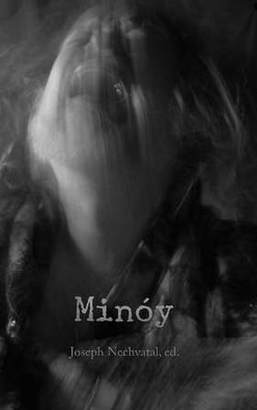
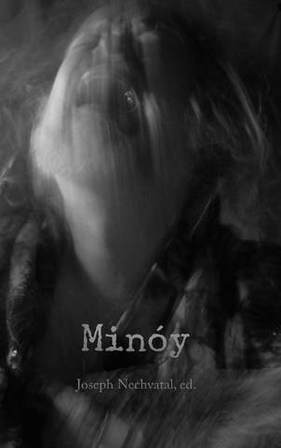
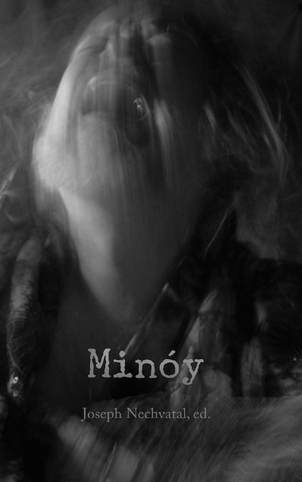
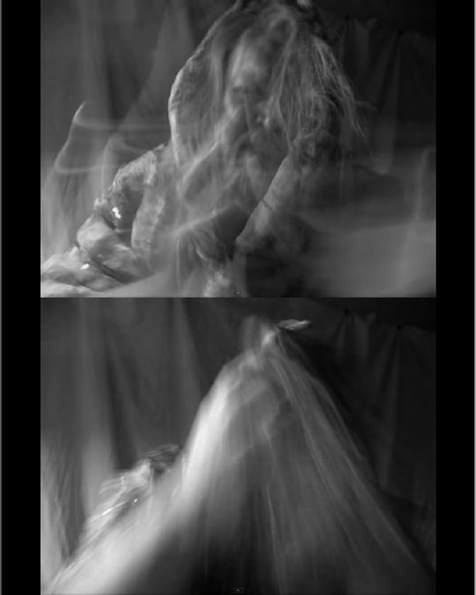
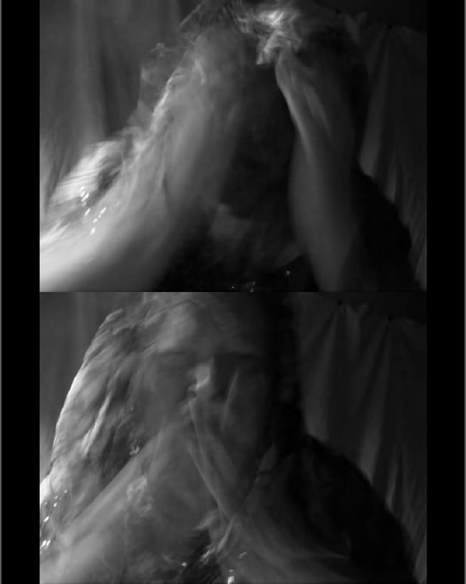
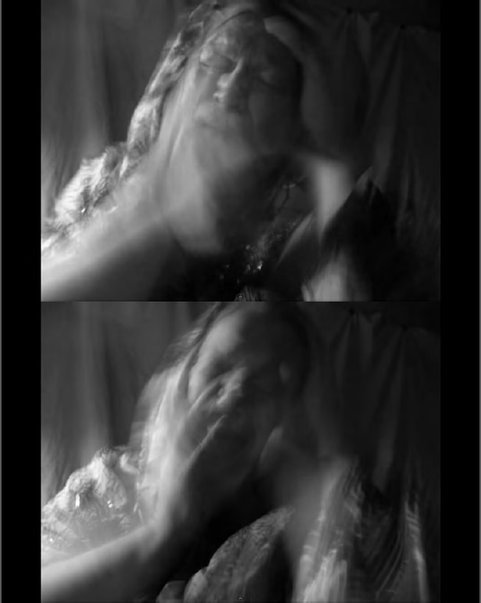
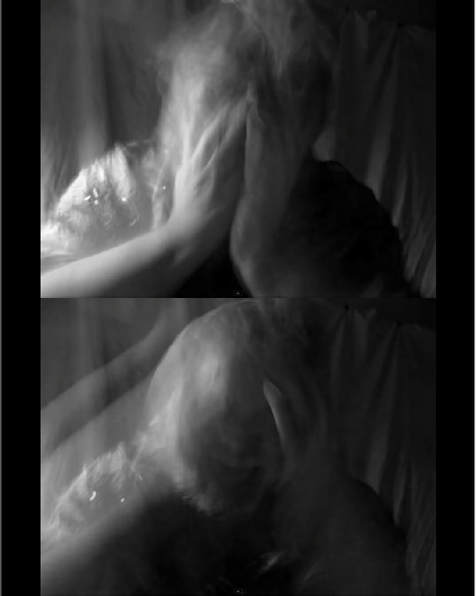
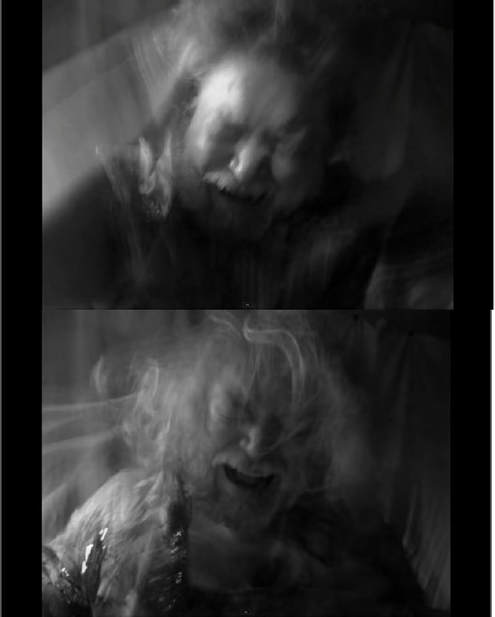
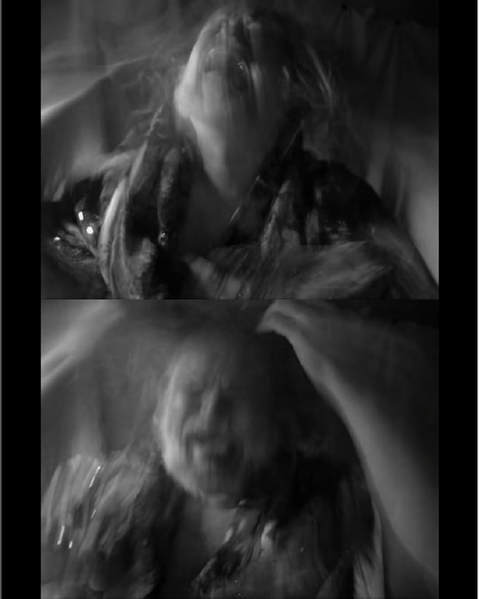
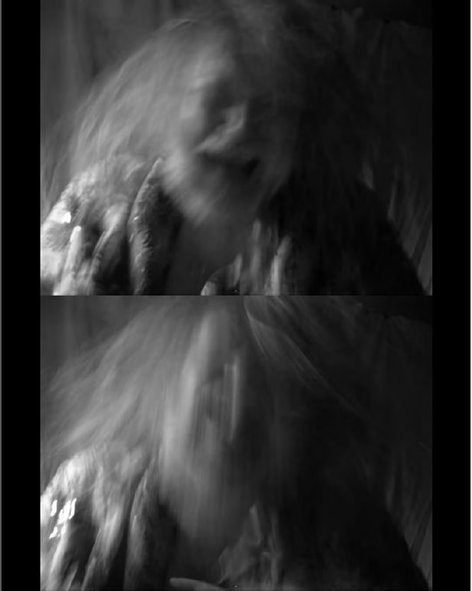
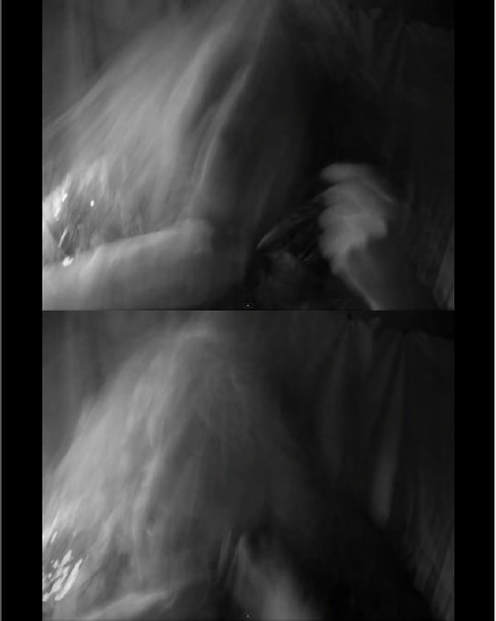
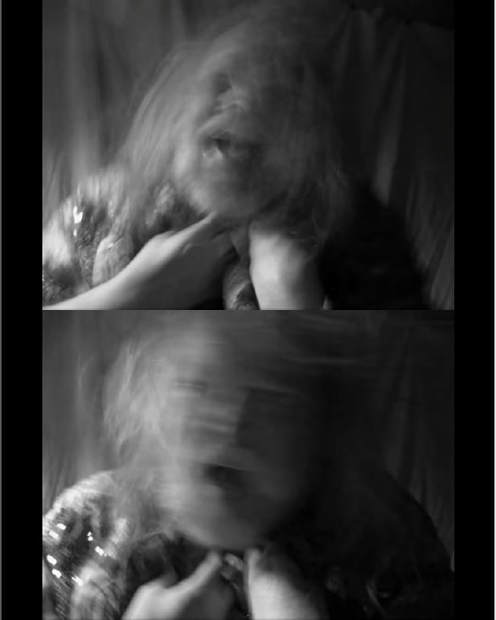
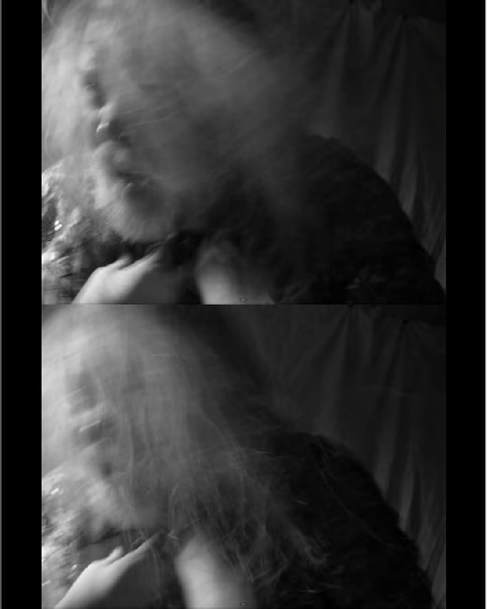
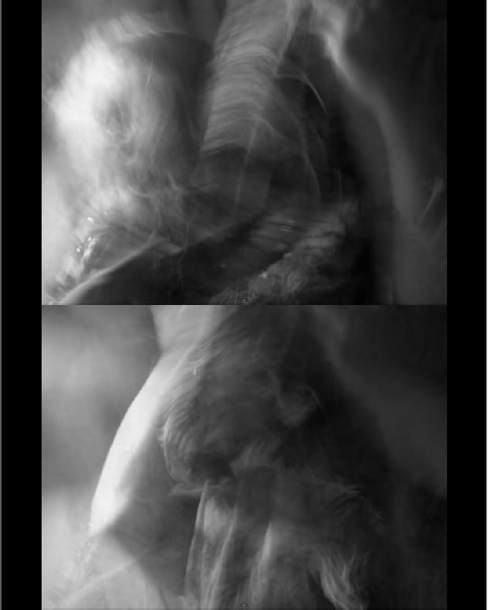
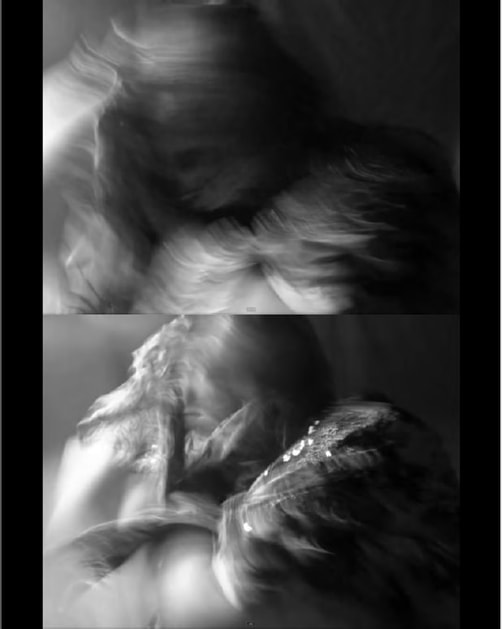
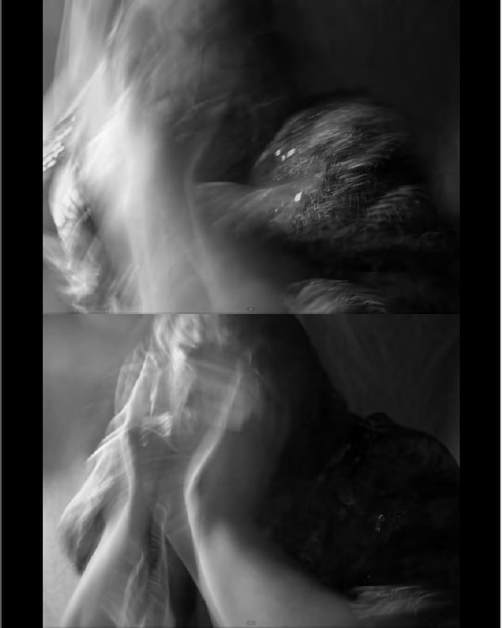
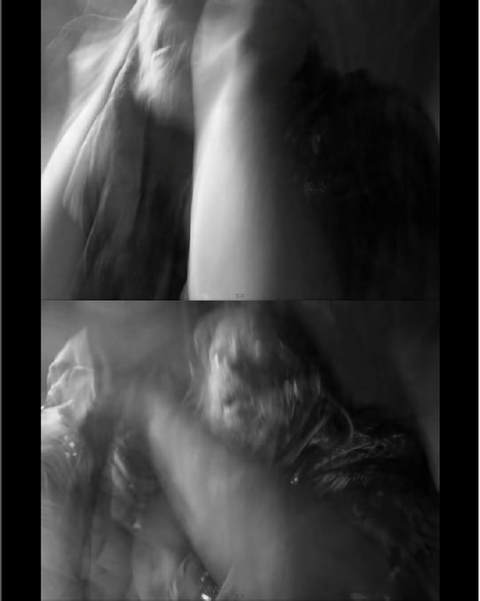
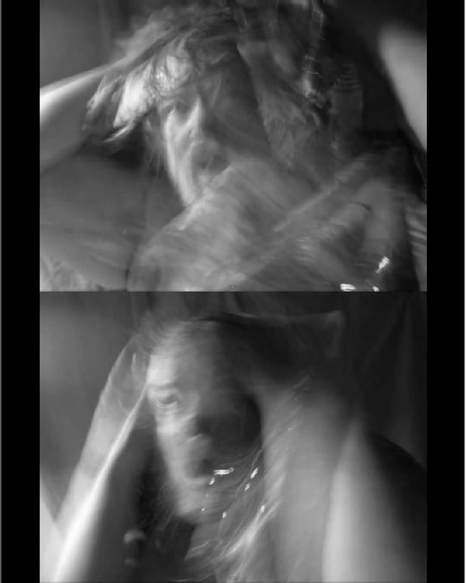
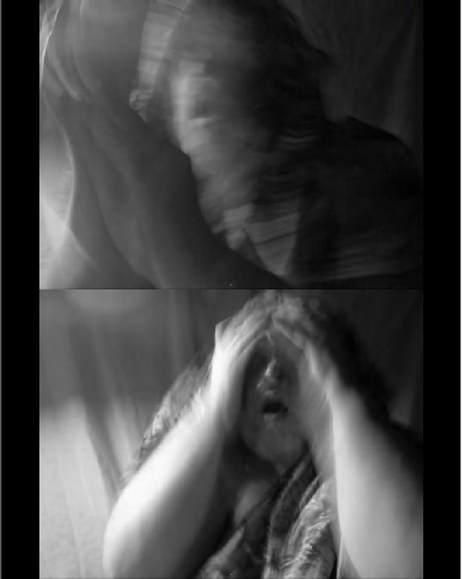
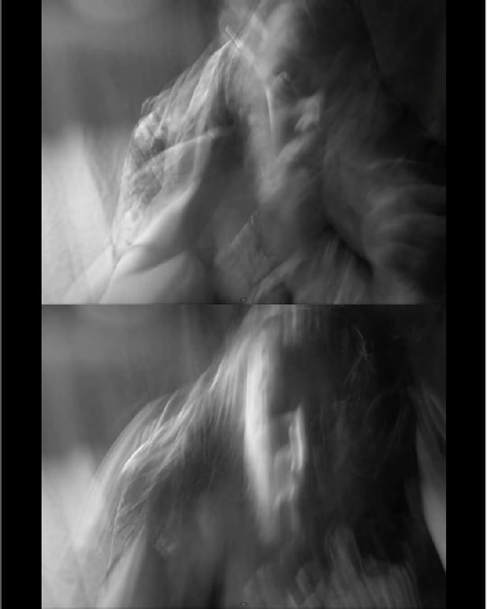
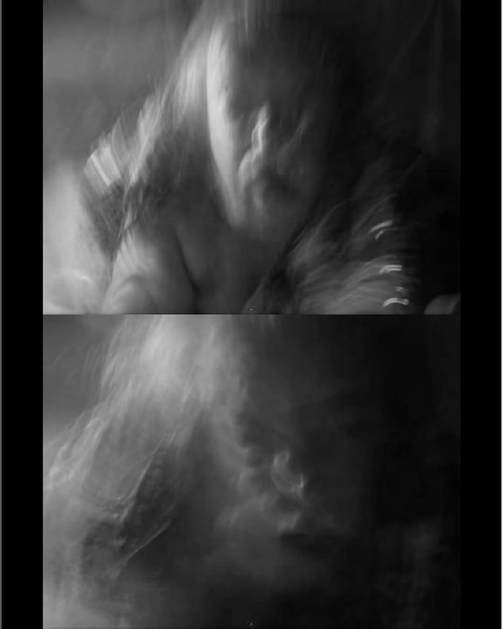
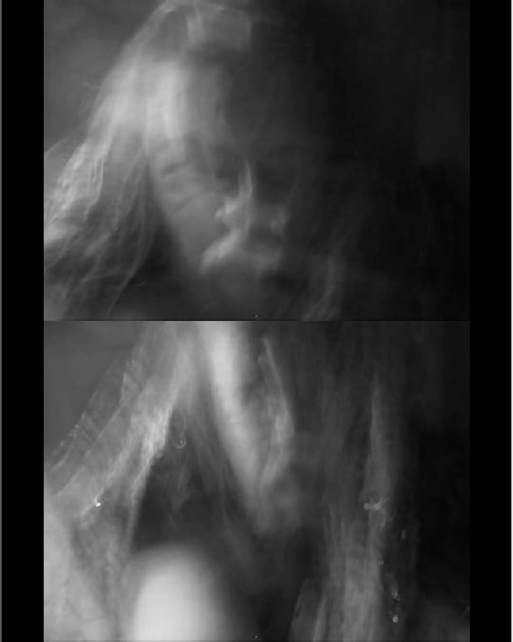
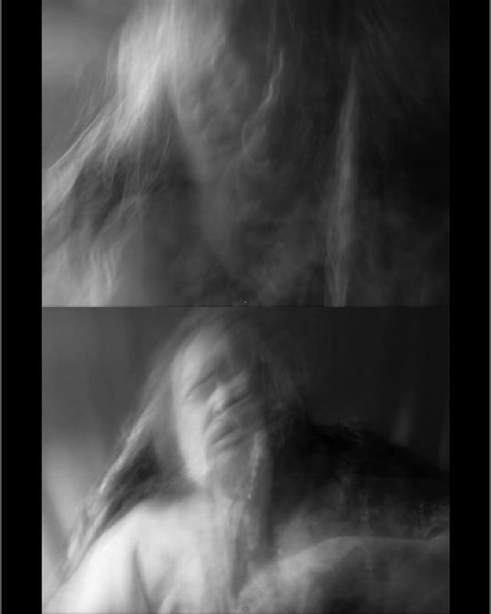
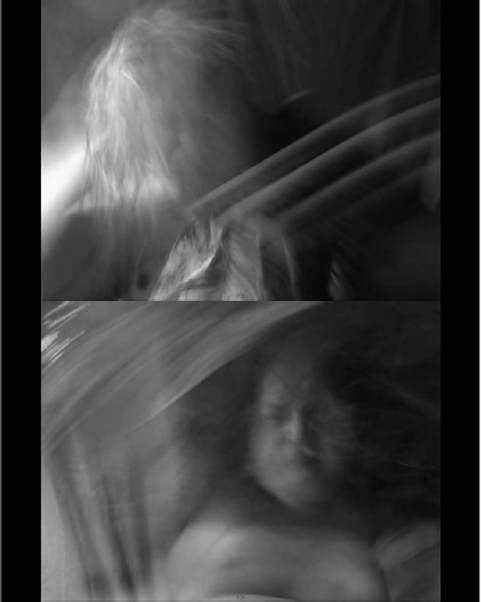
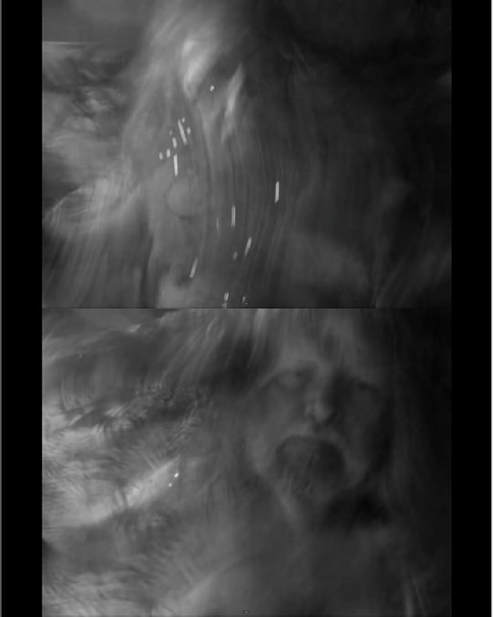
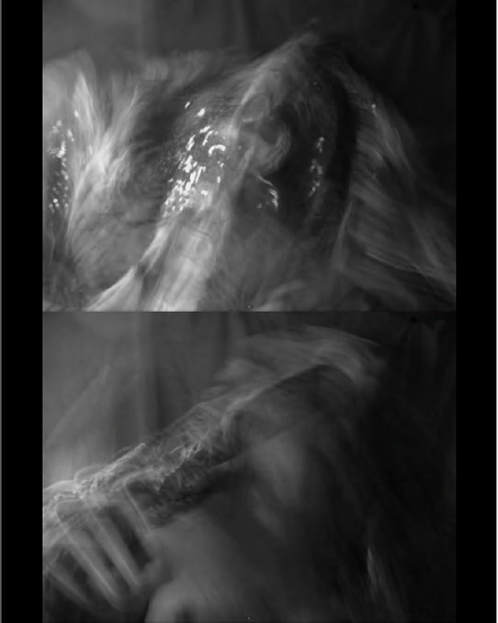

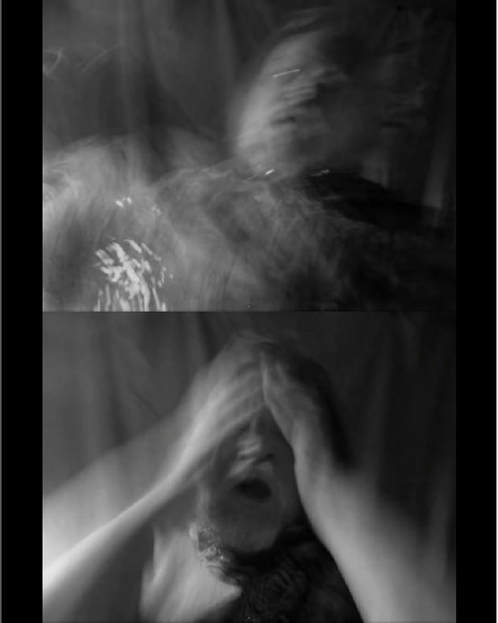
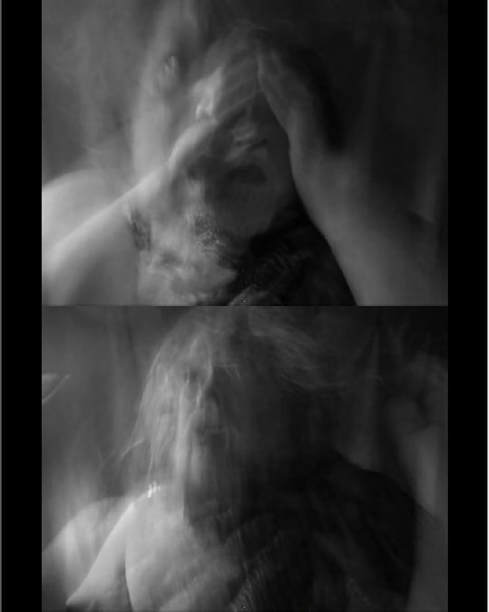
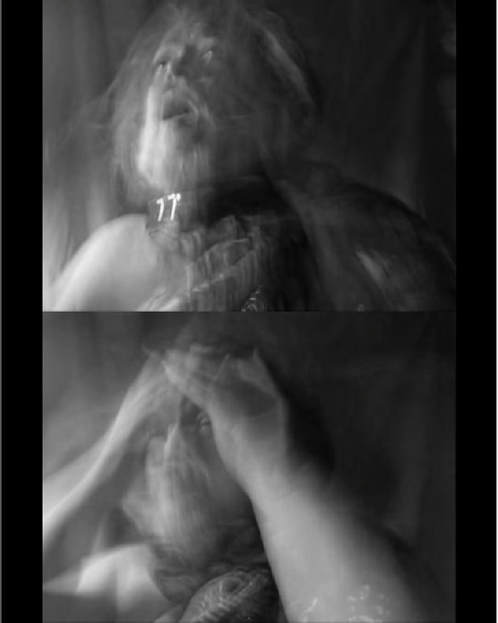
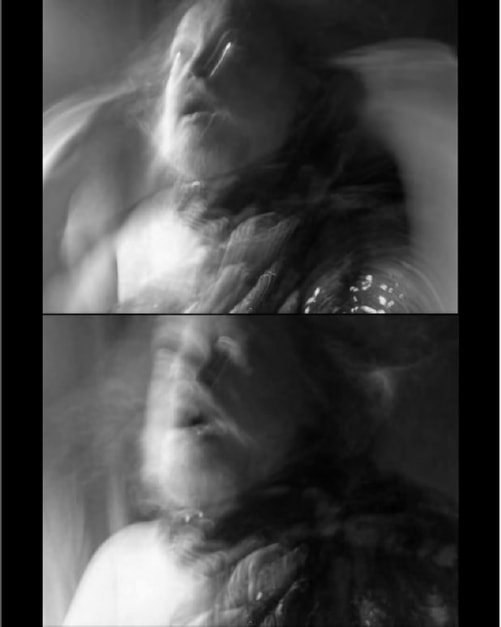
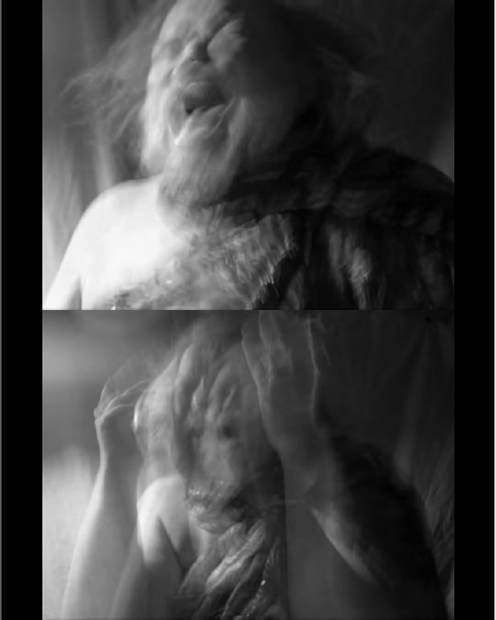
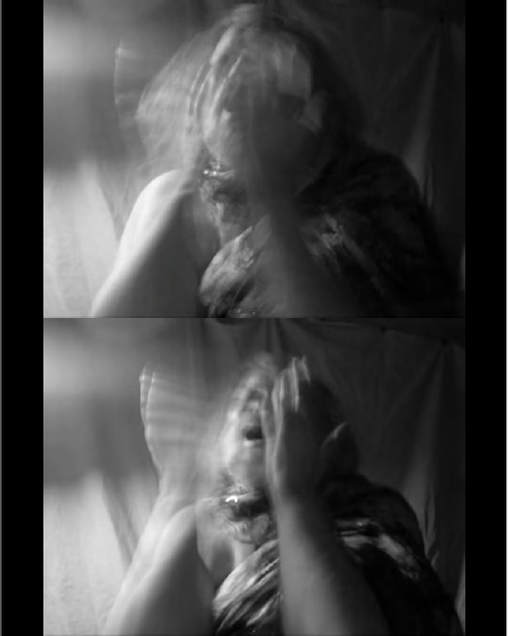
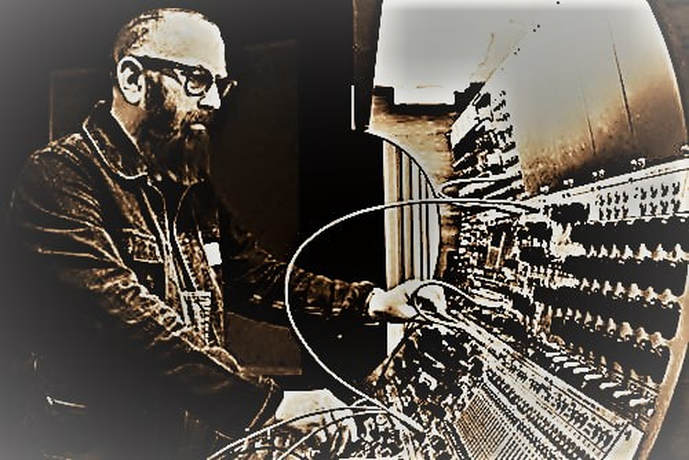
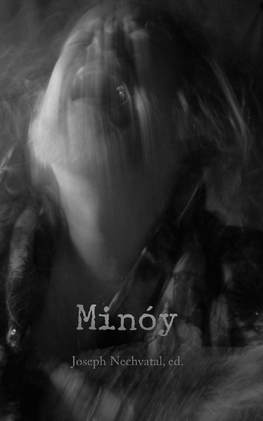
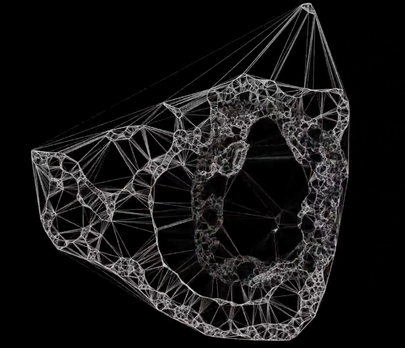


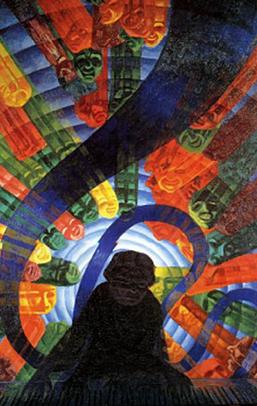
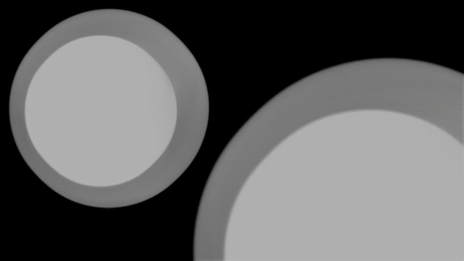
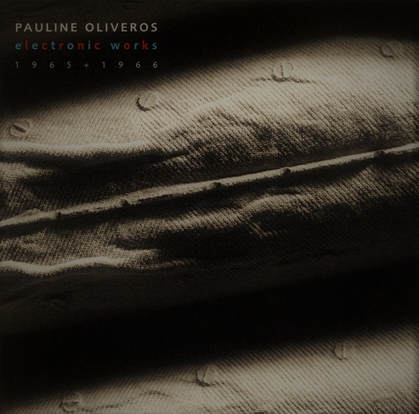
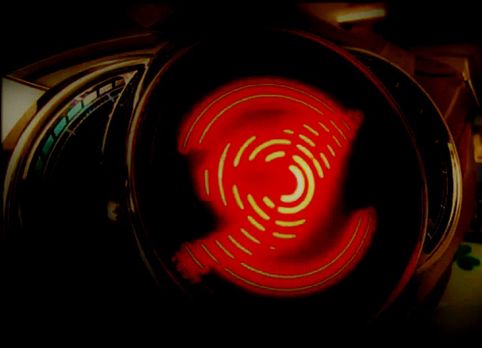
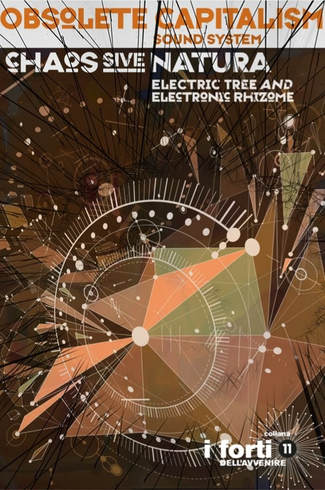
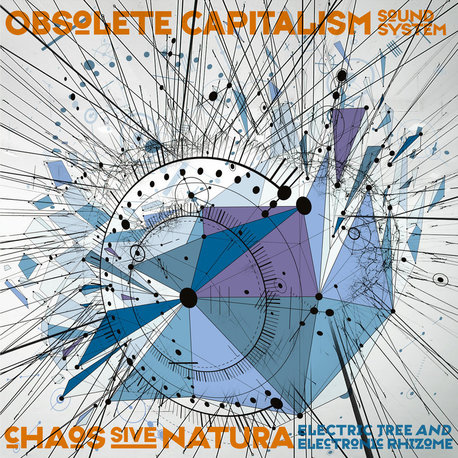
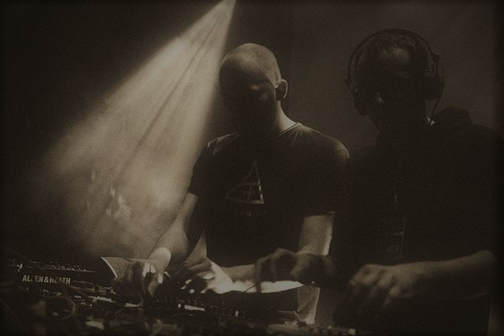
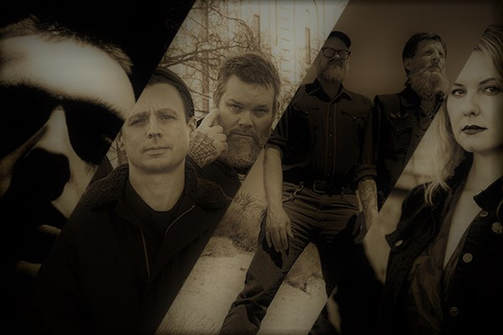

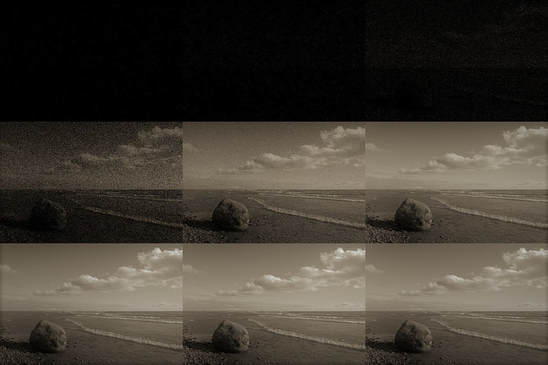
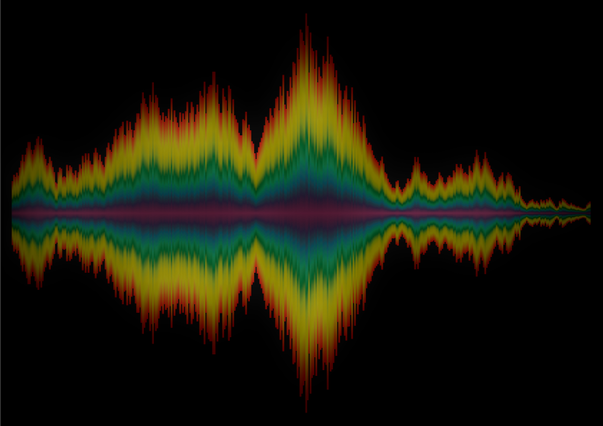

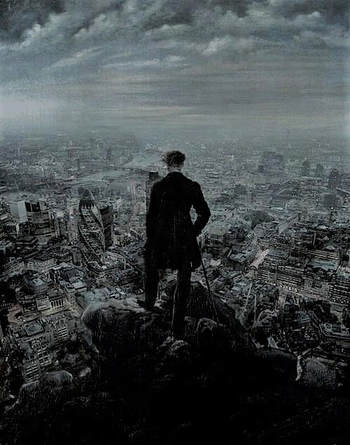
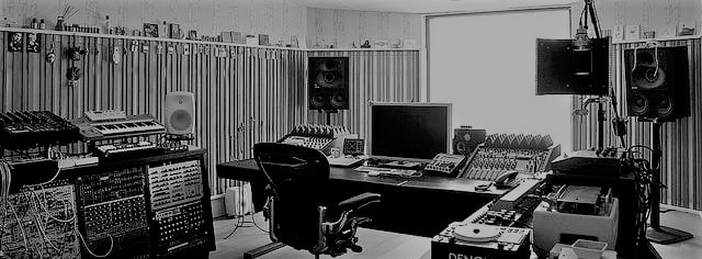
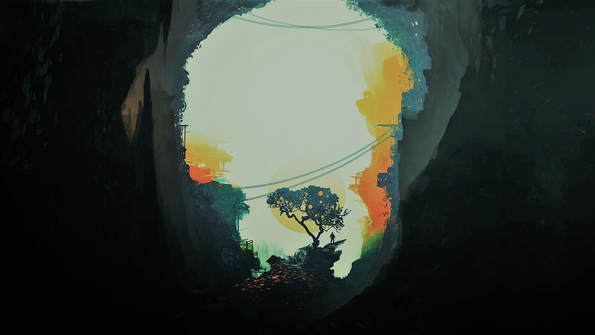

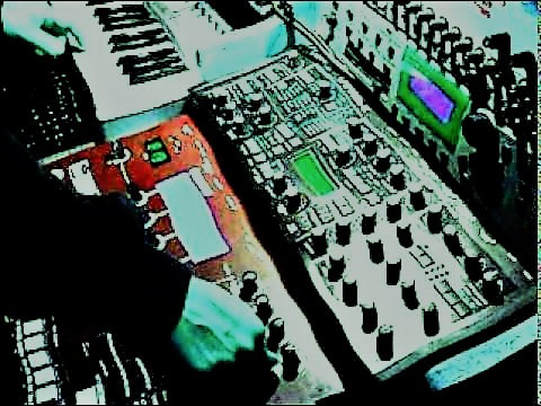
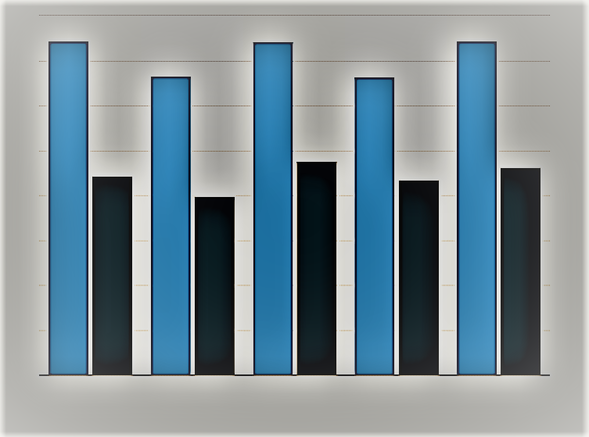
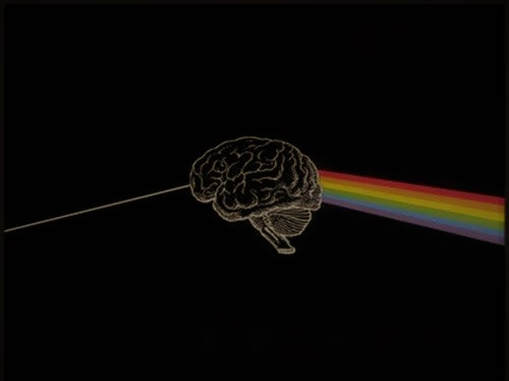
 RSS Feed
RSS Feed
